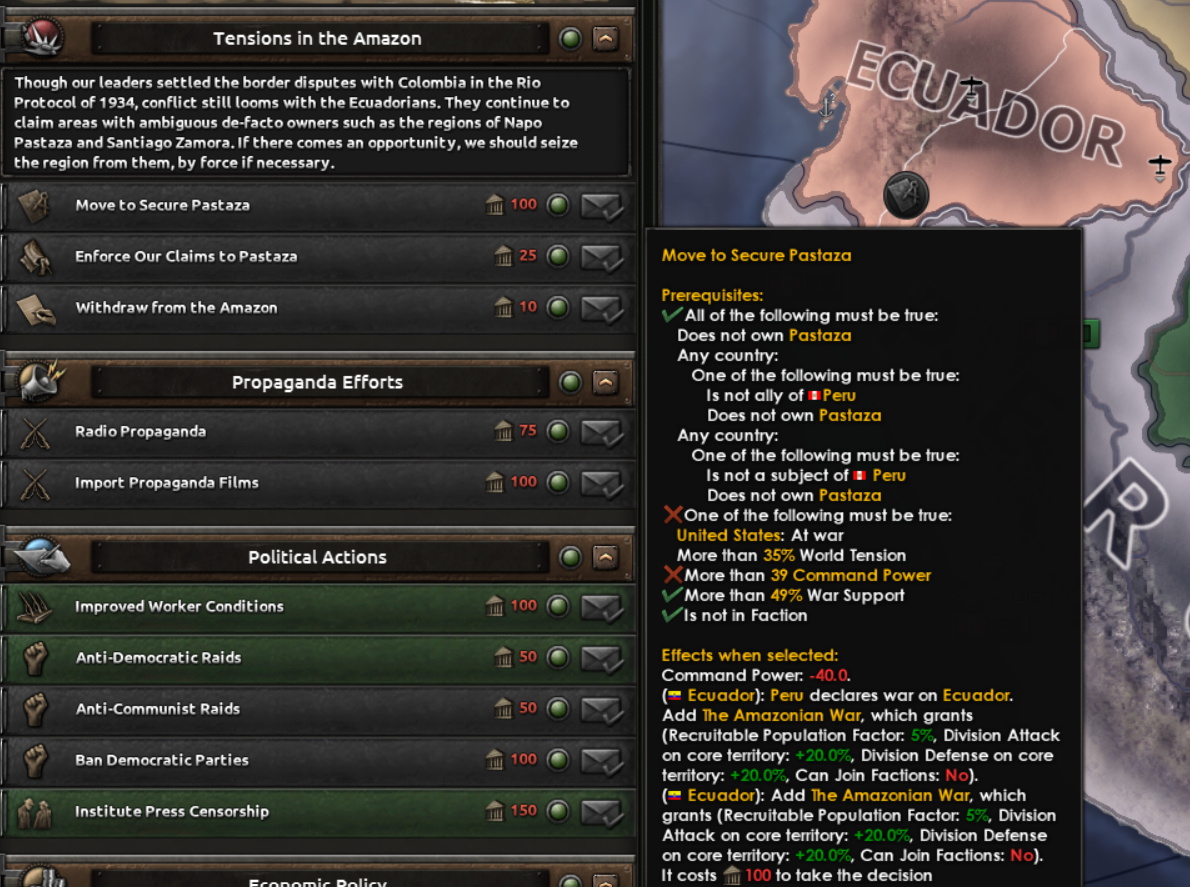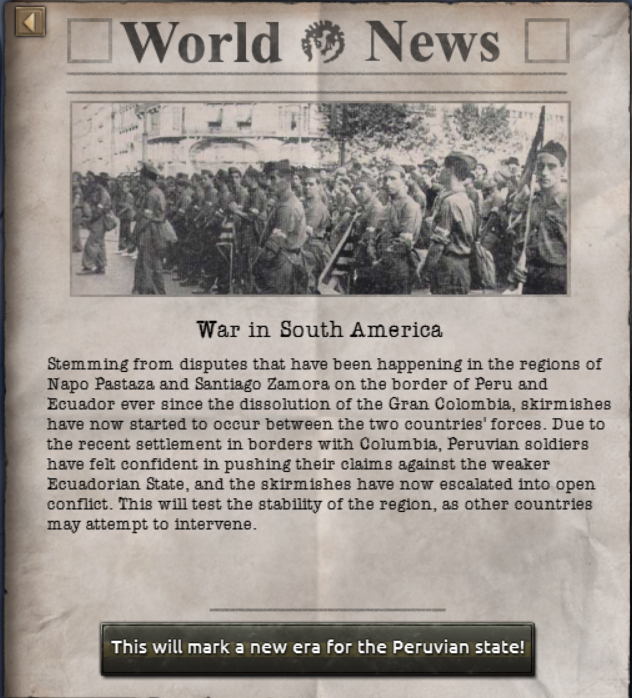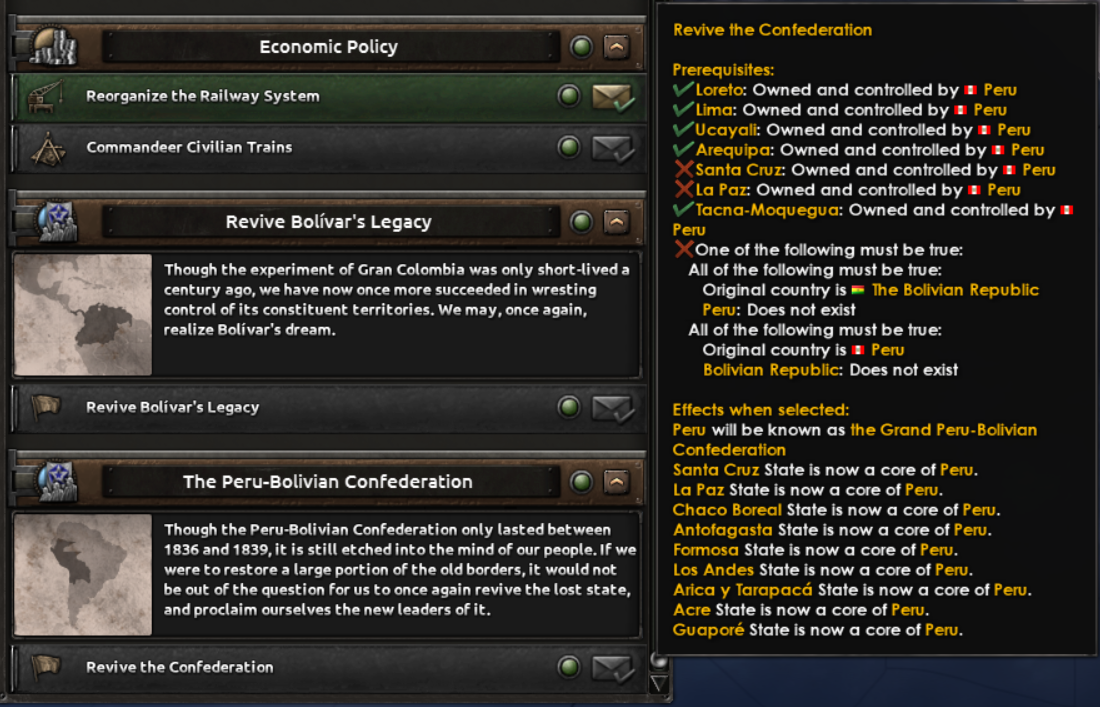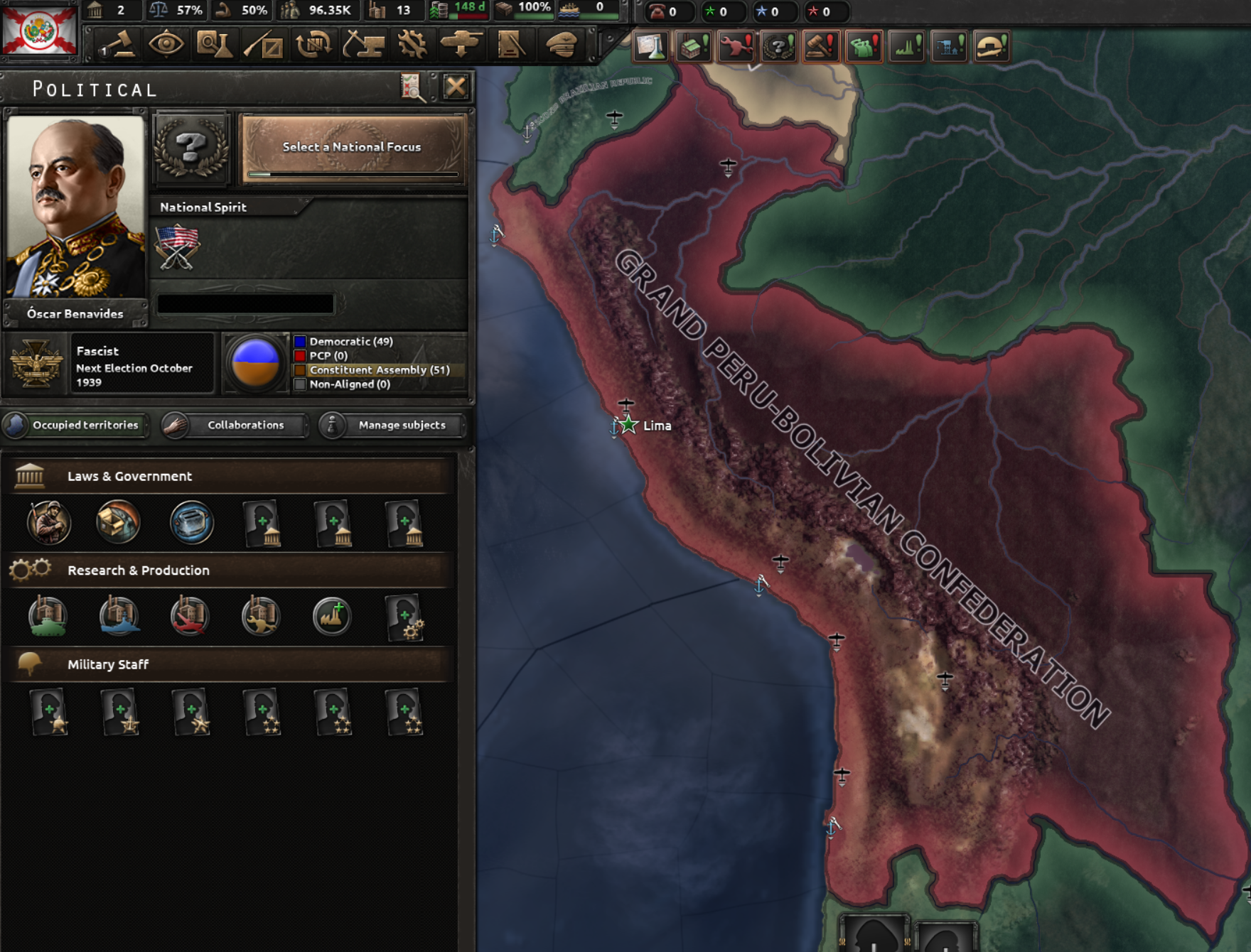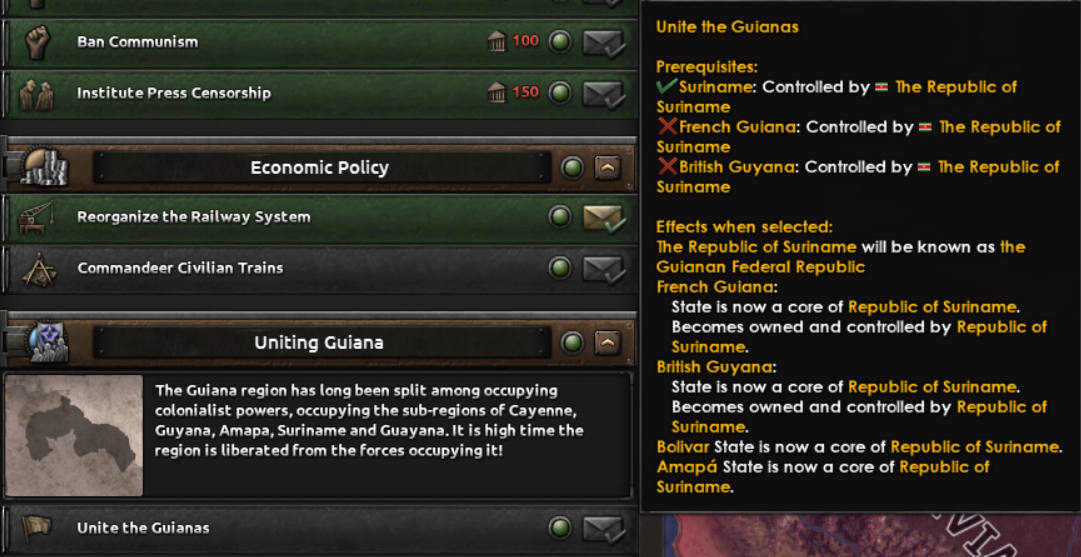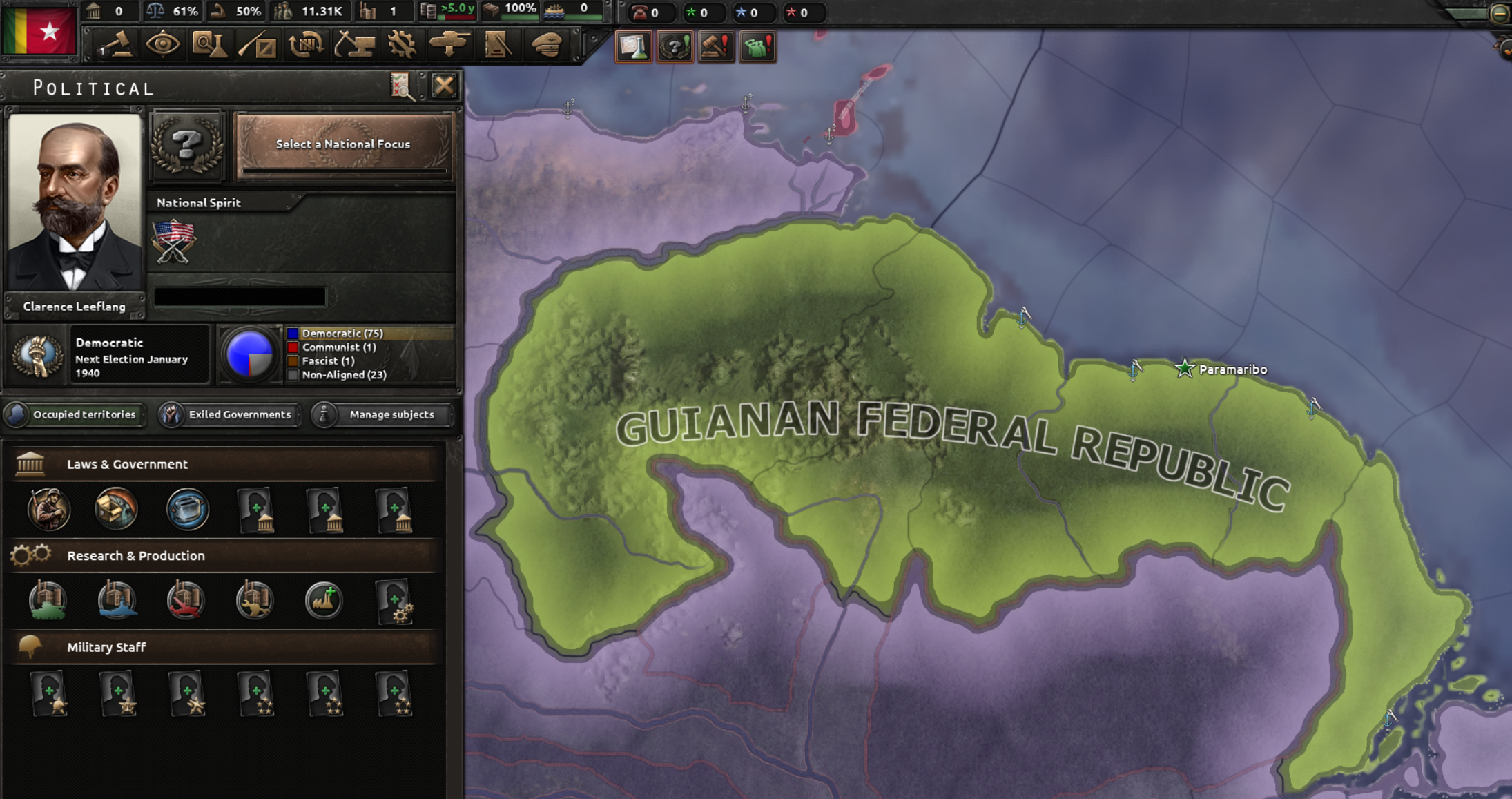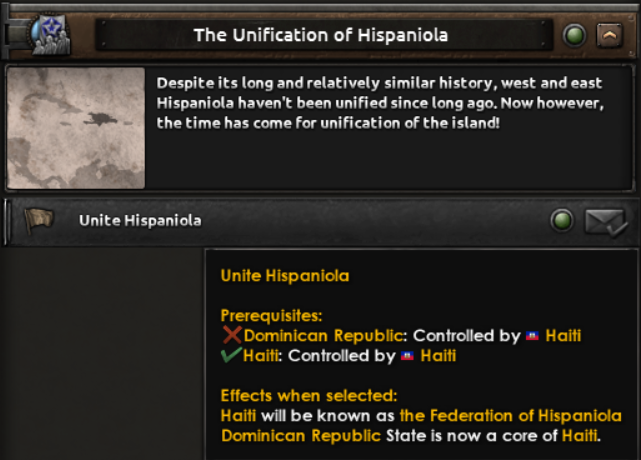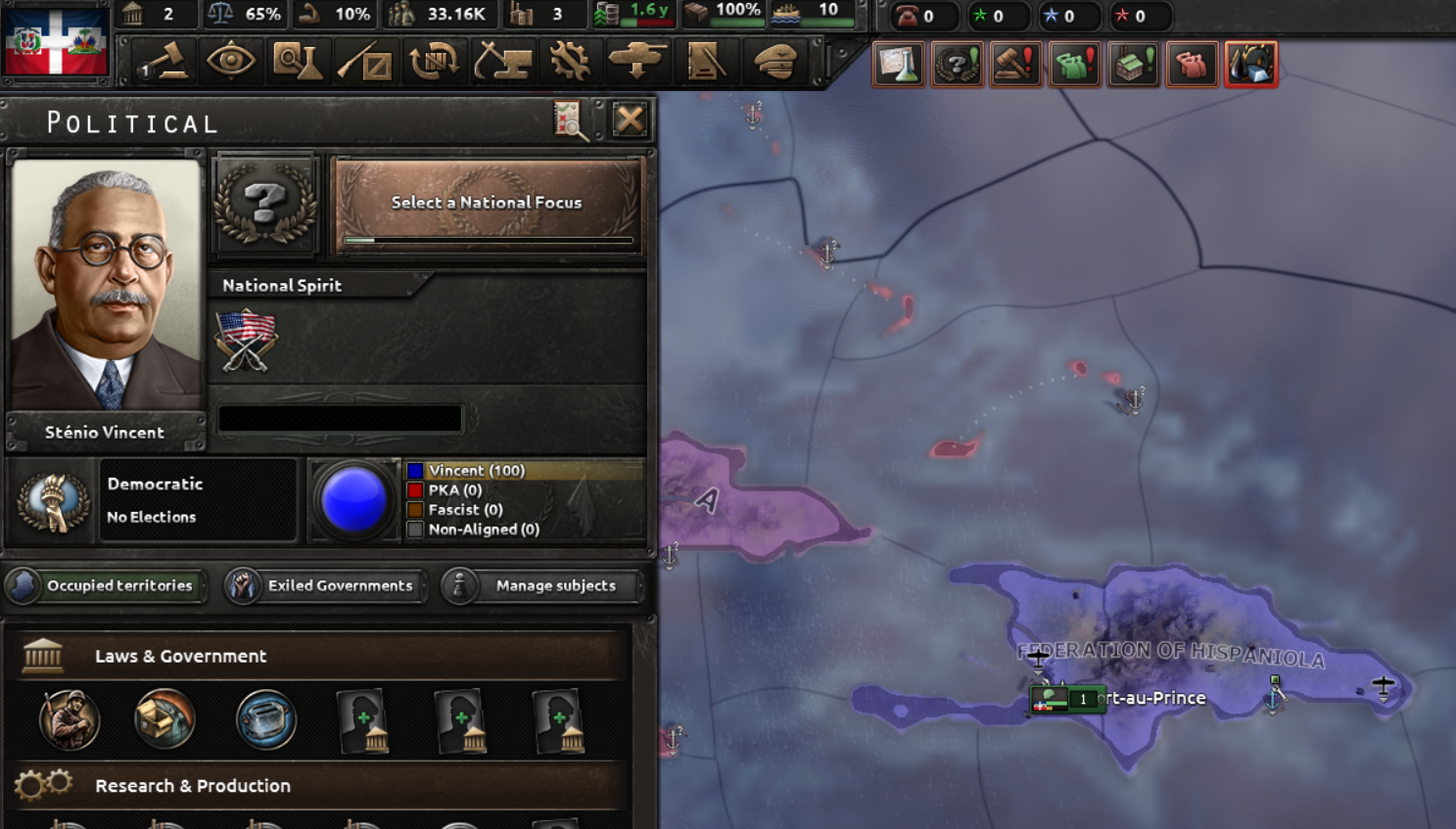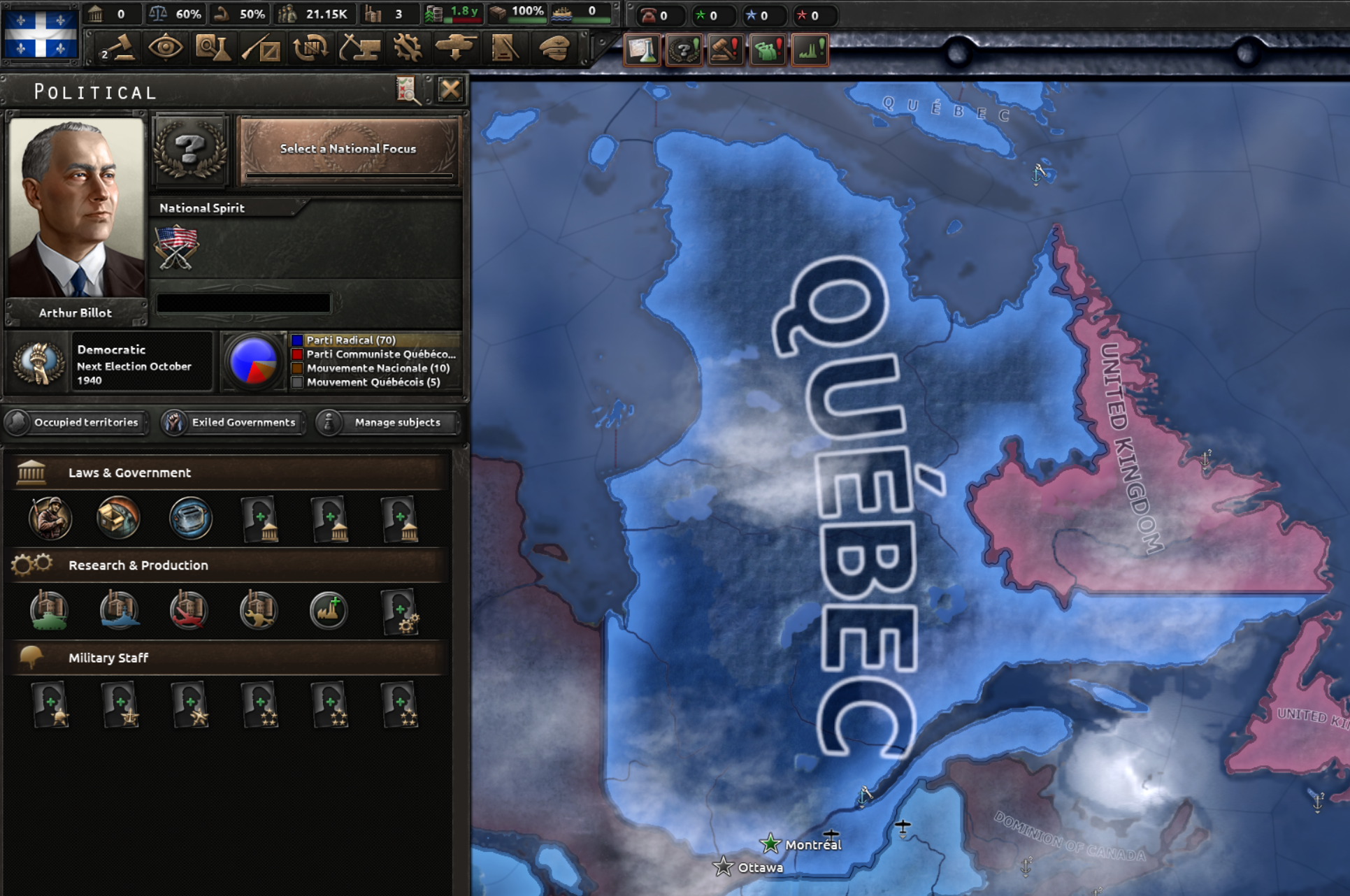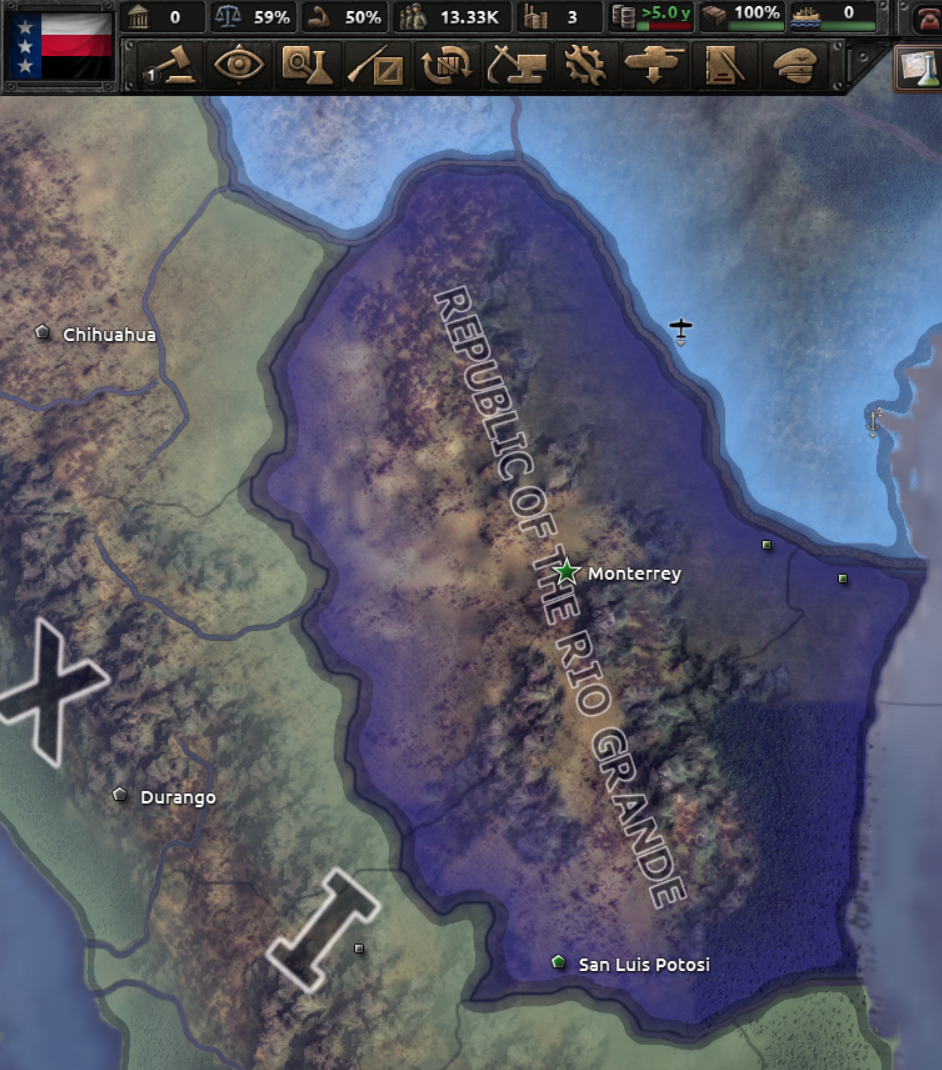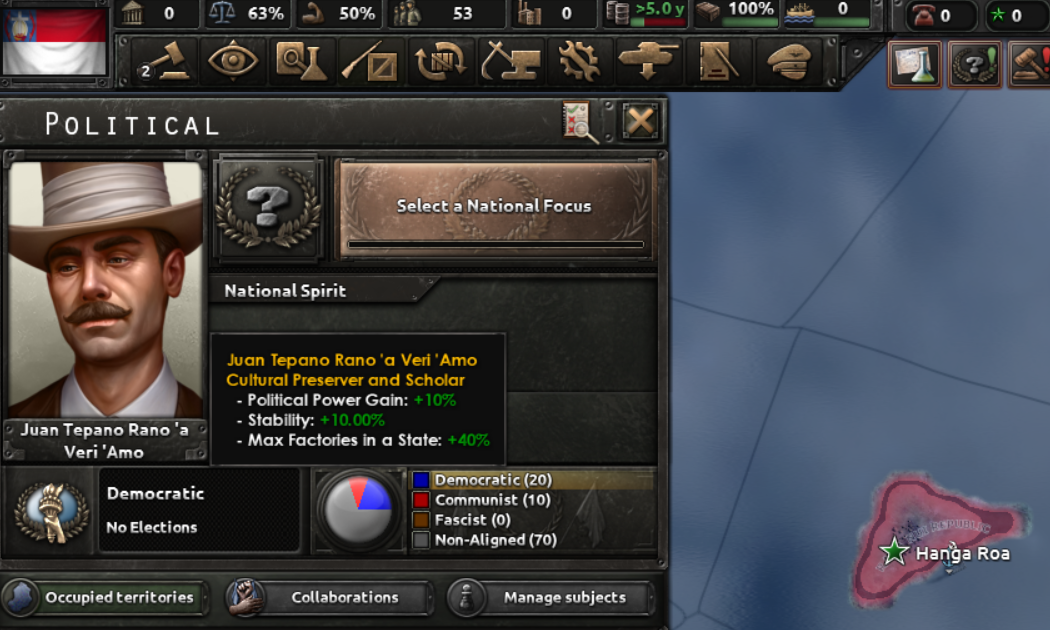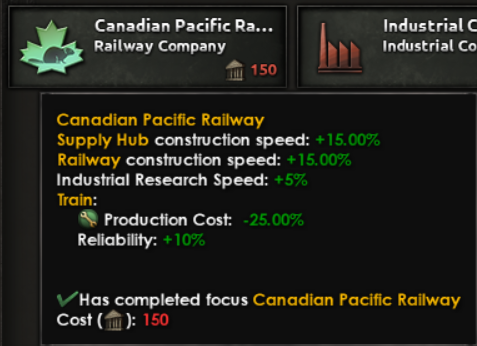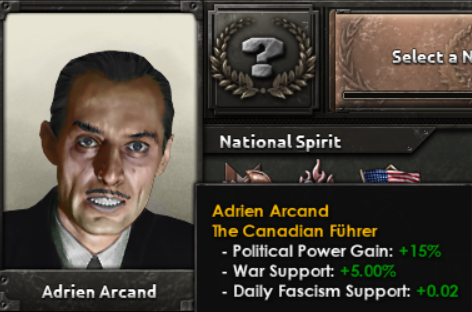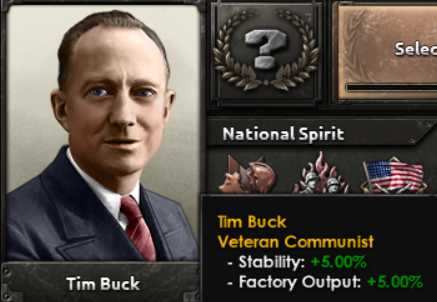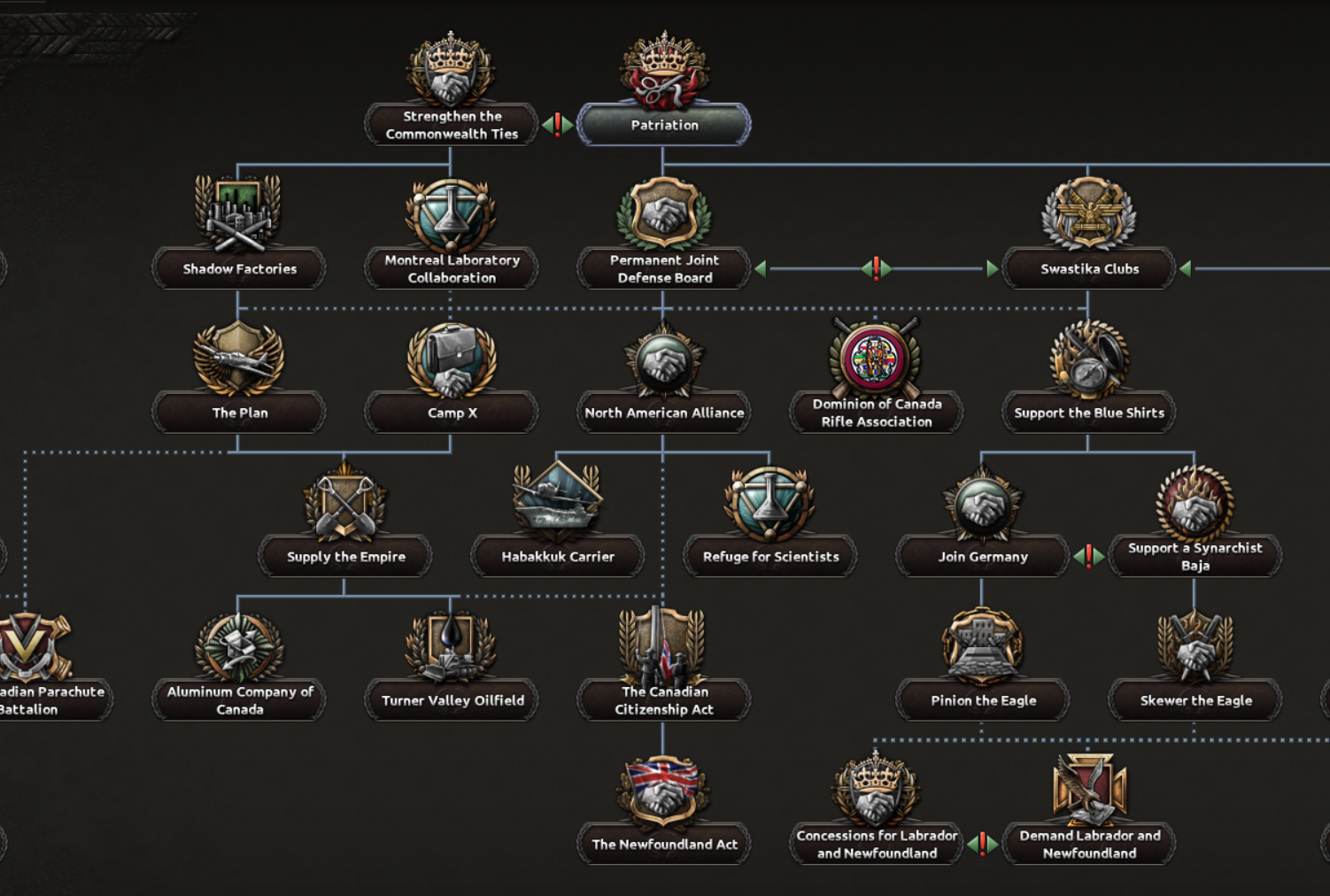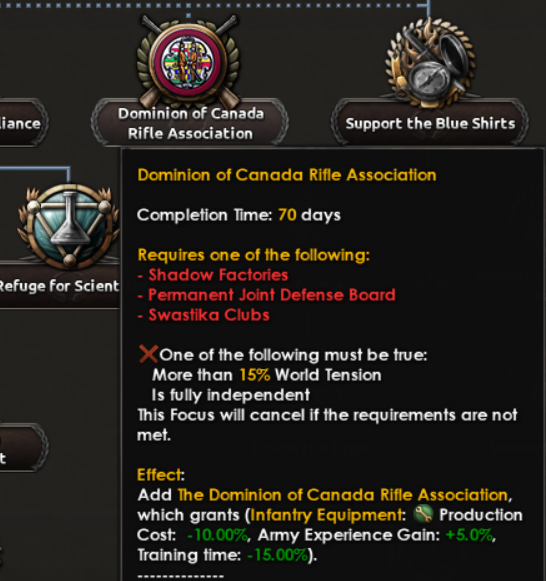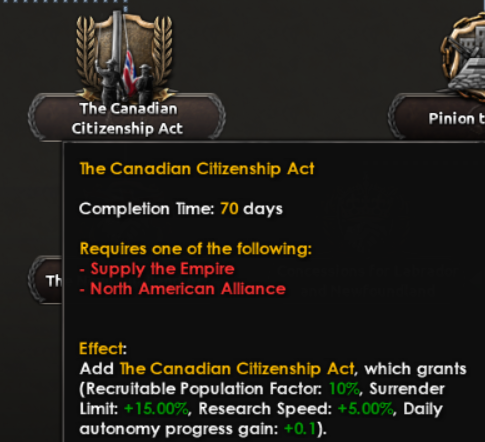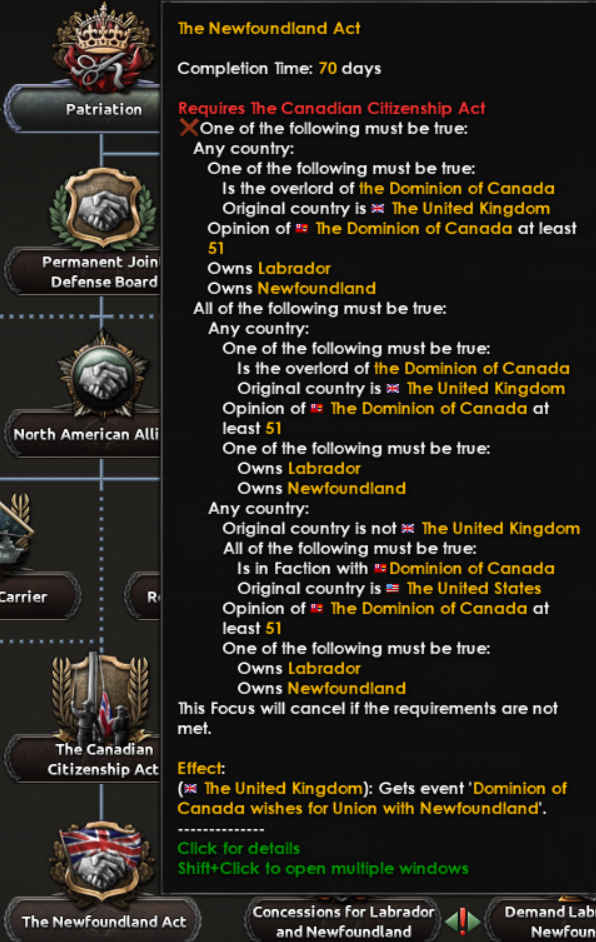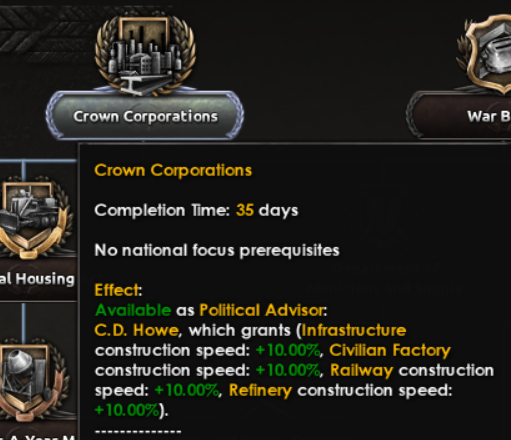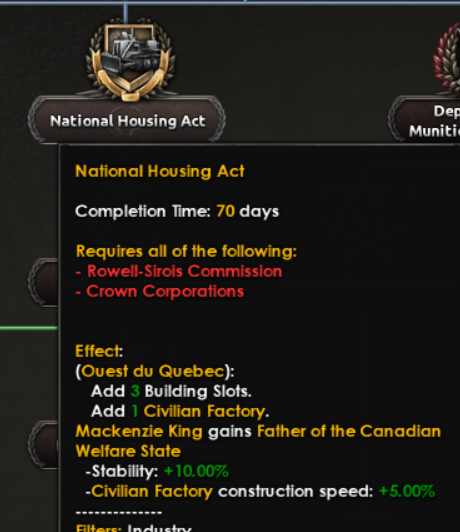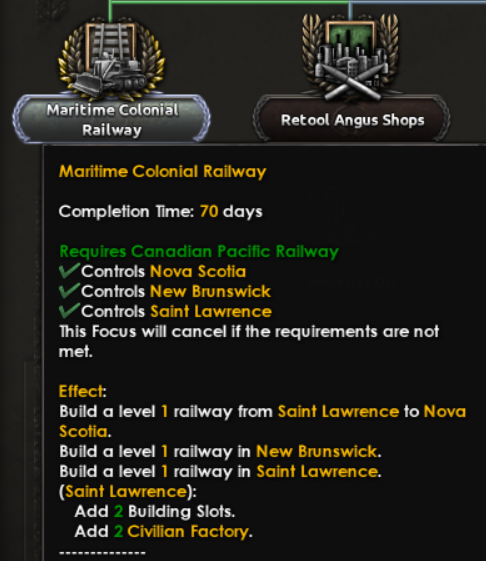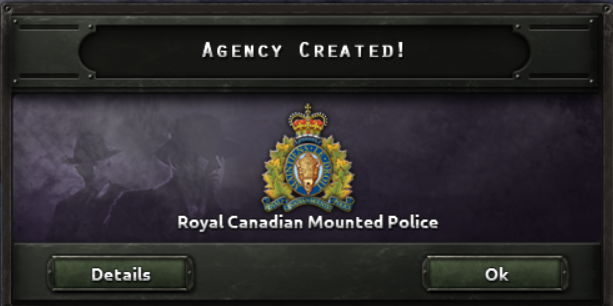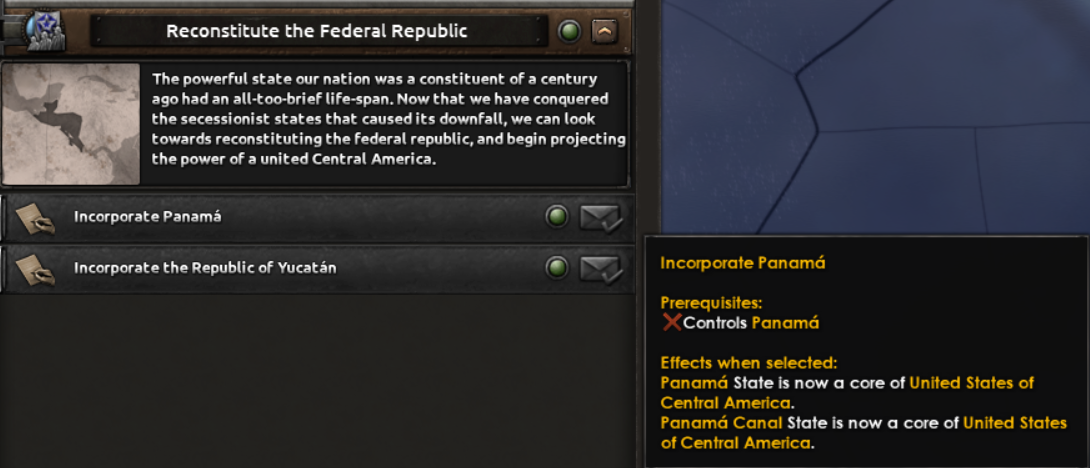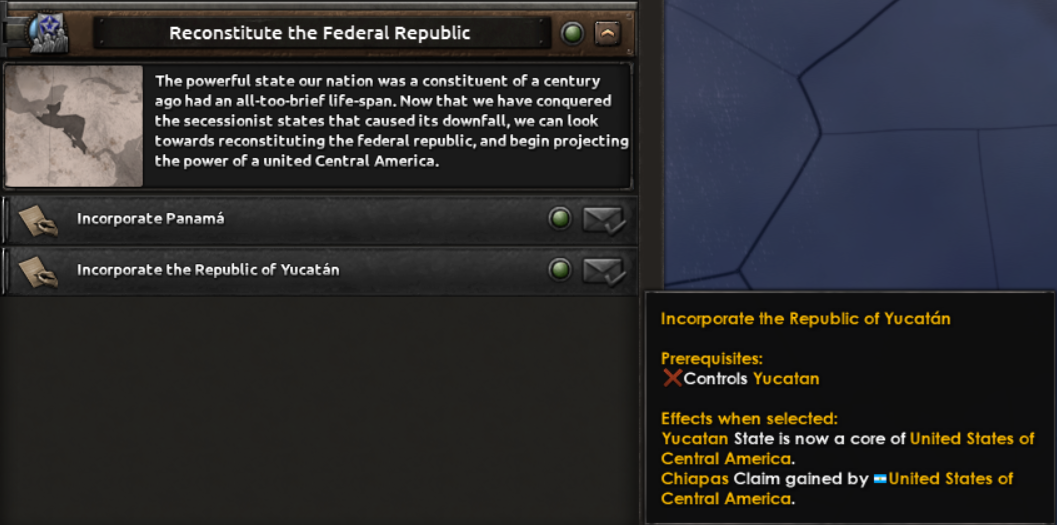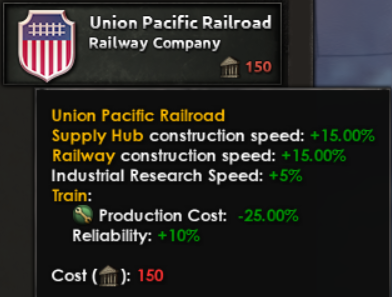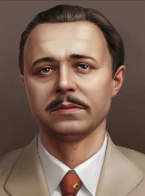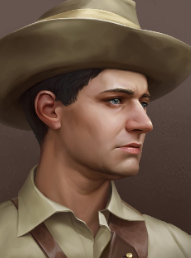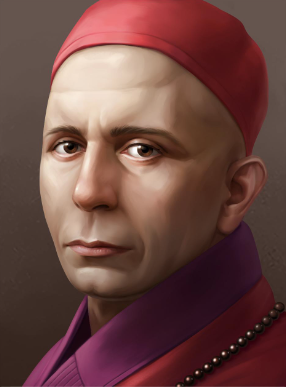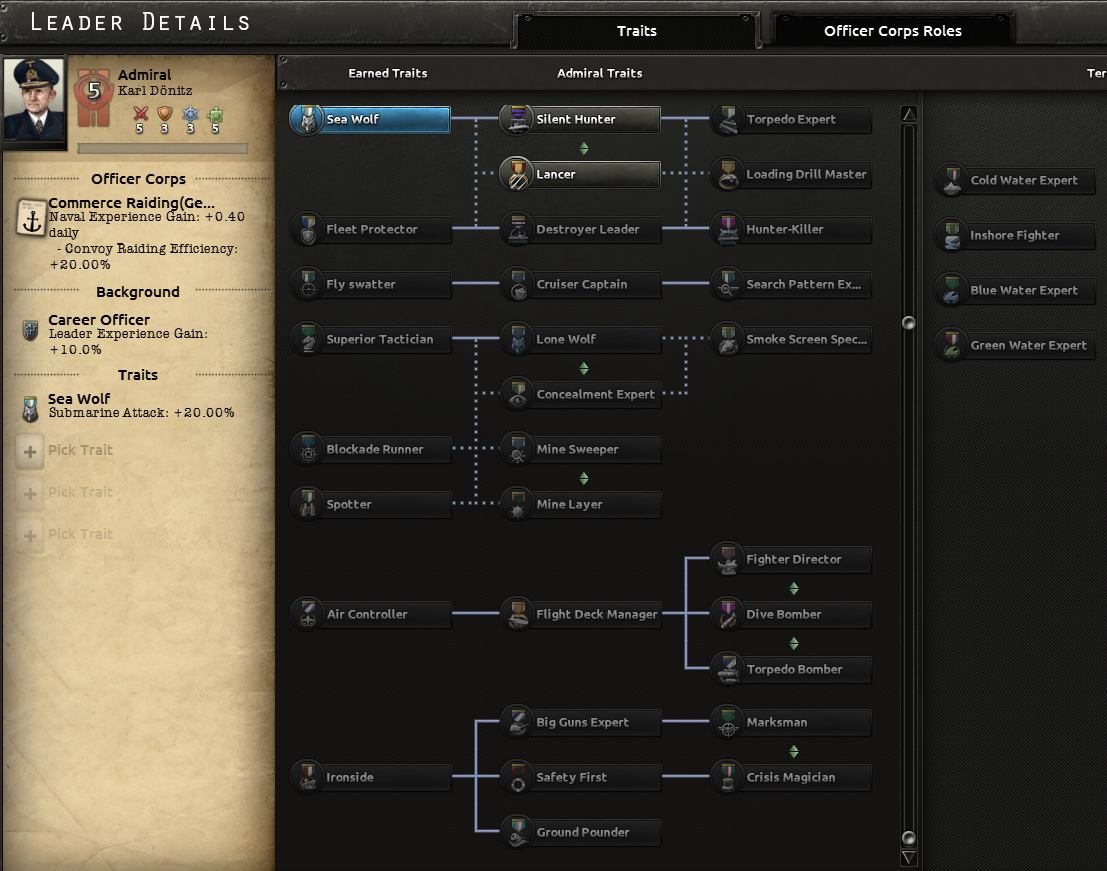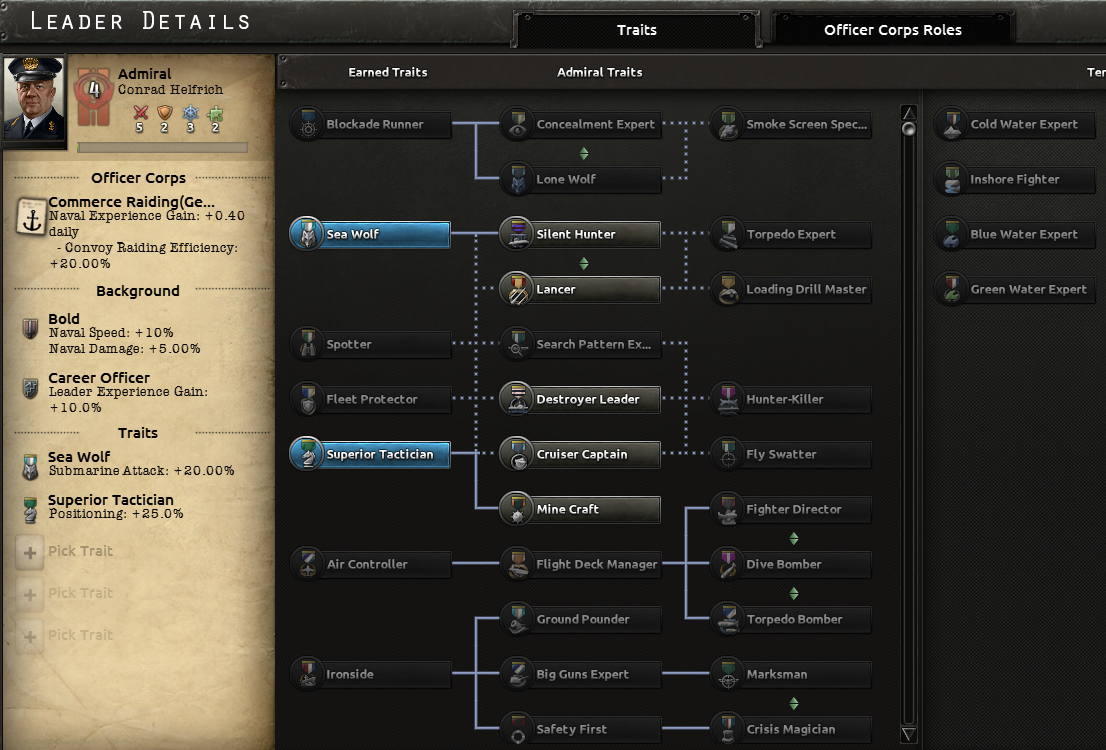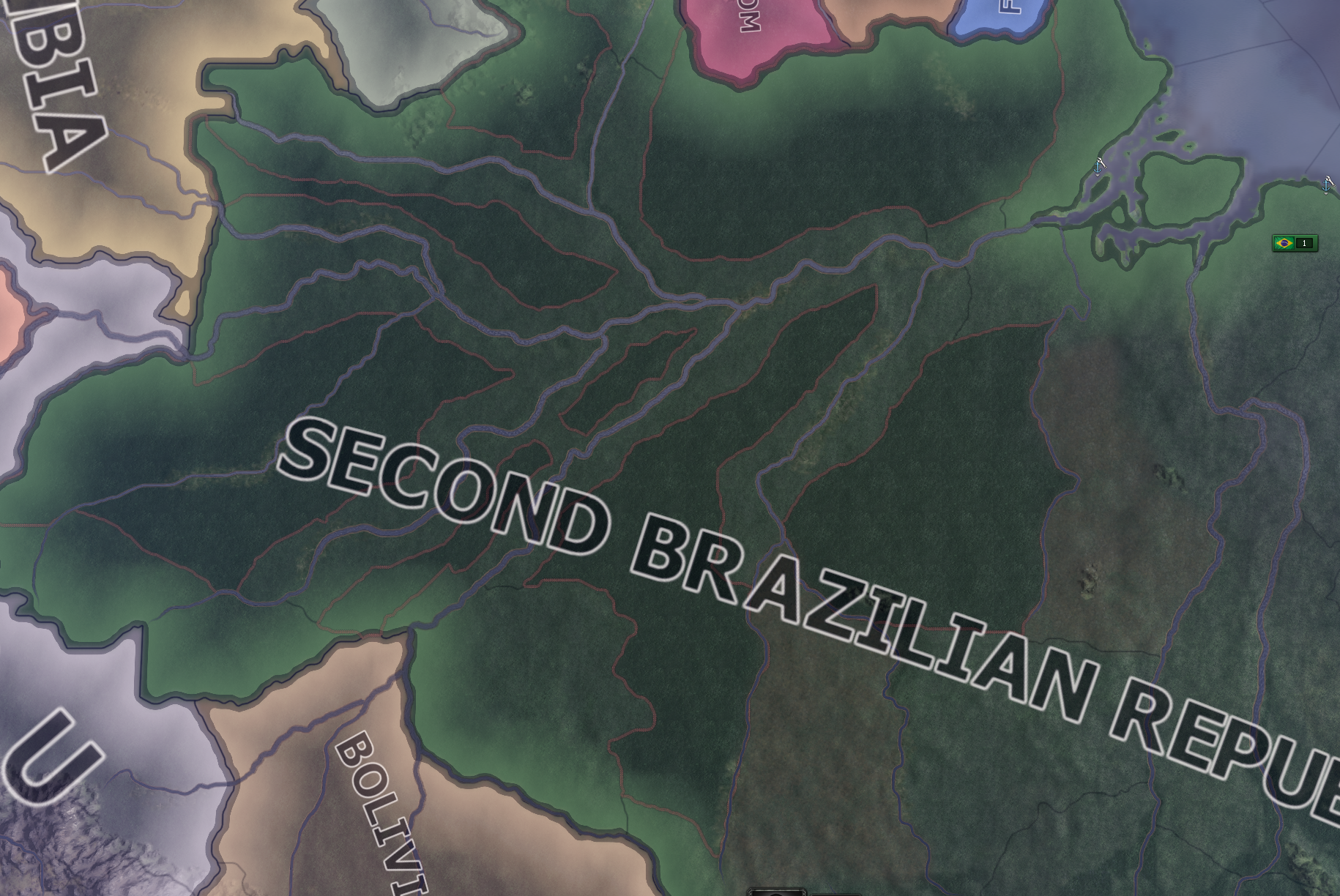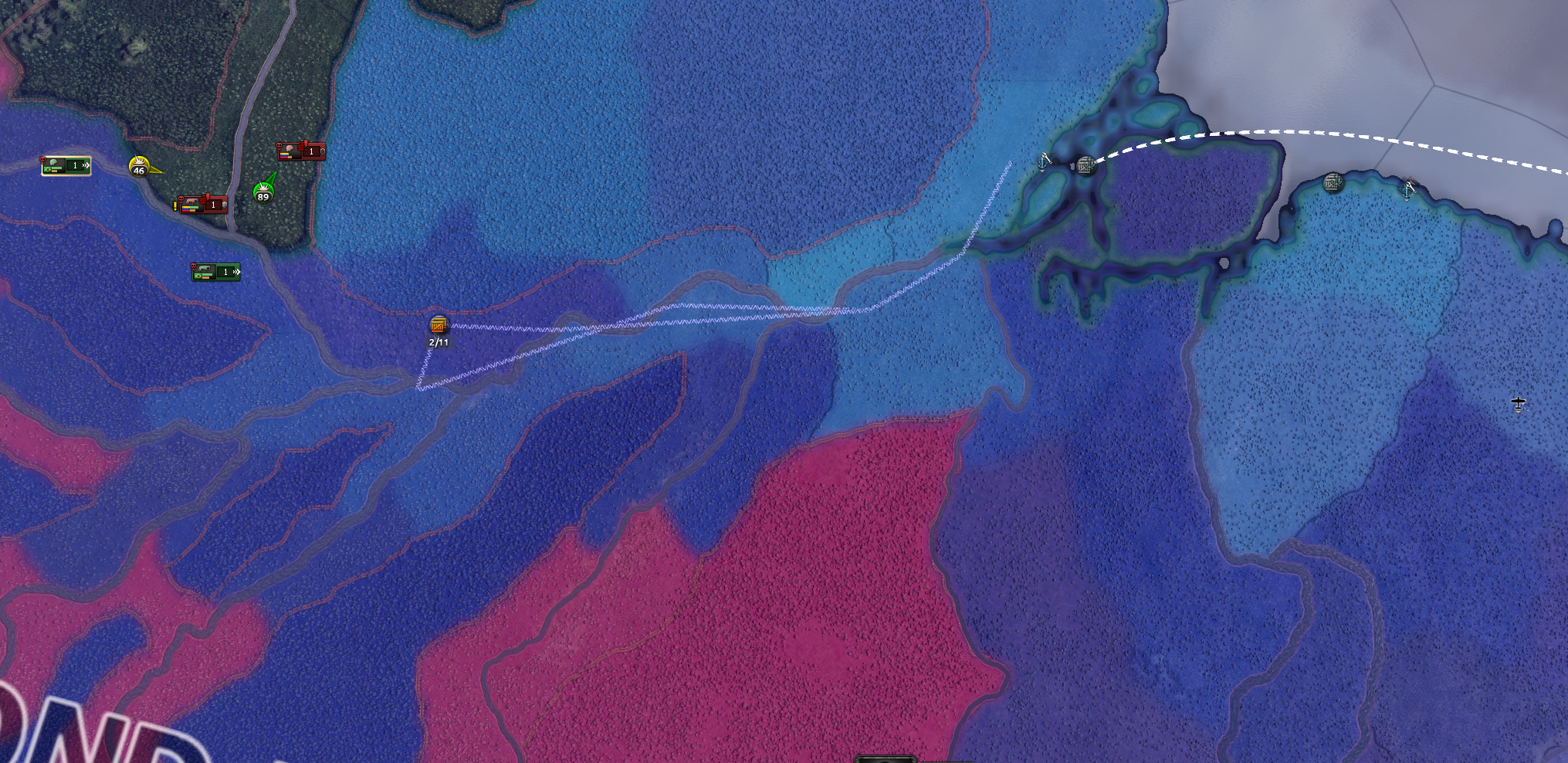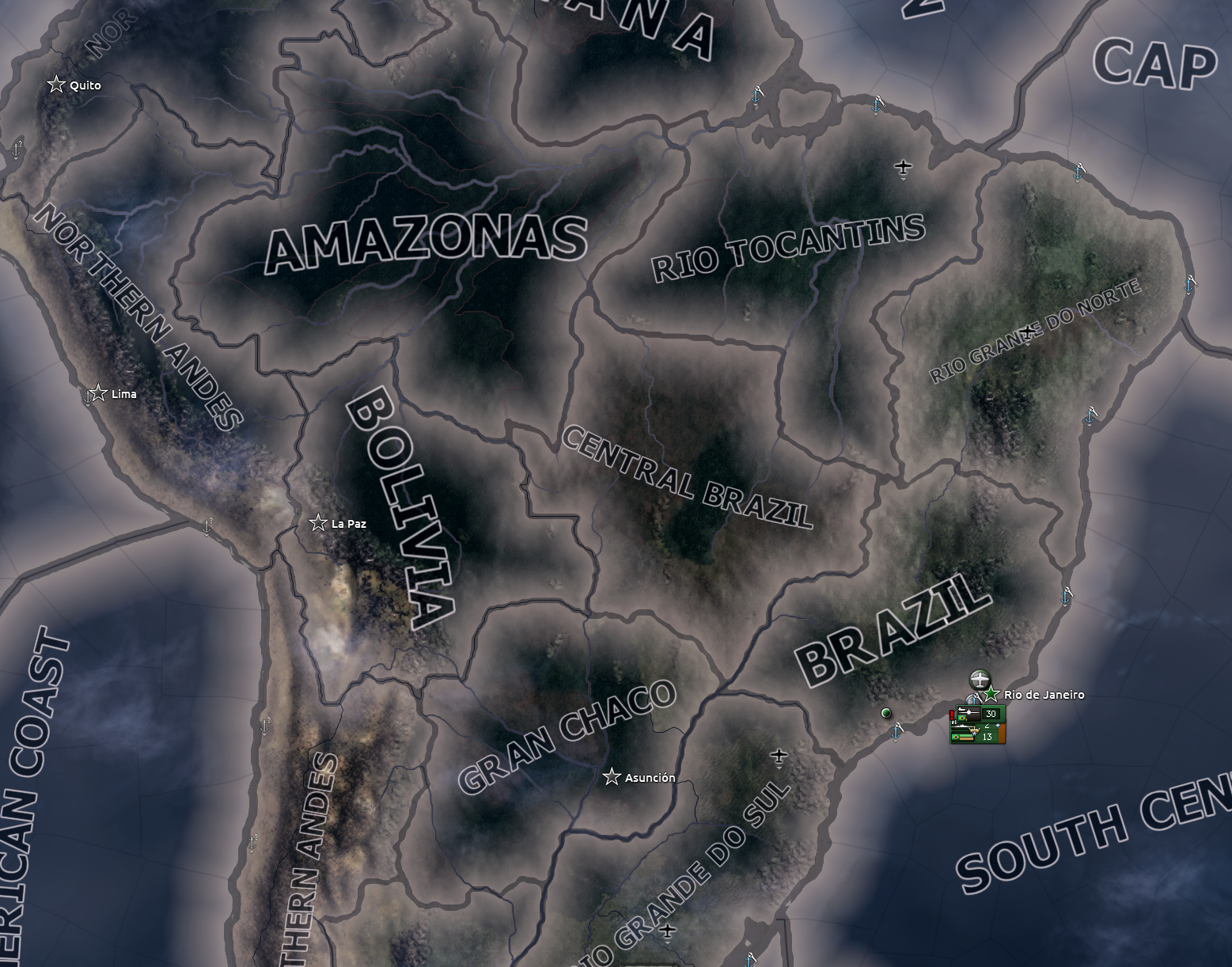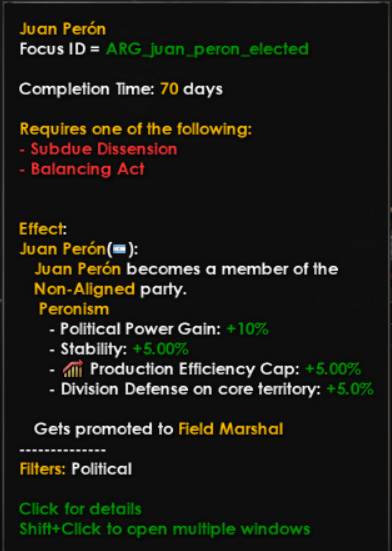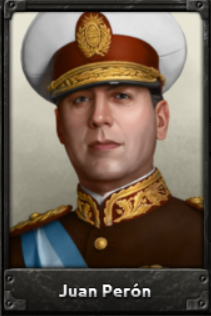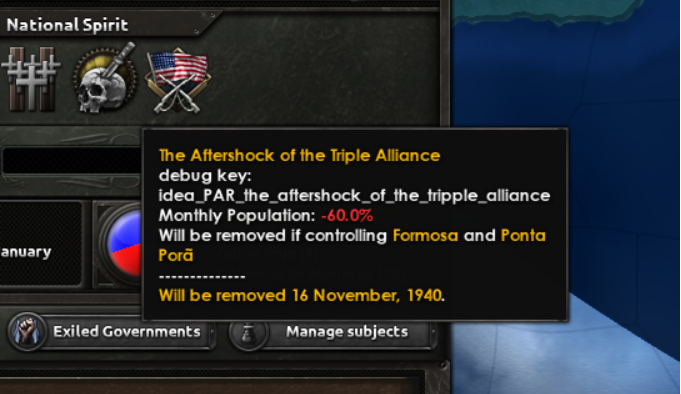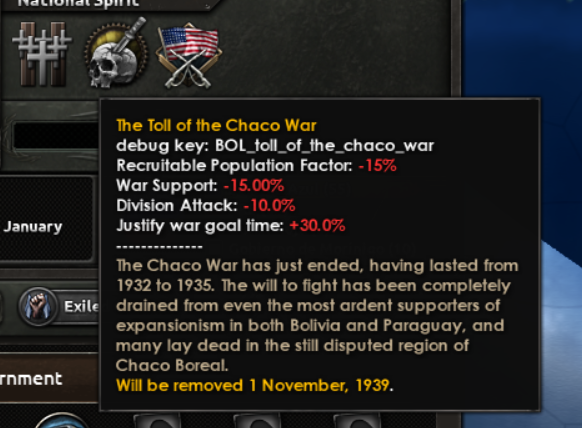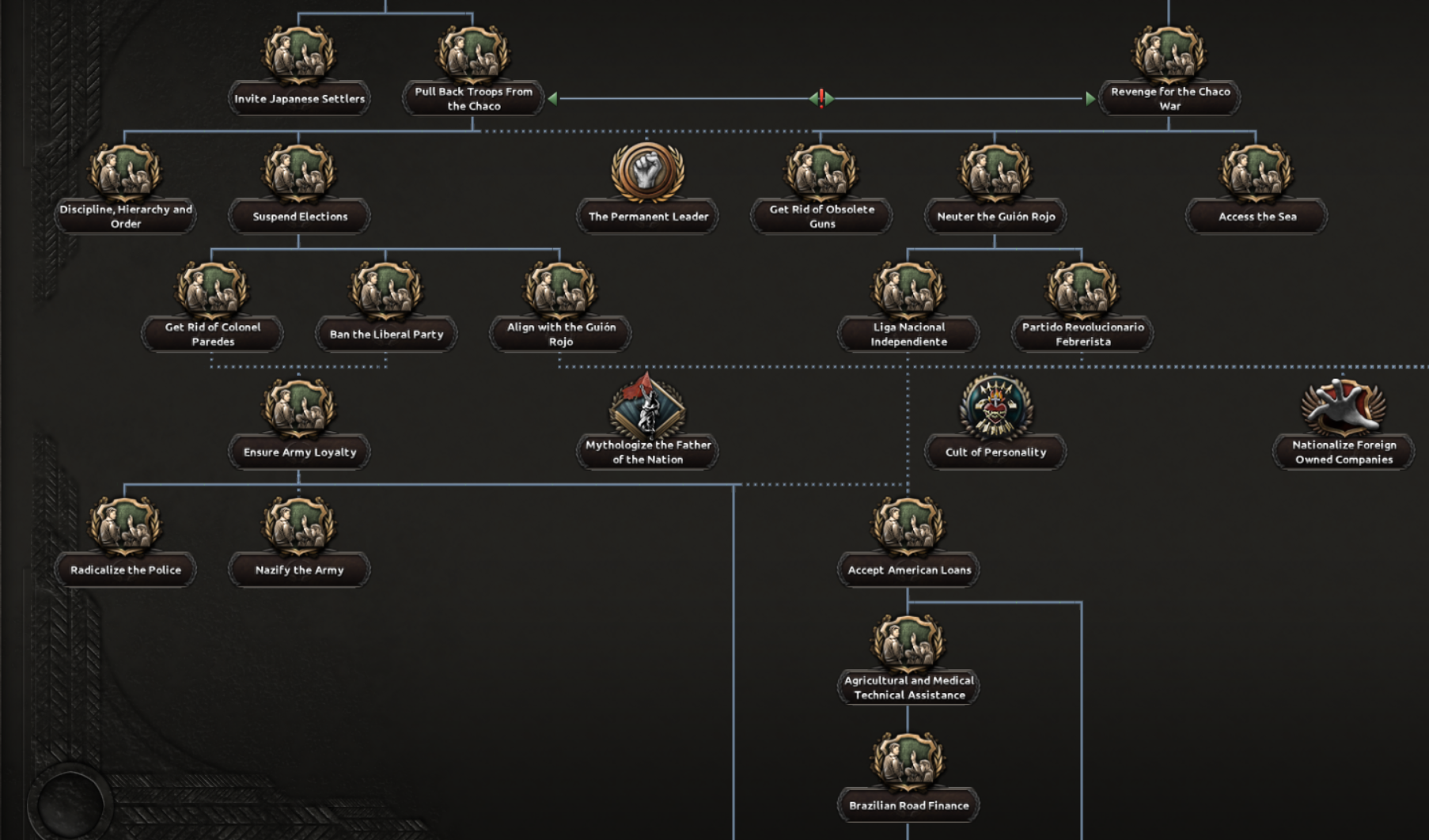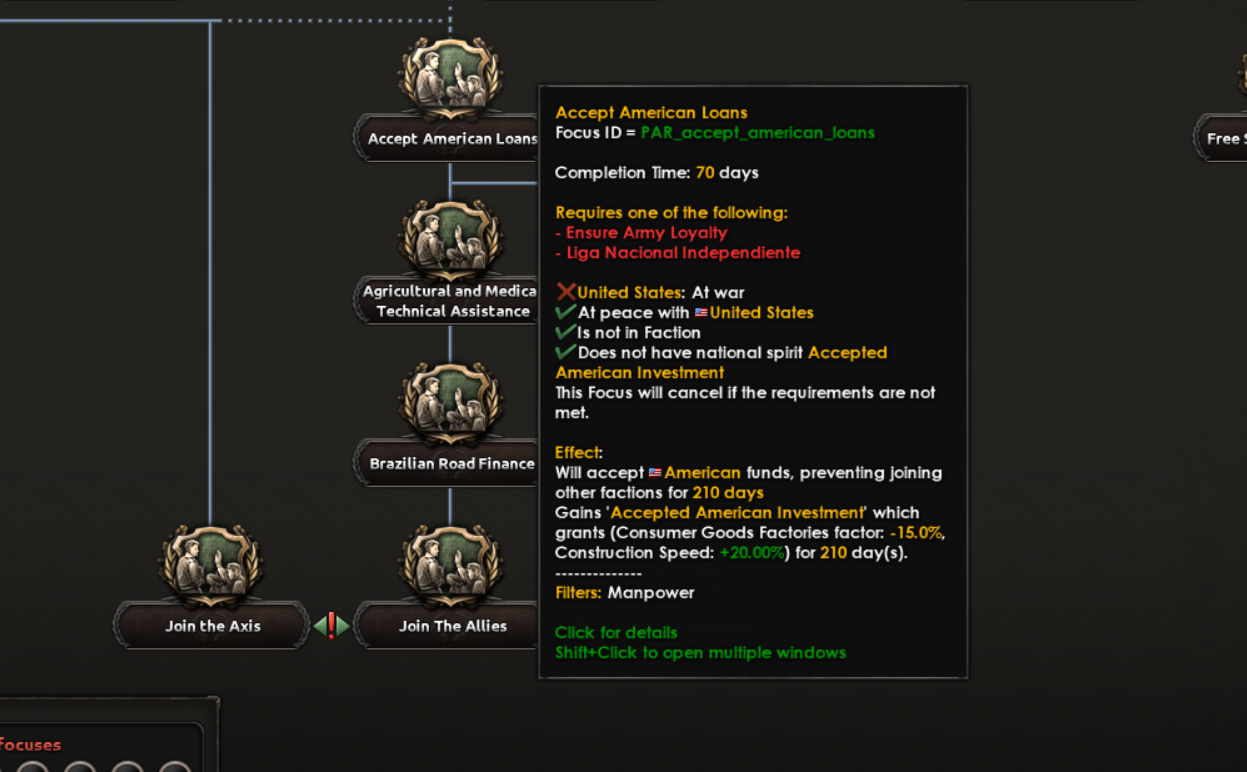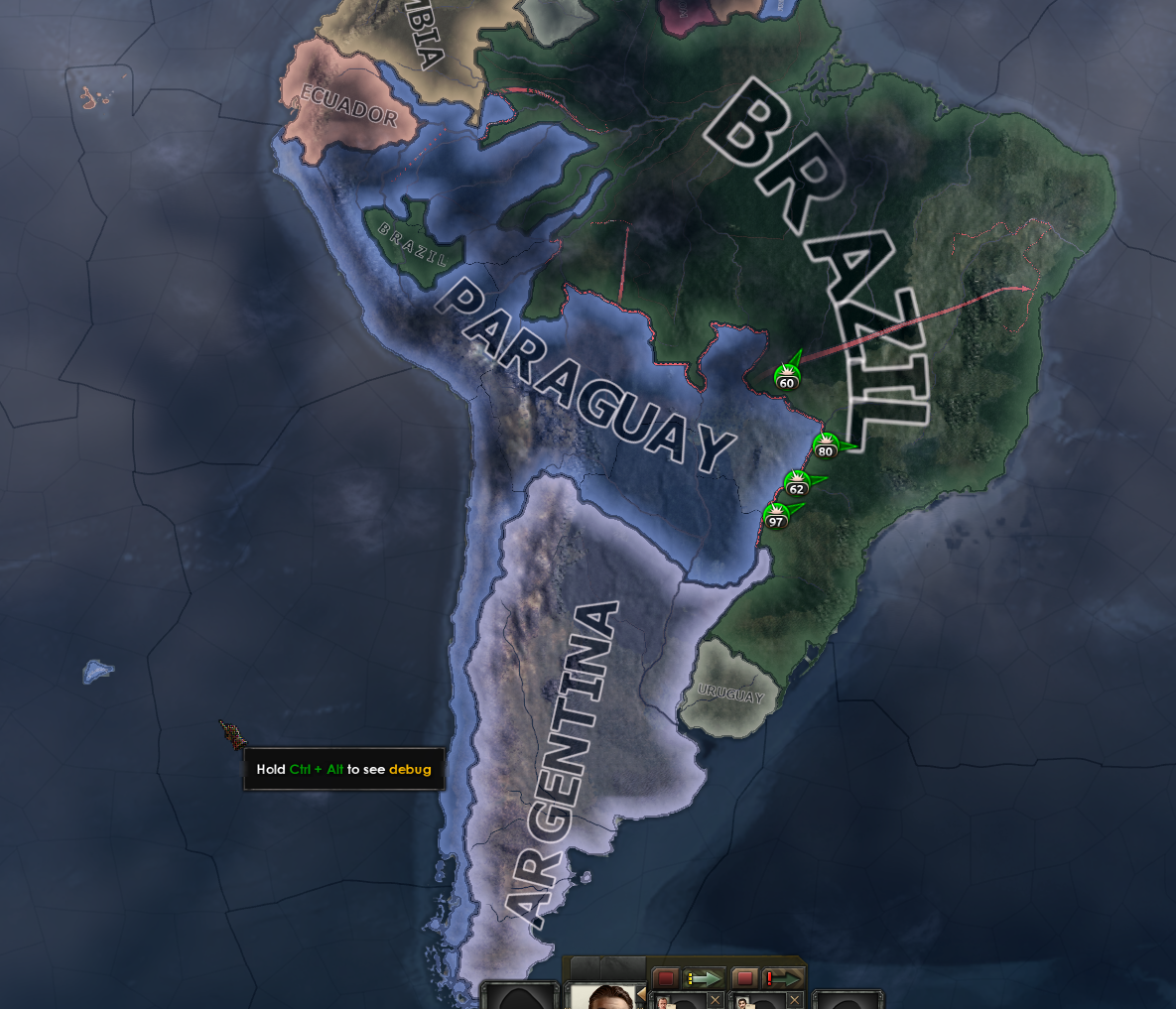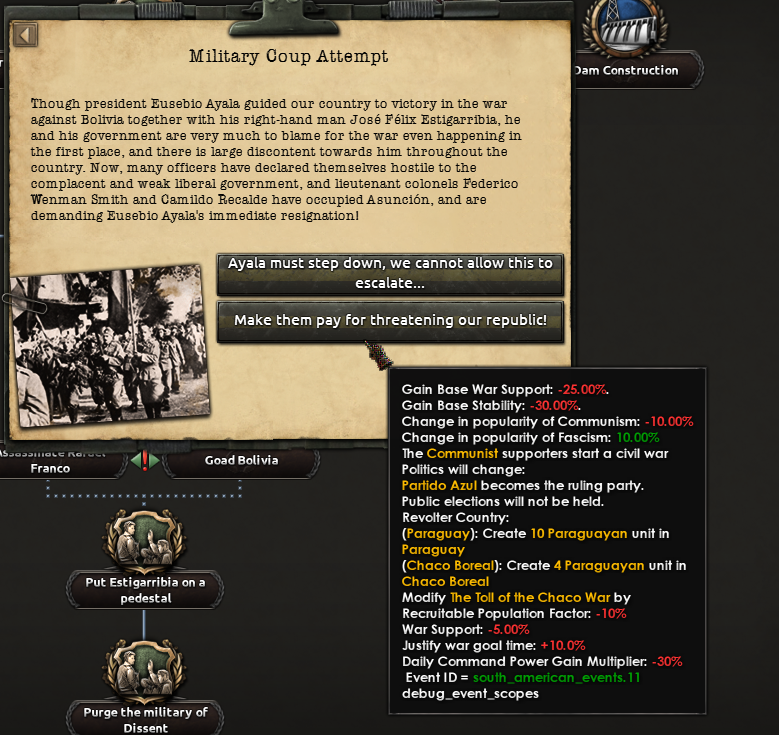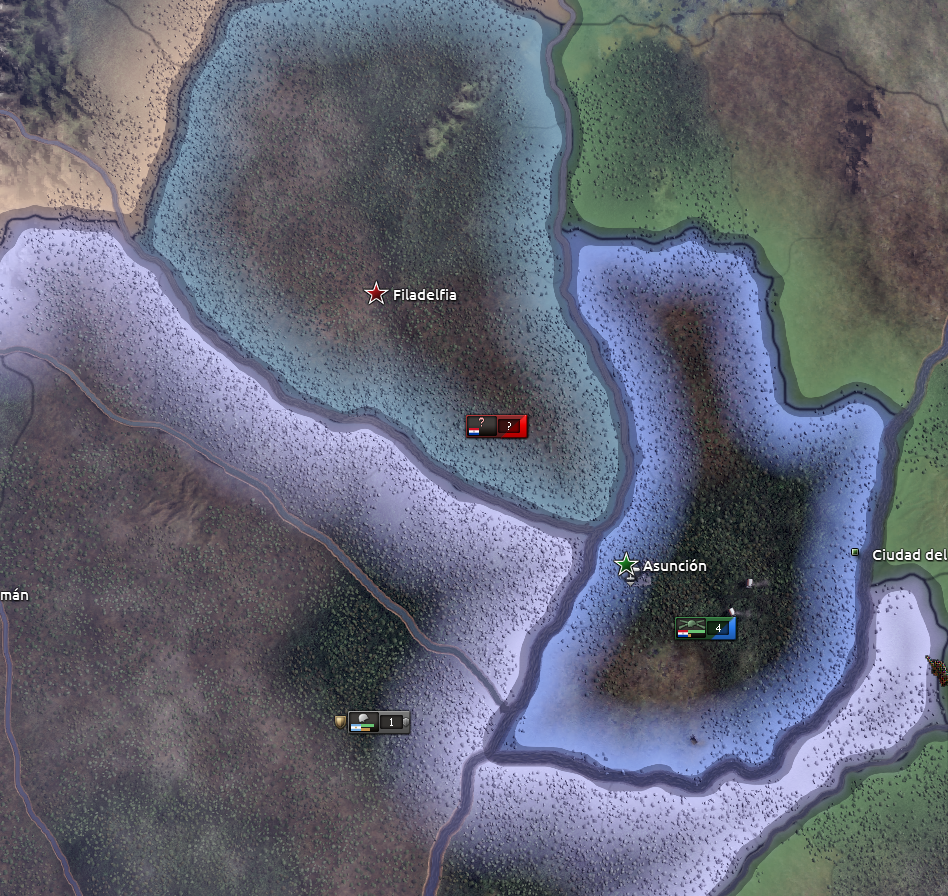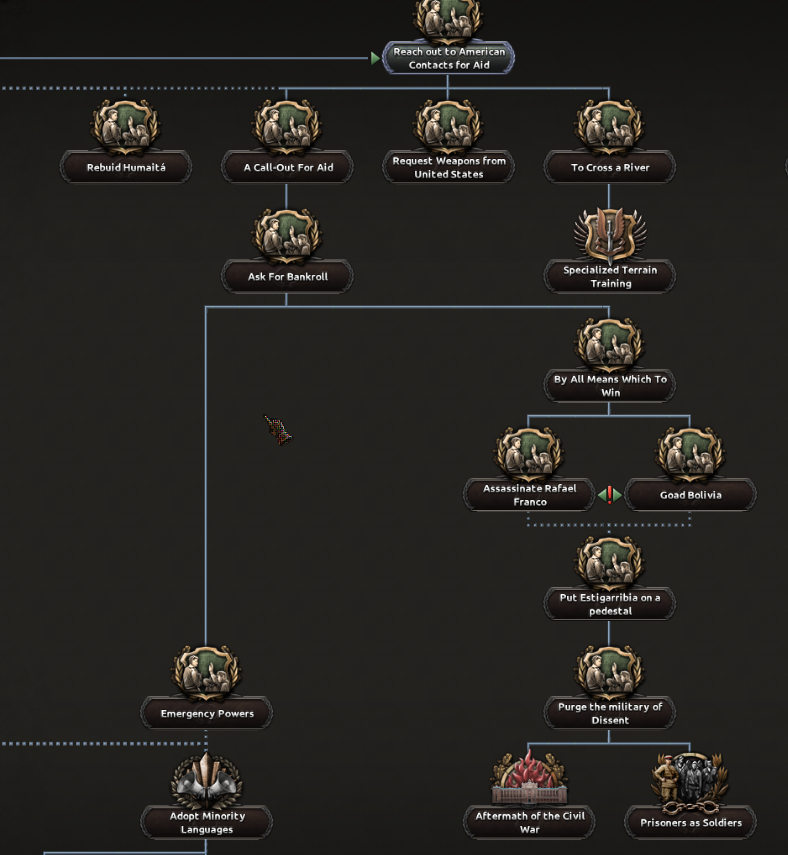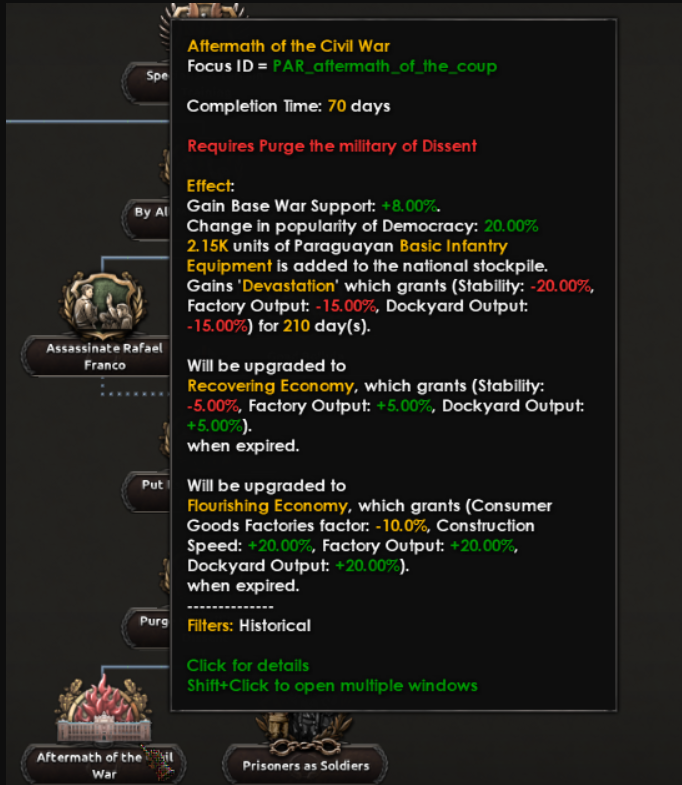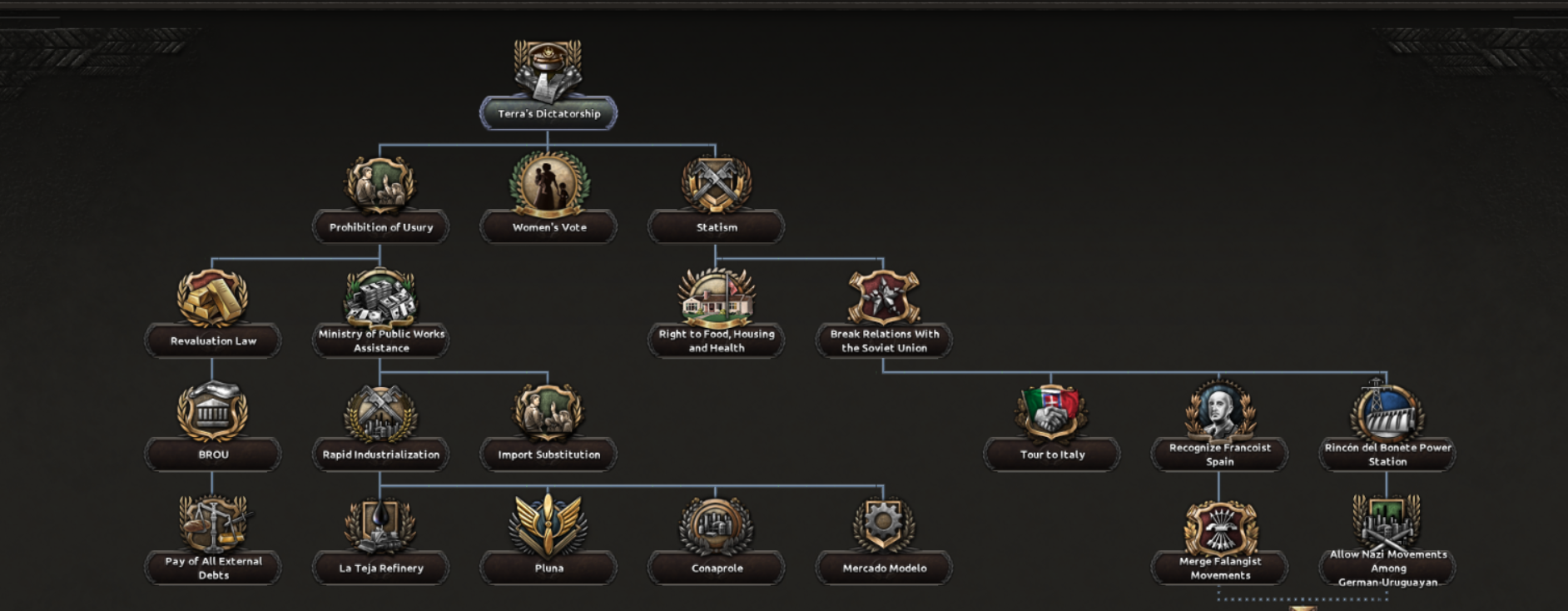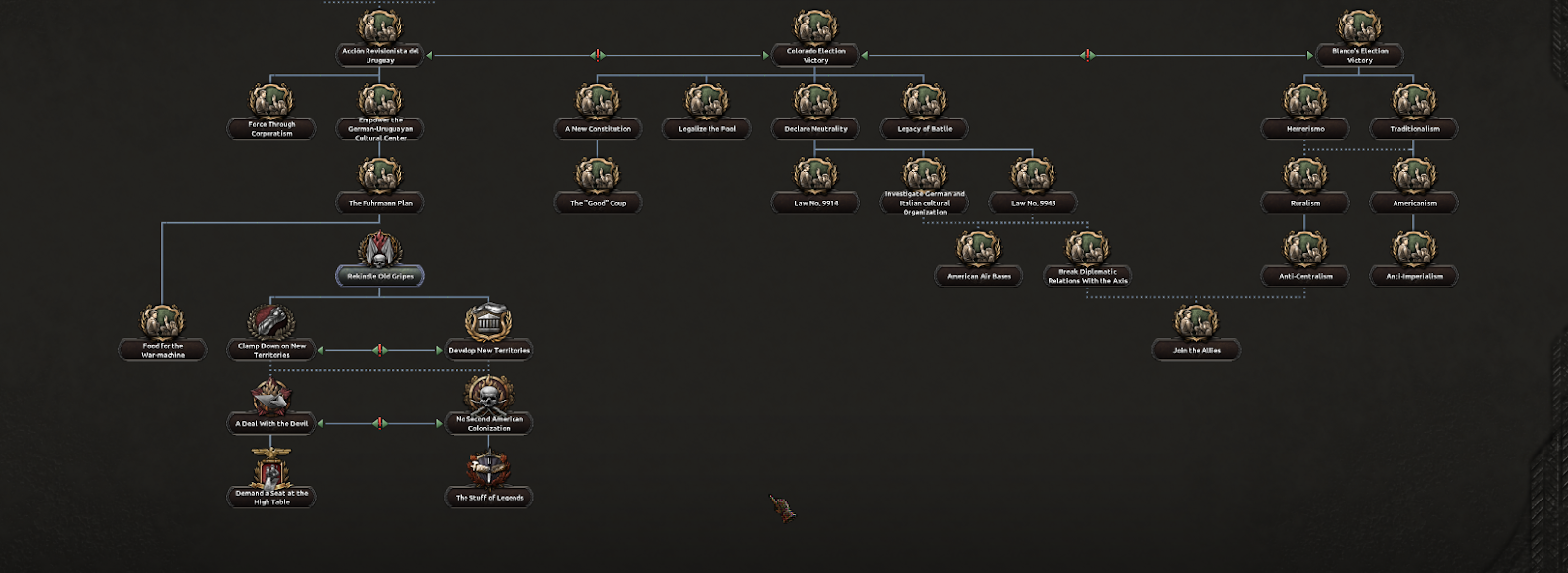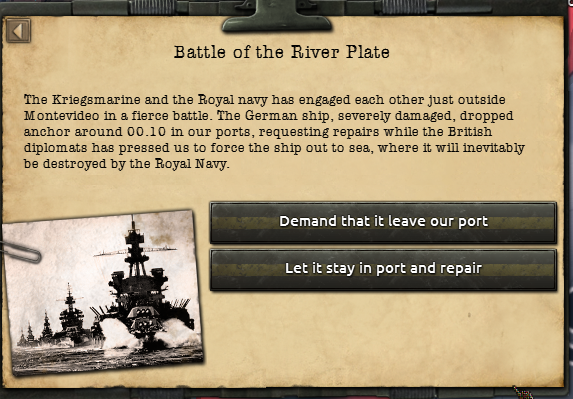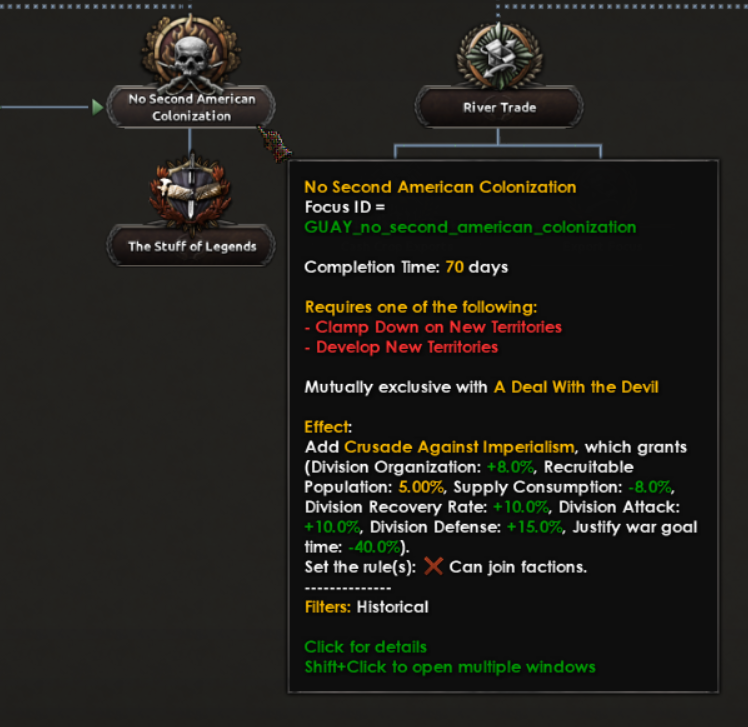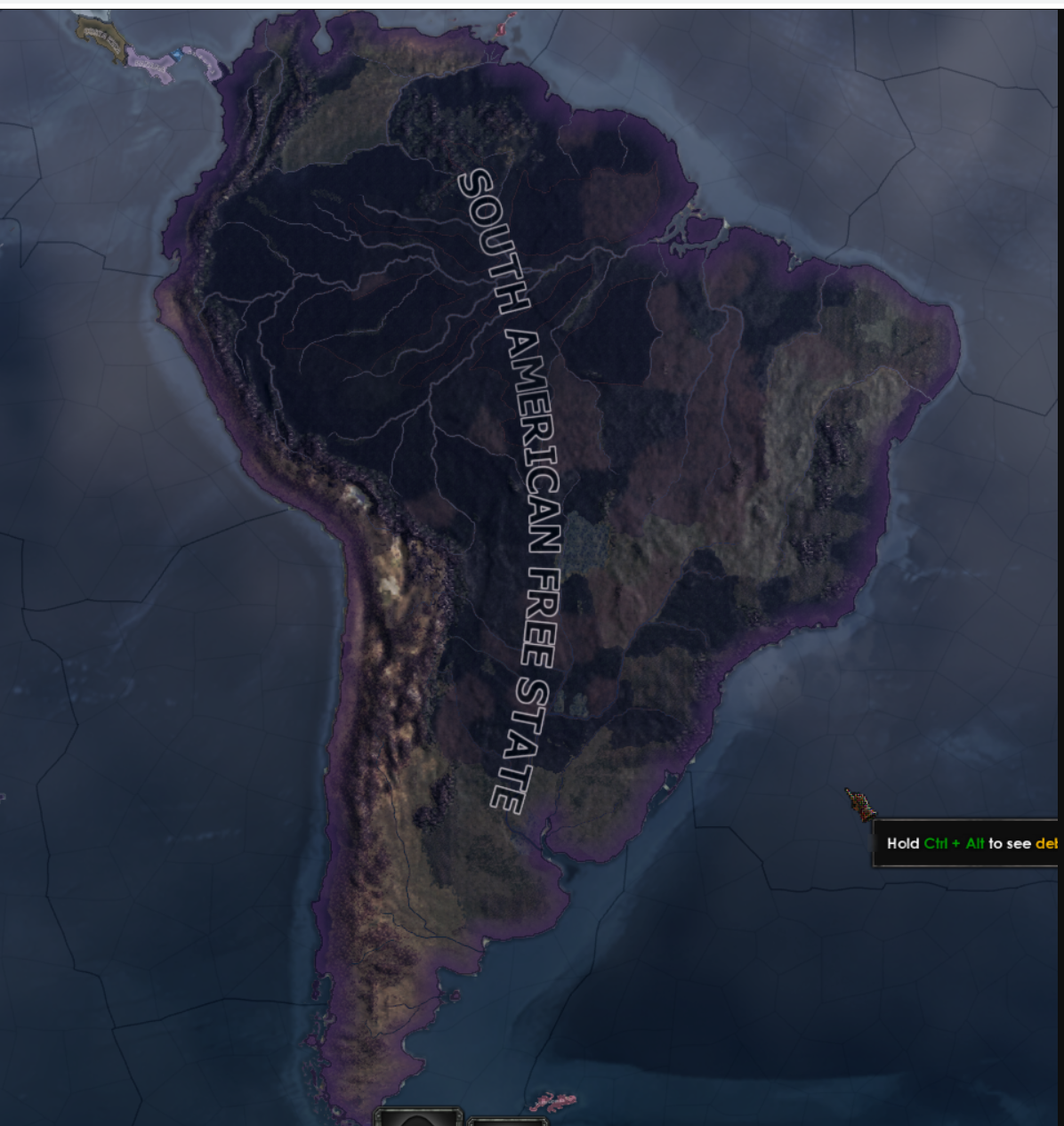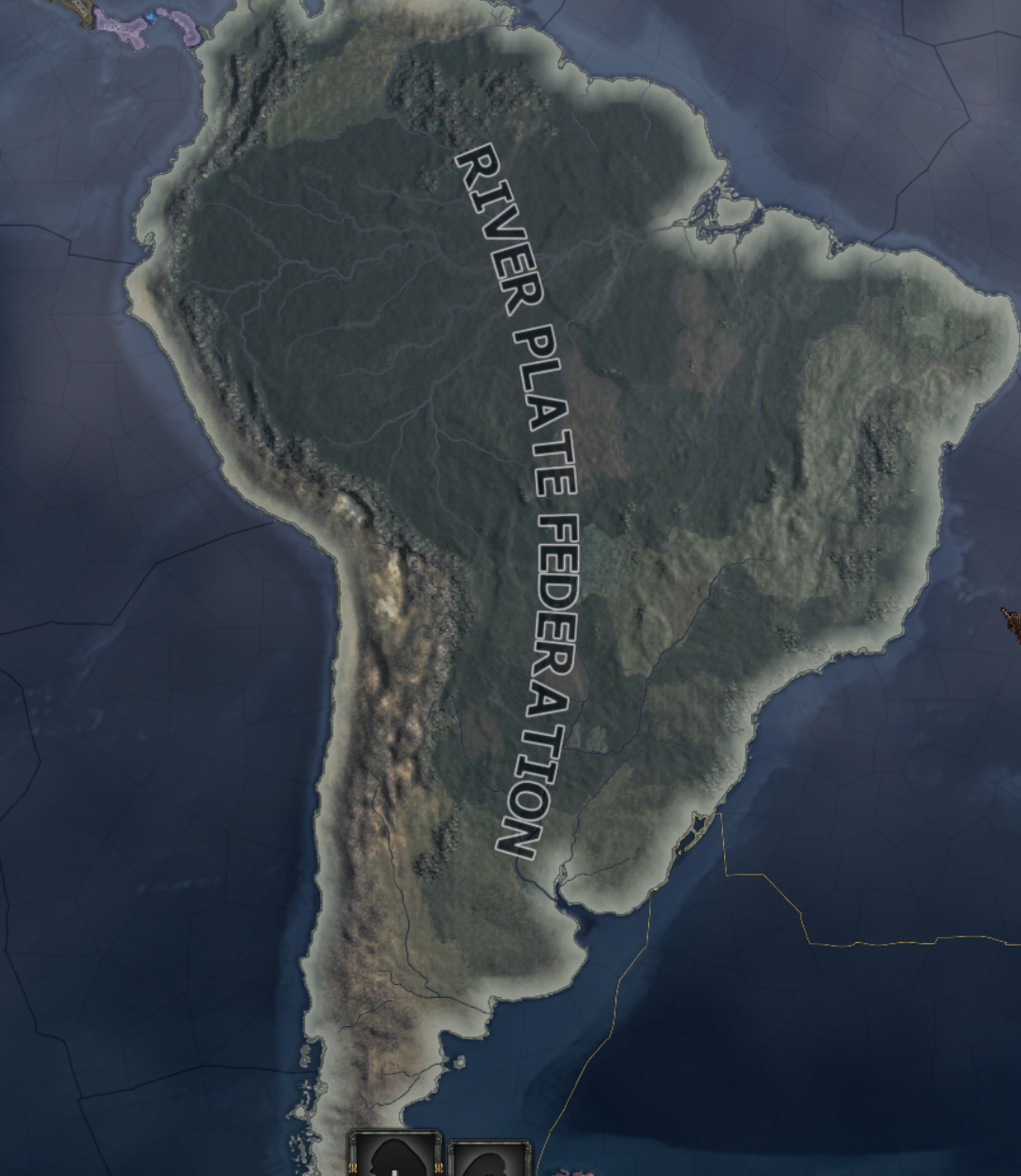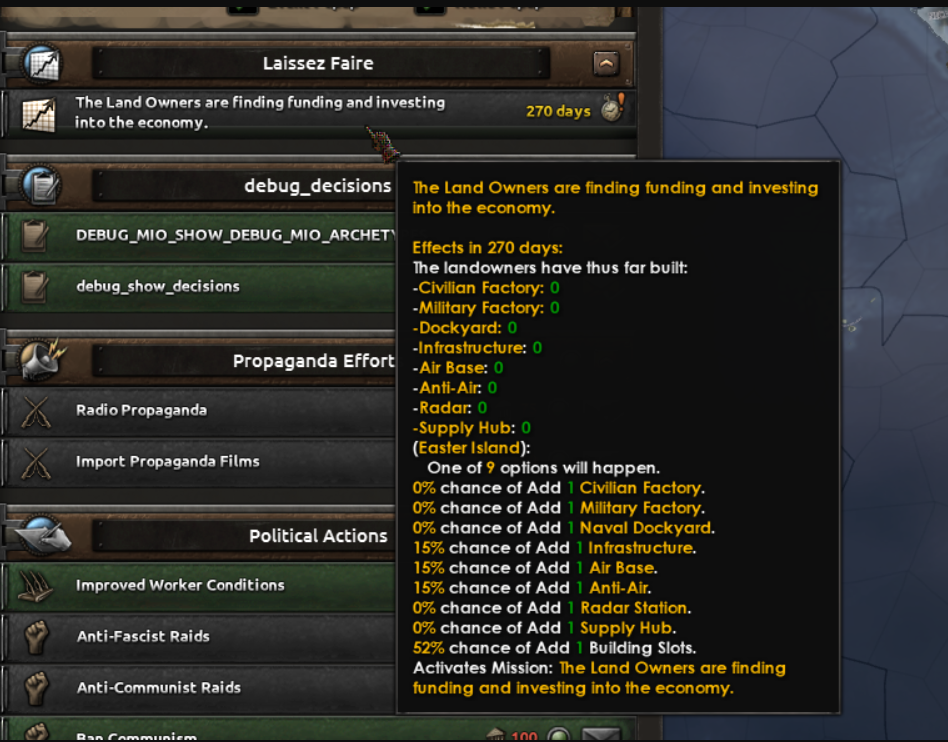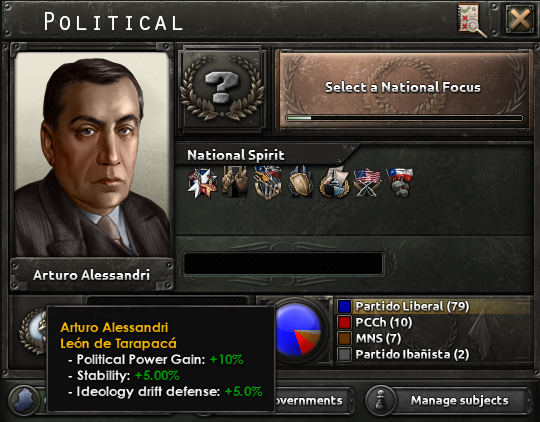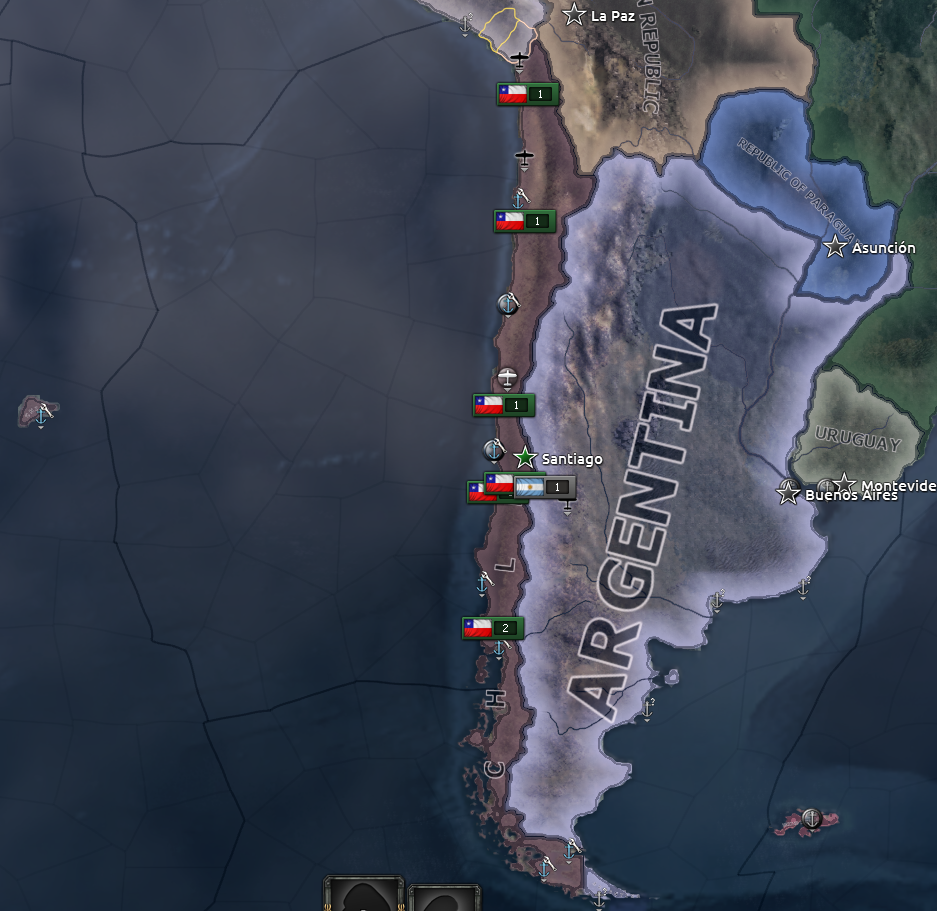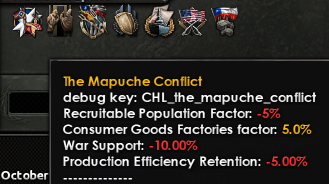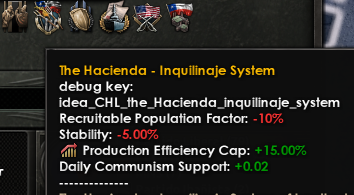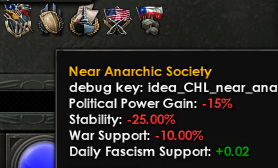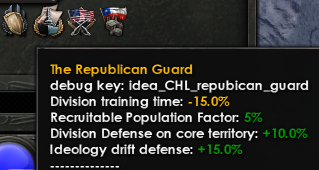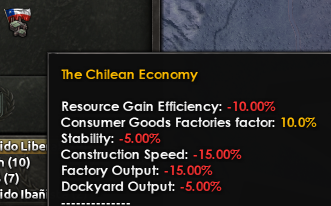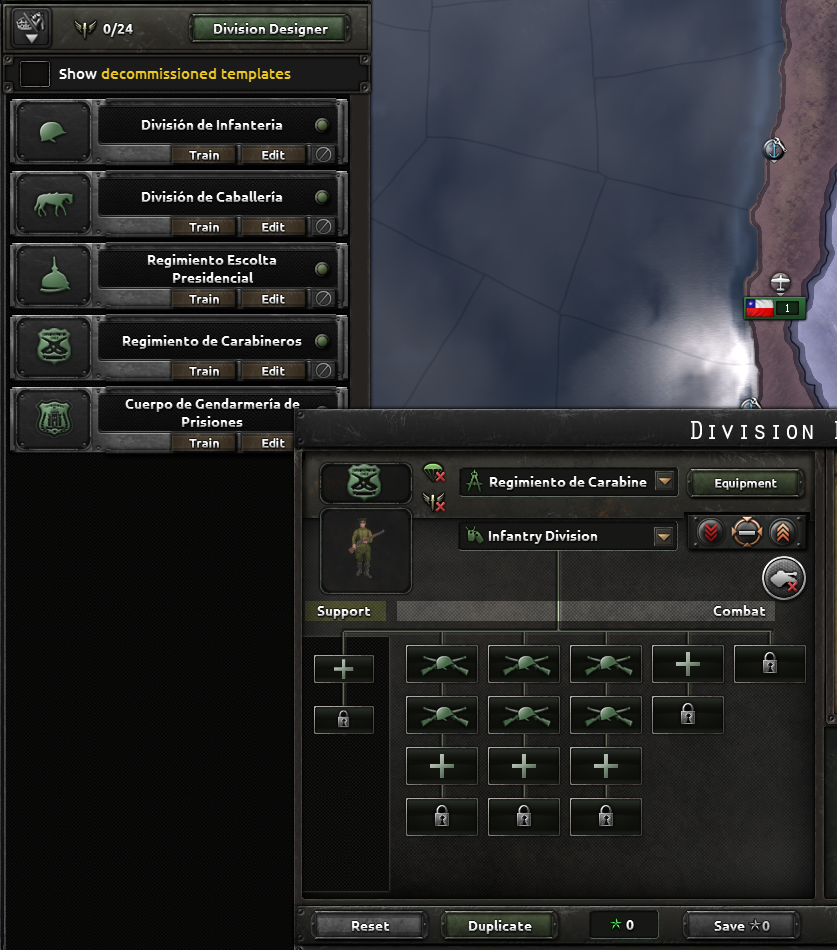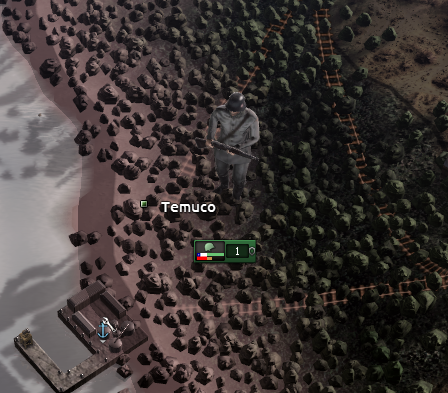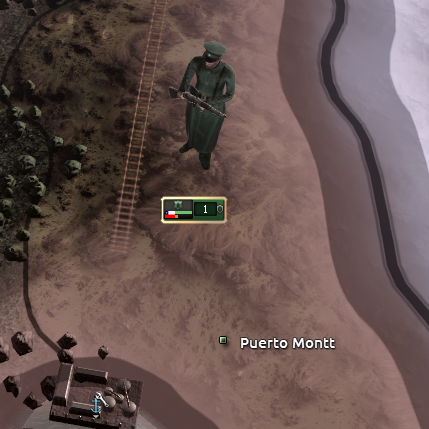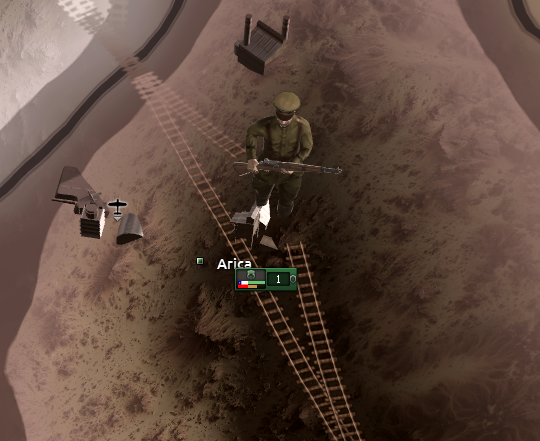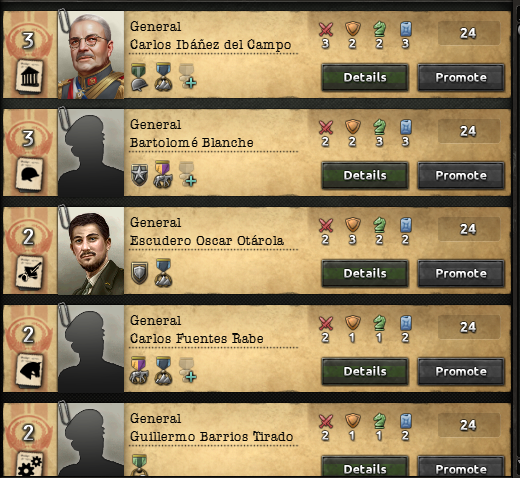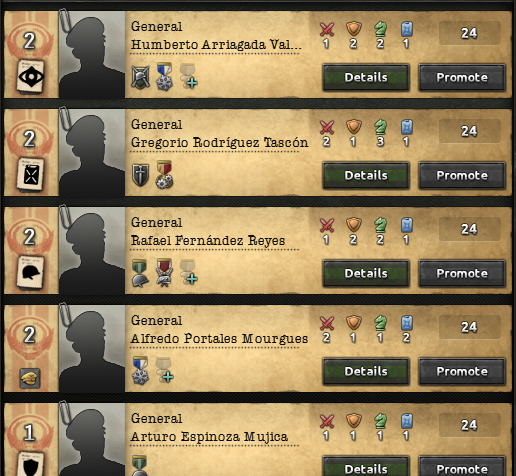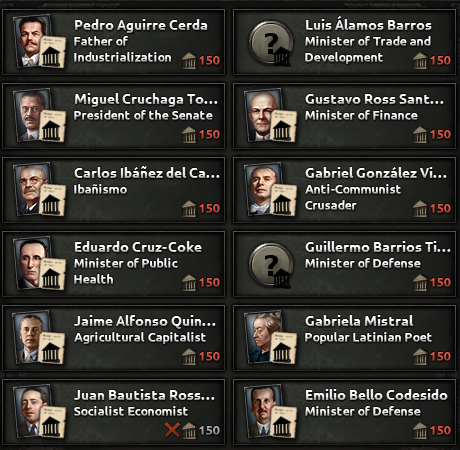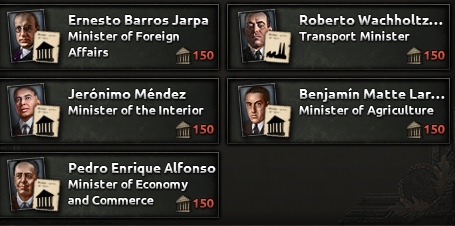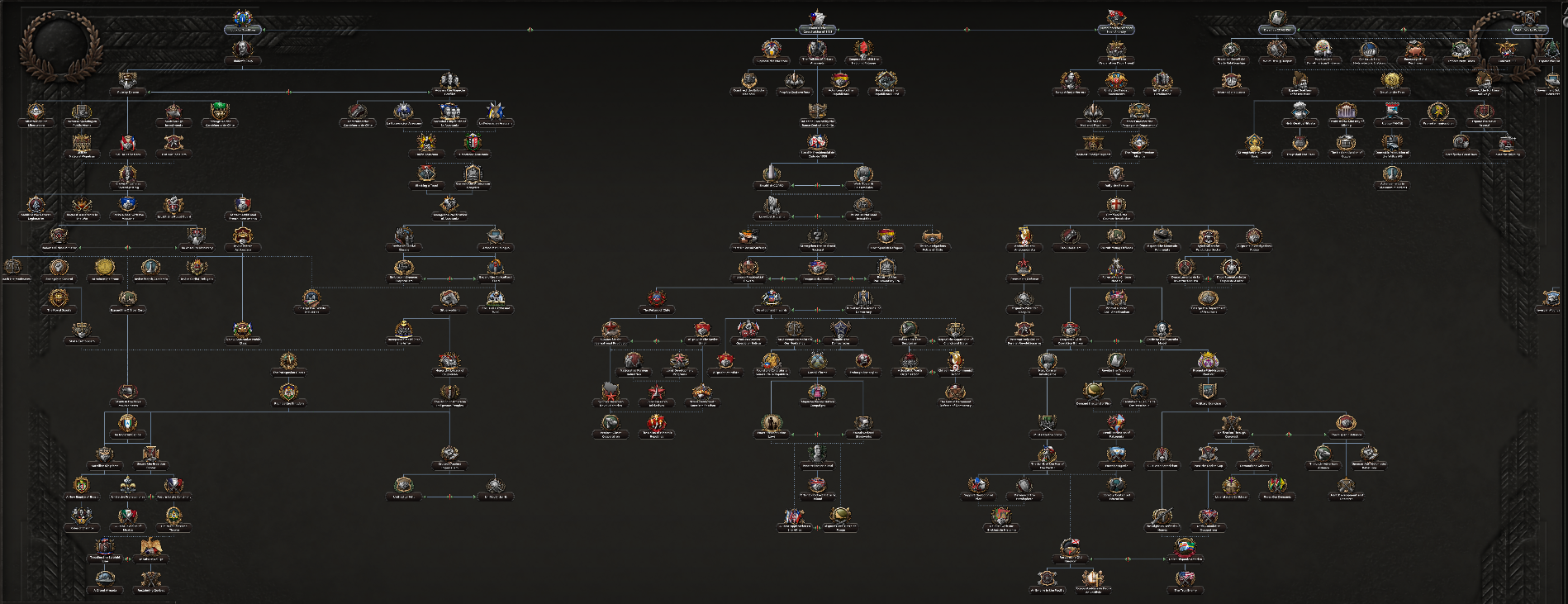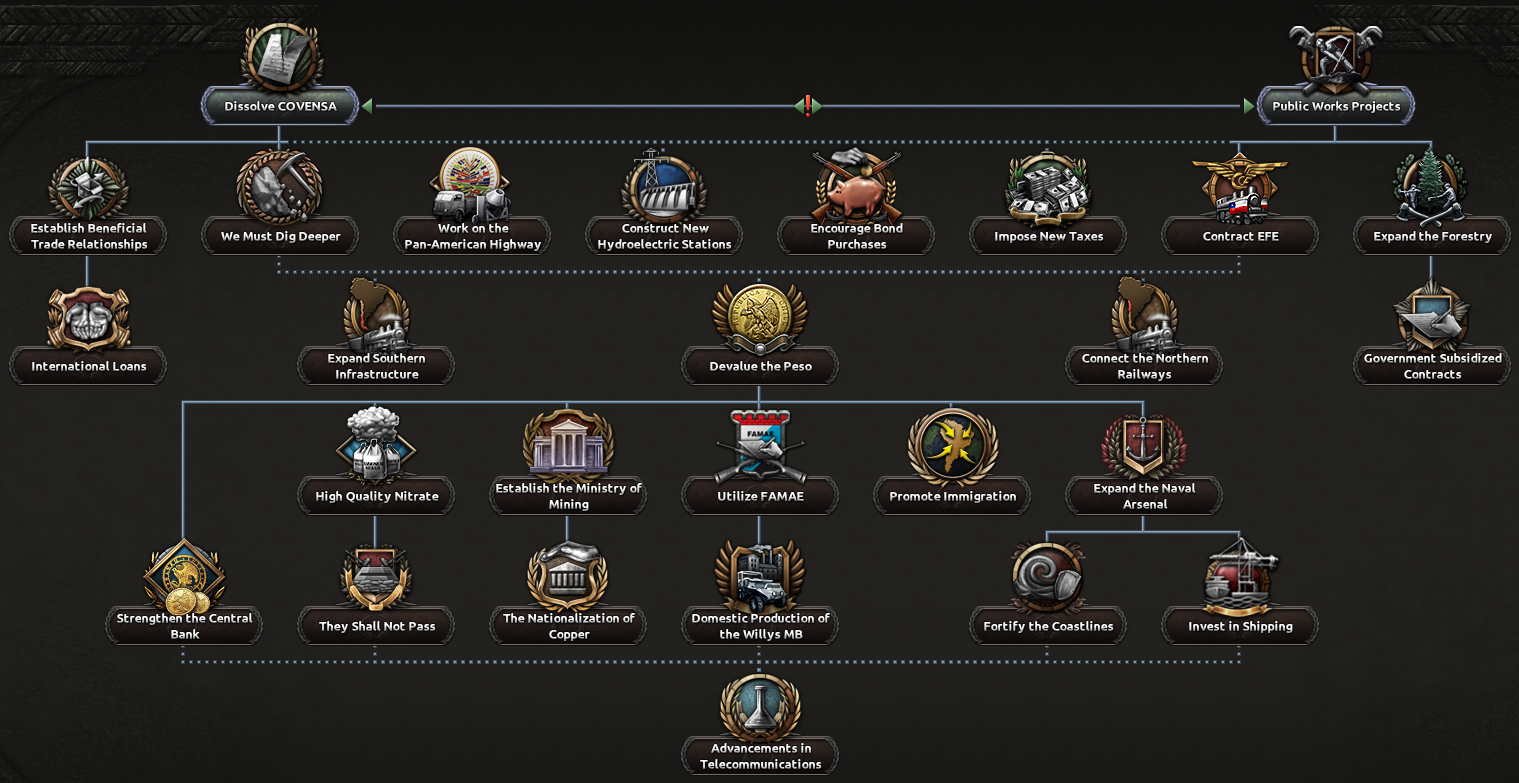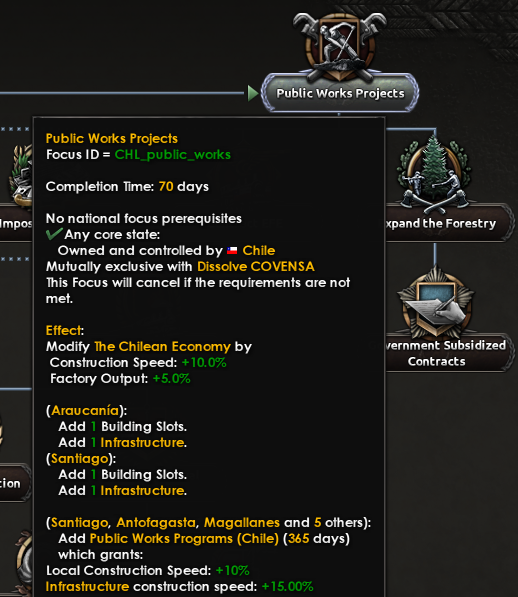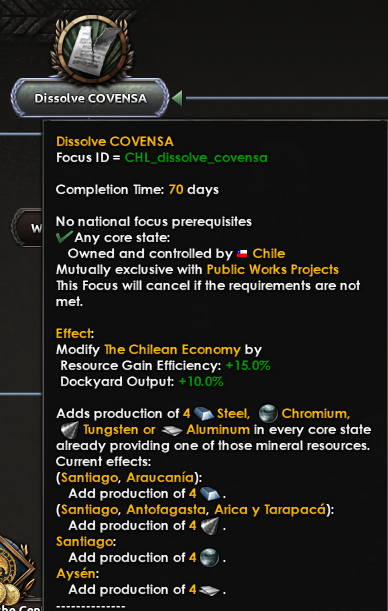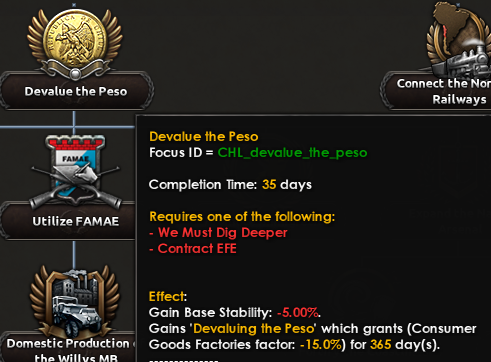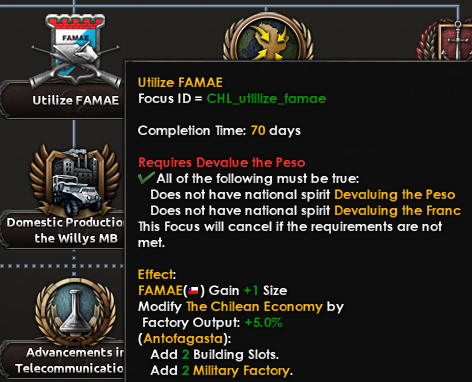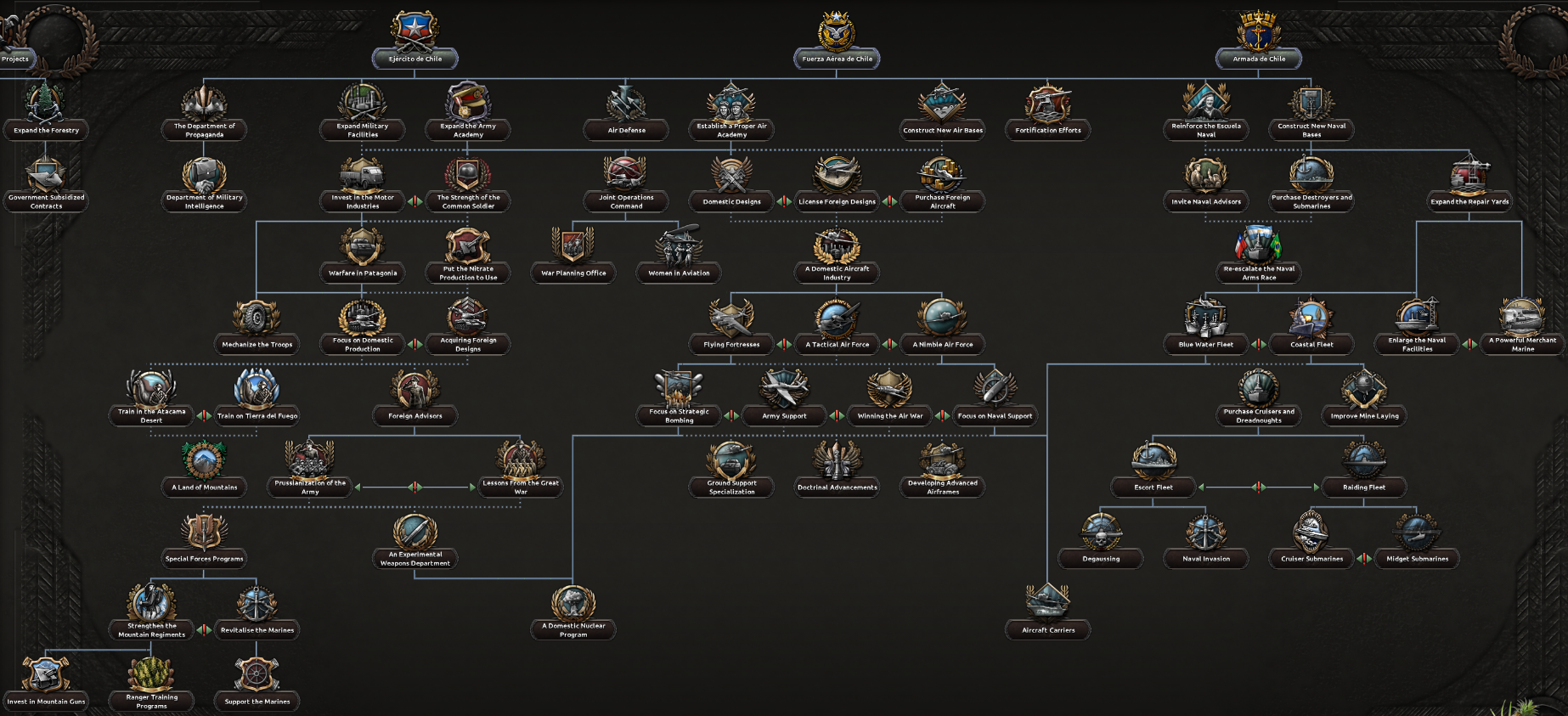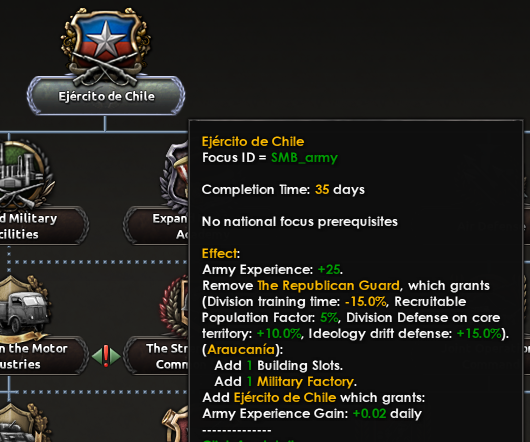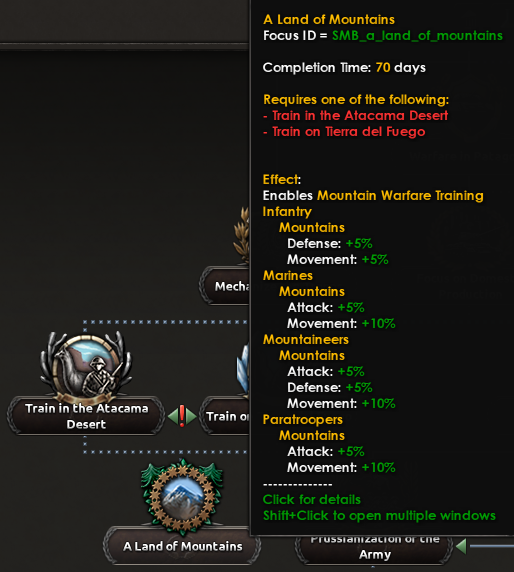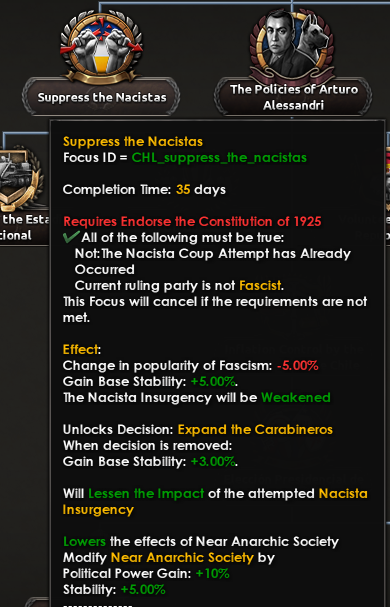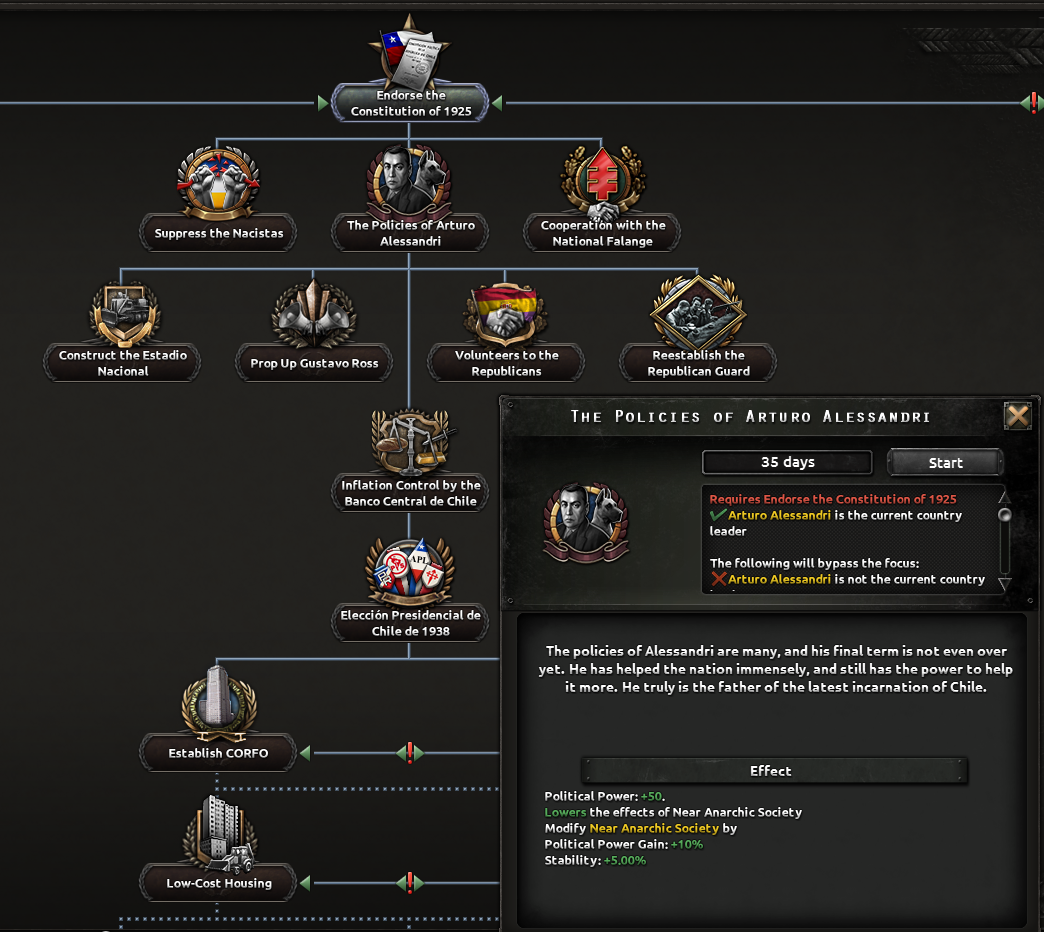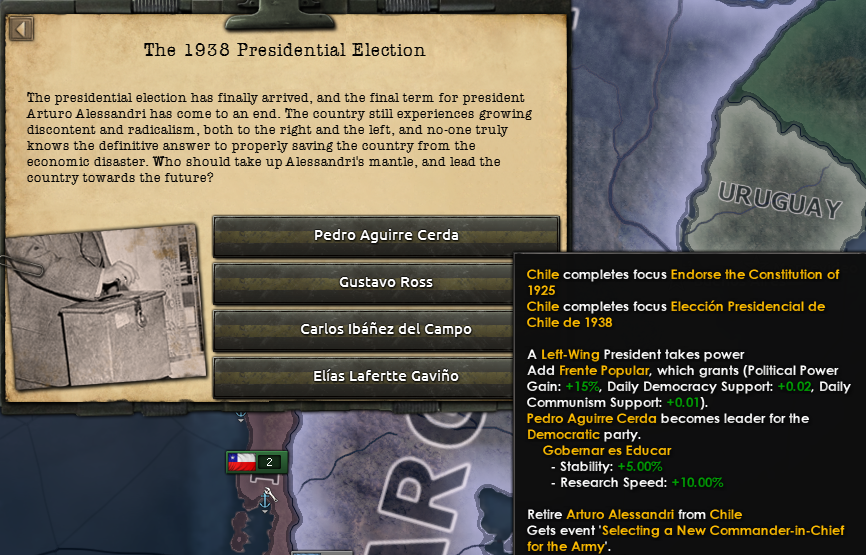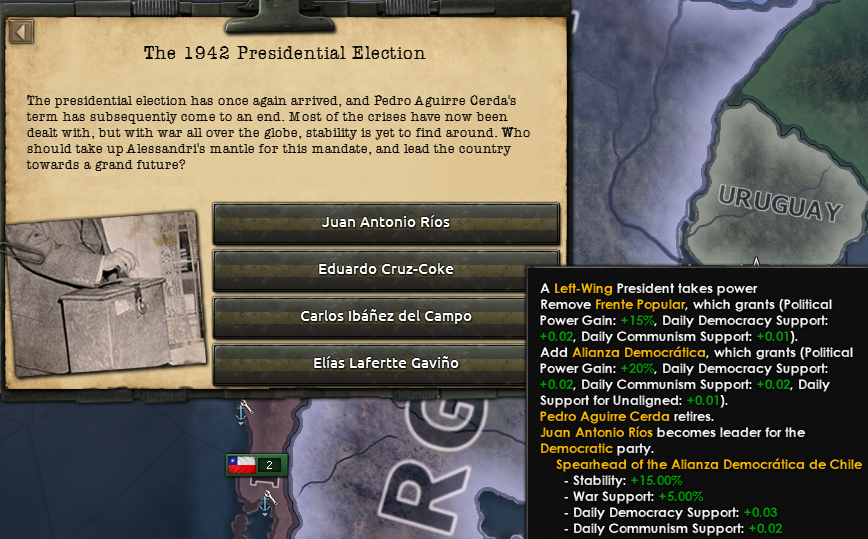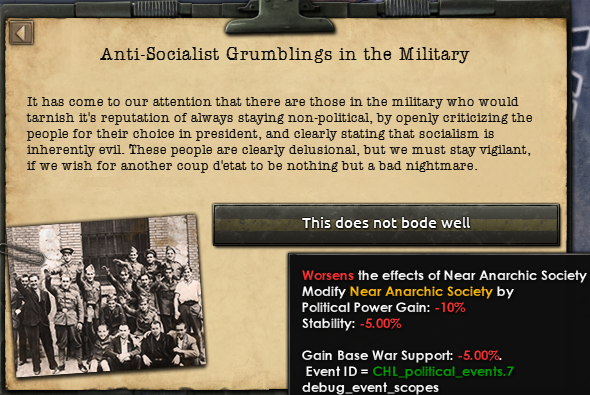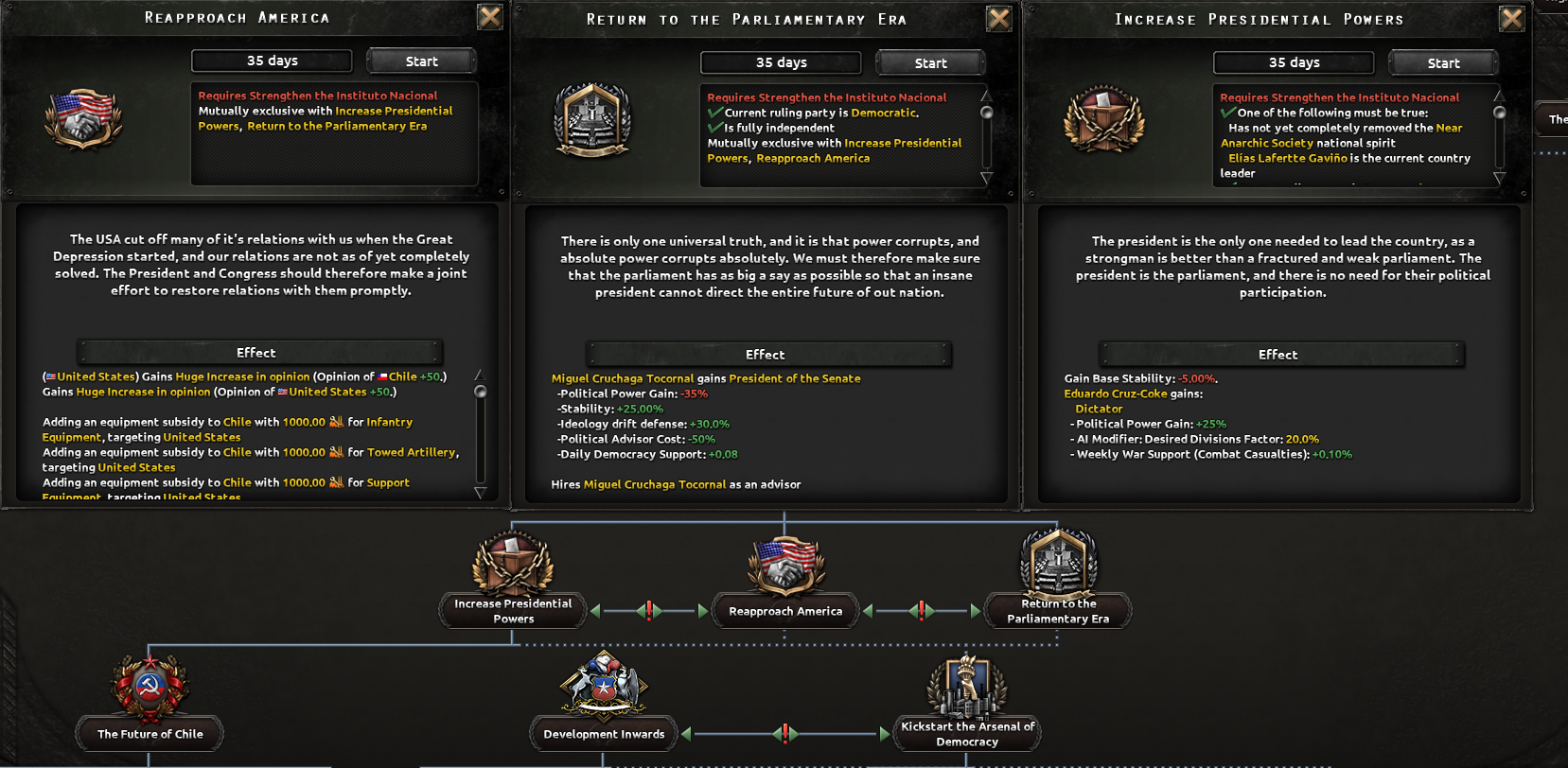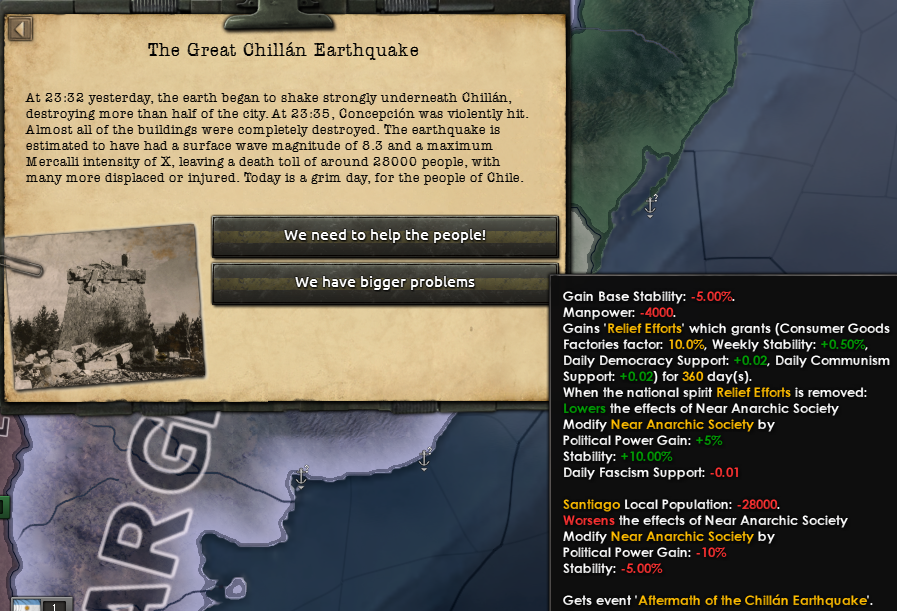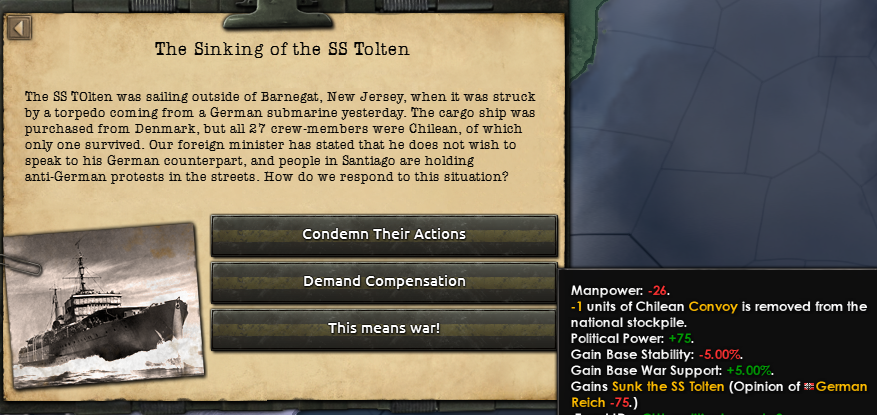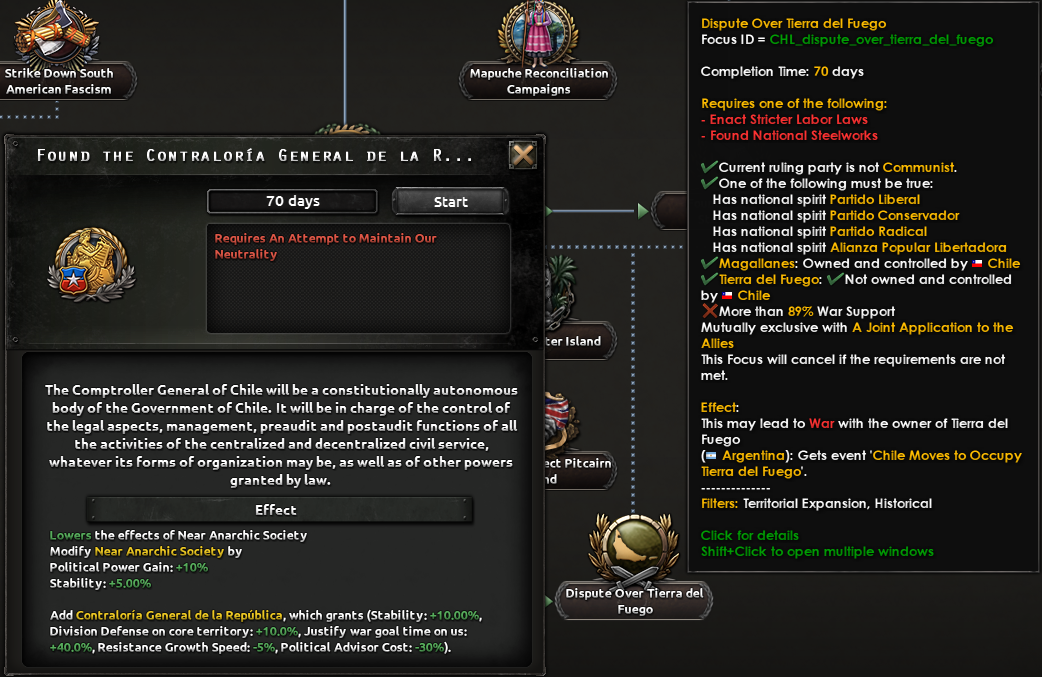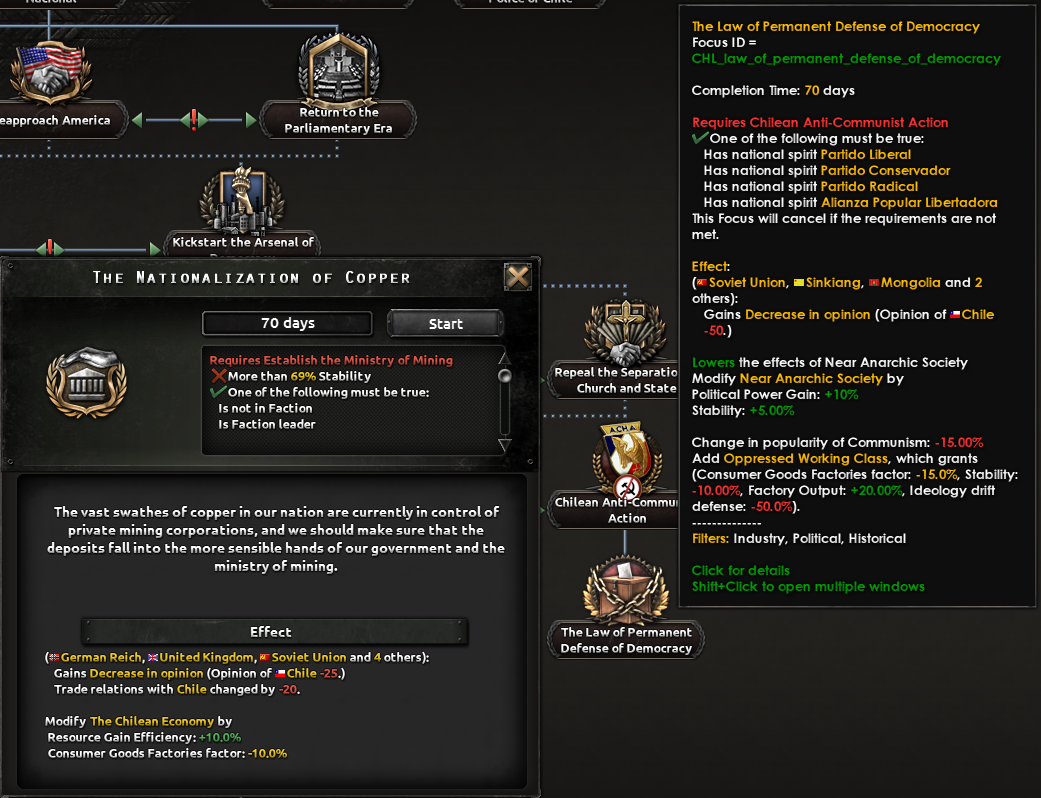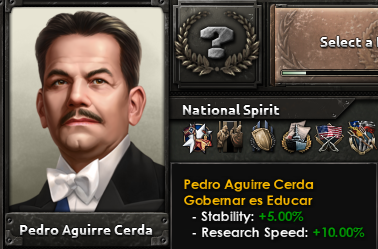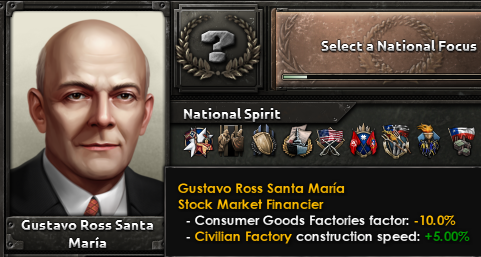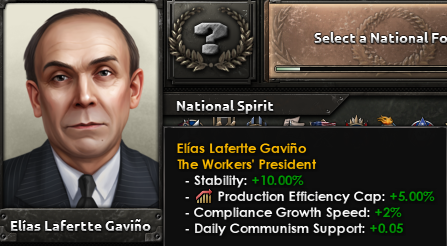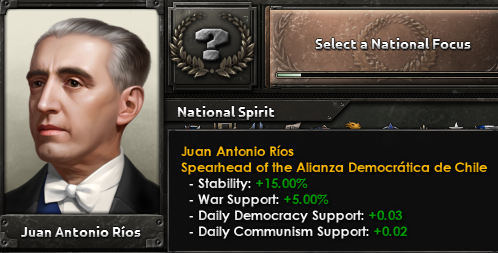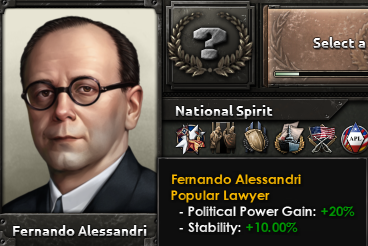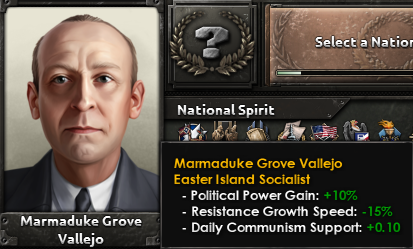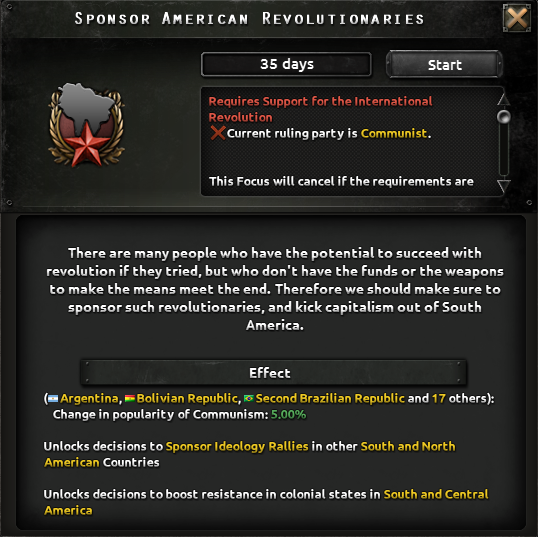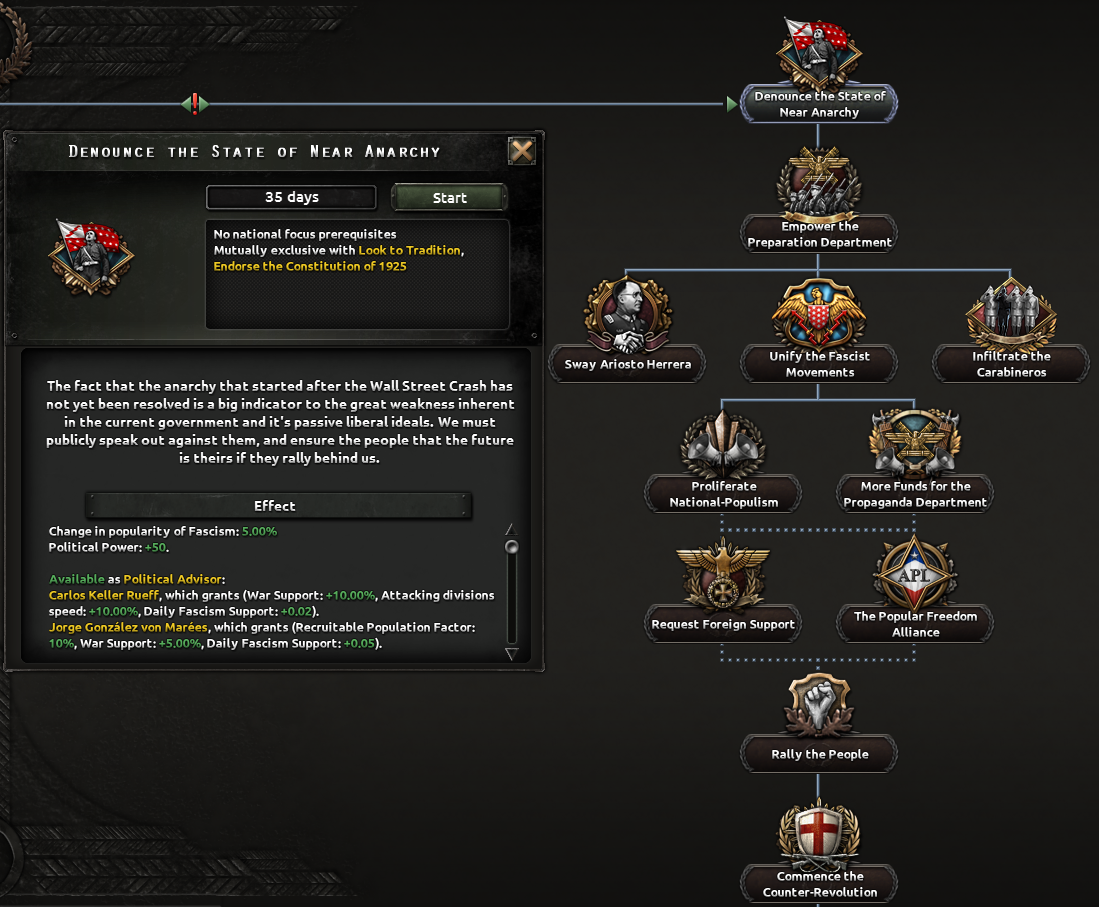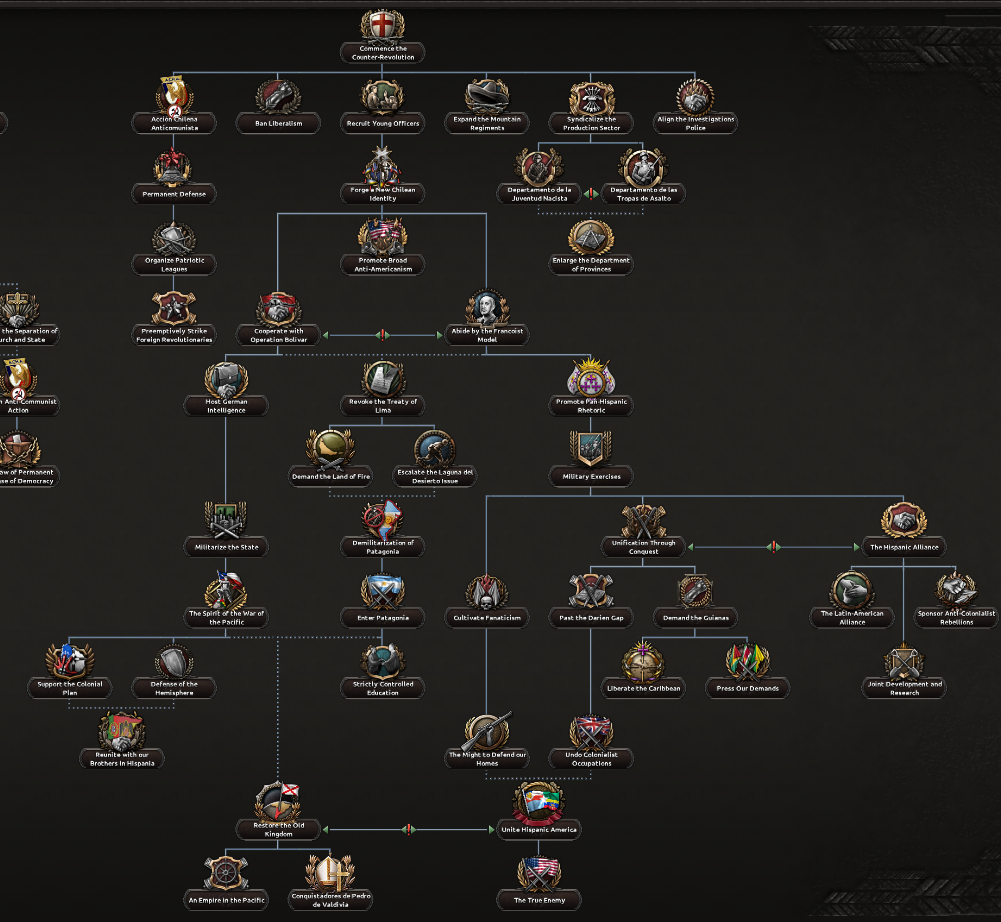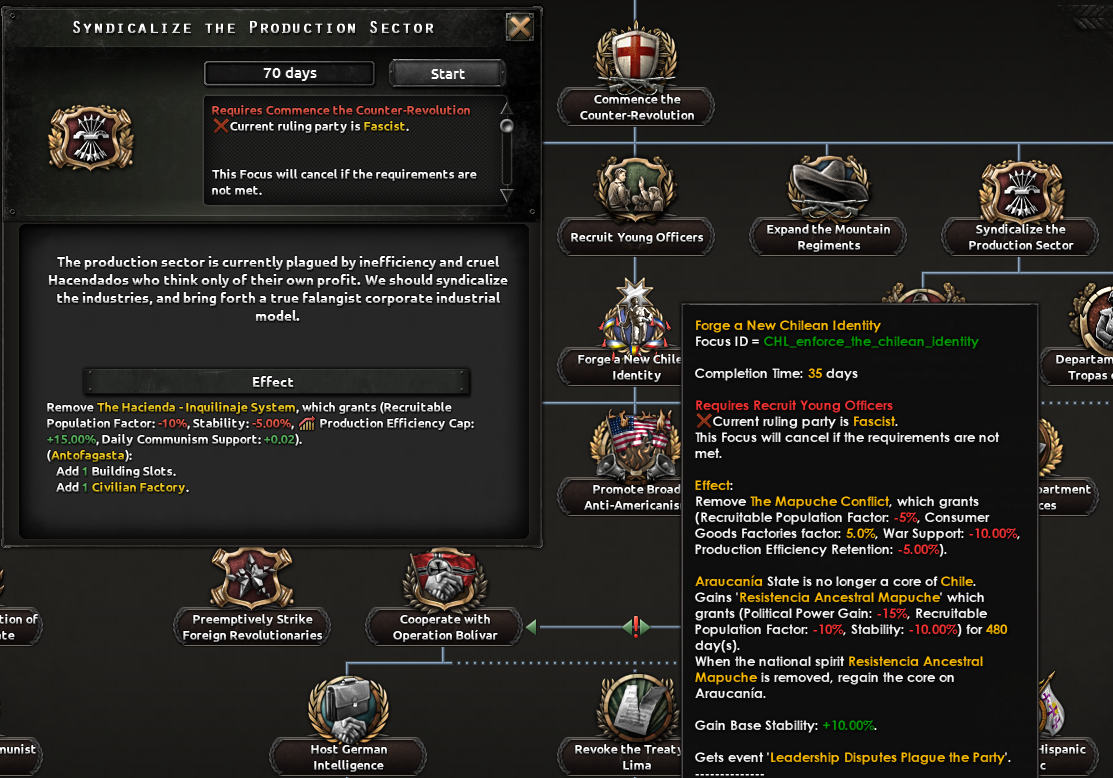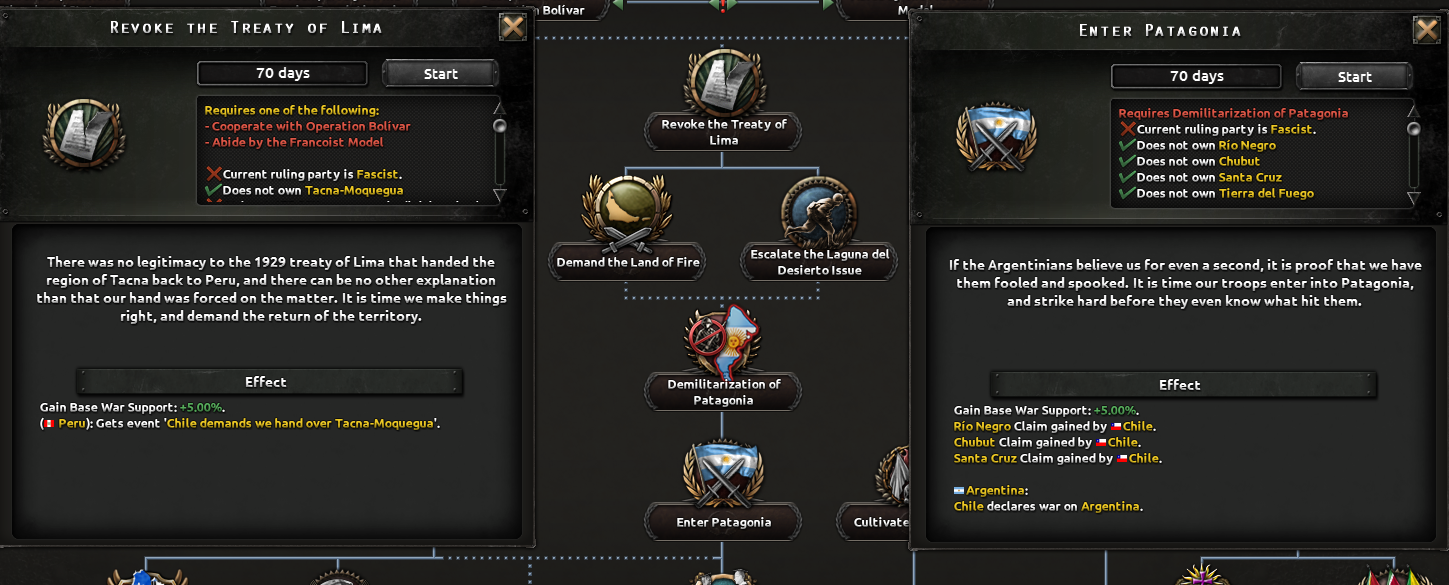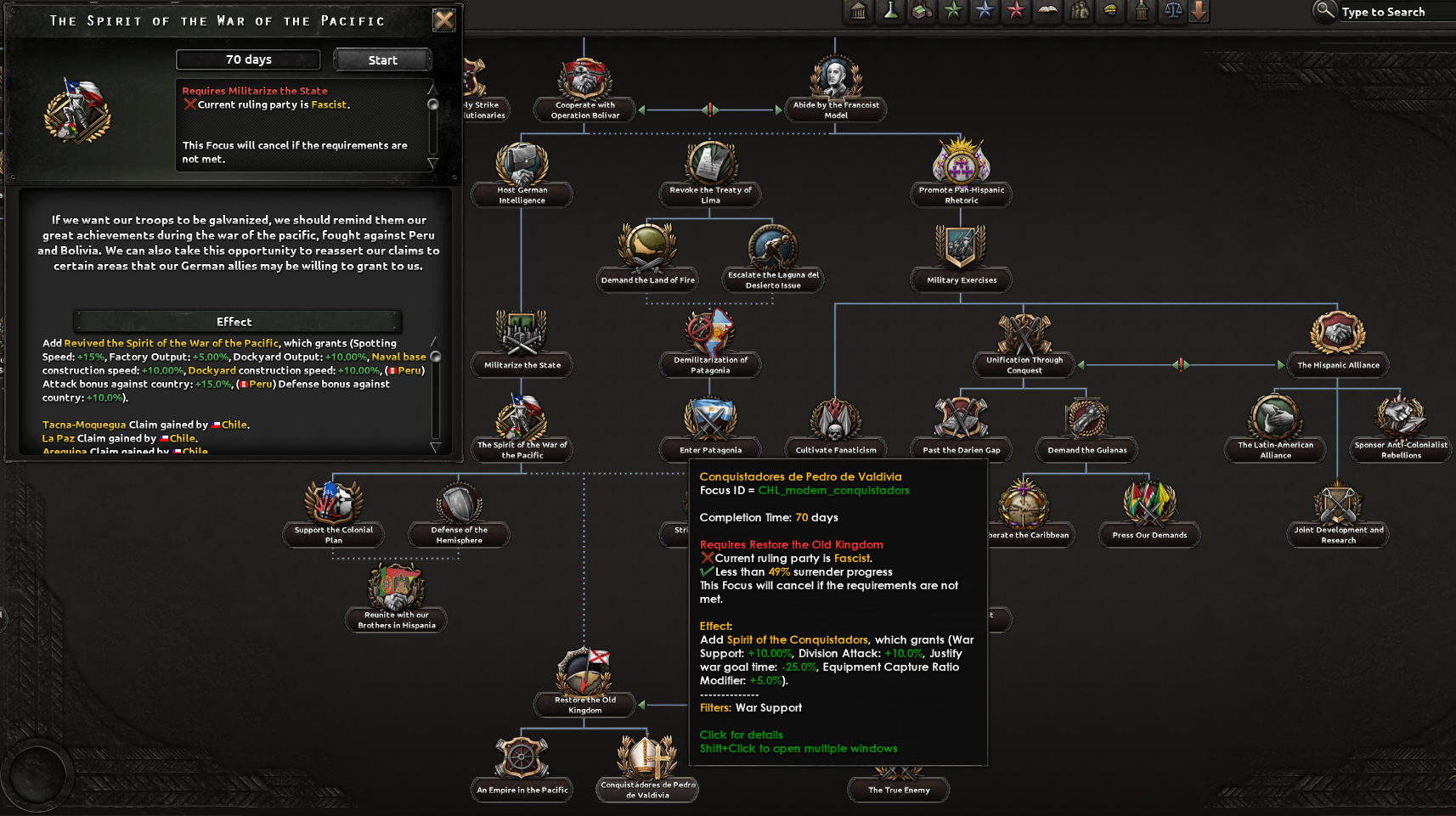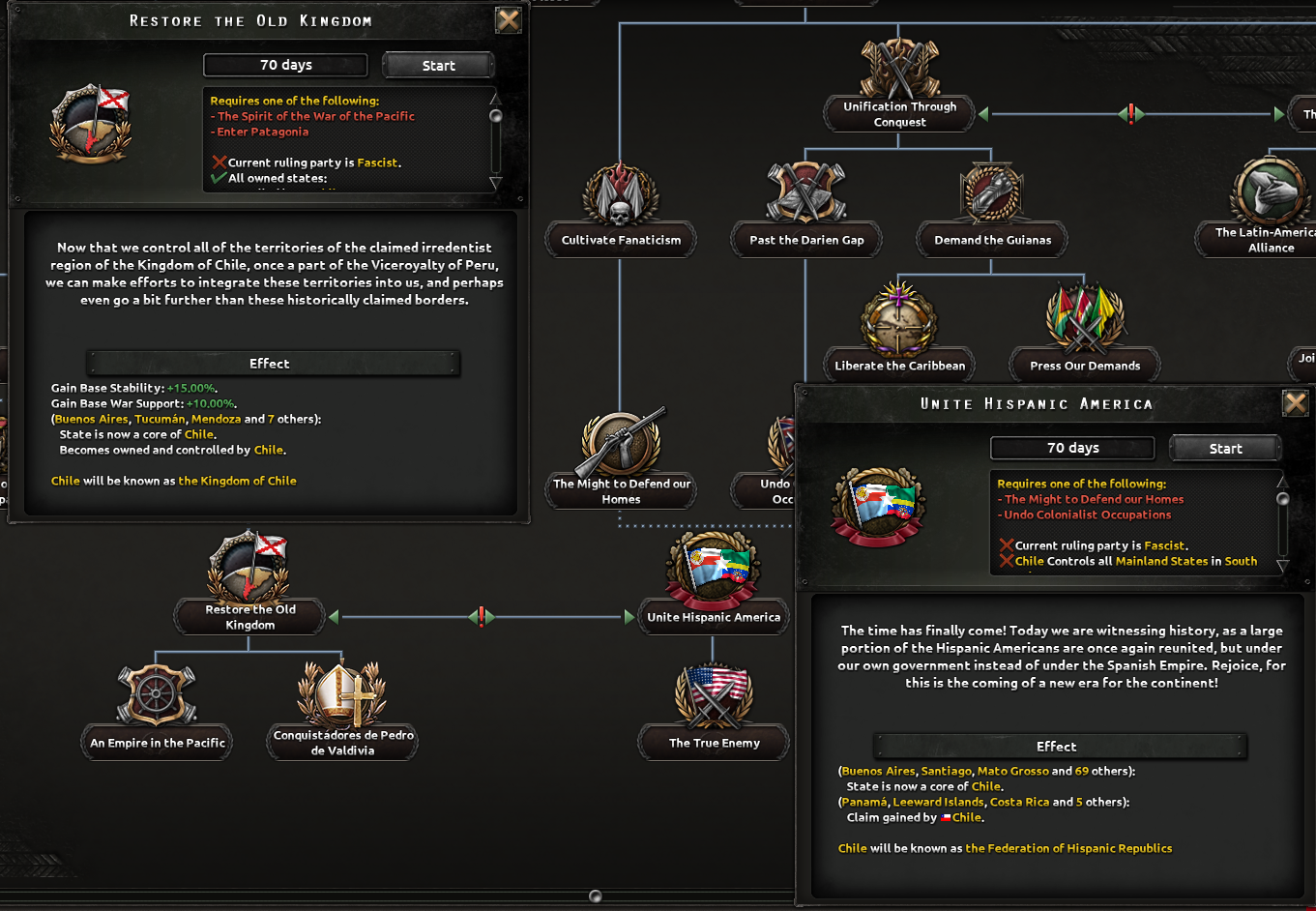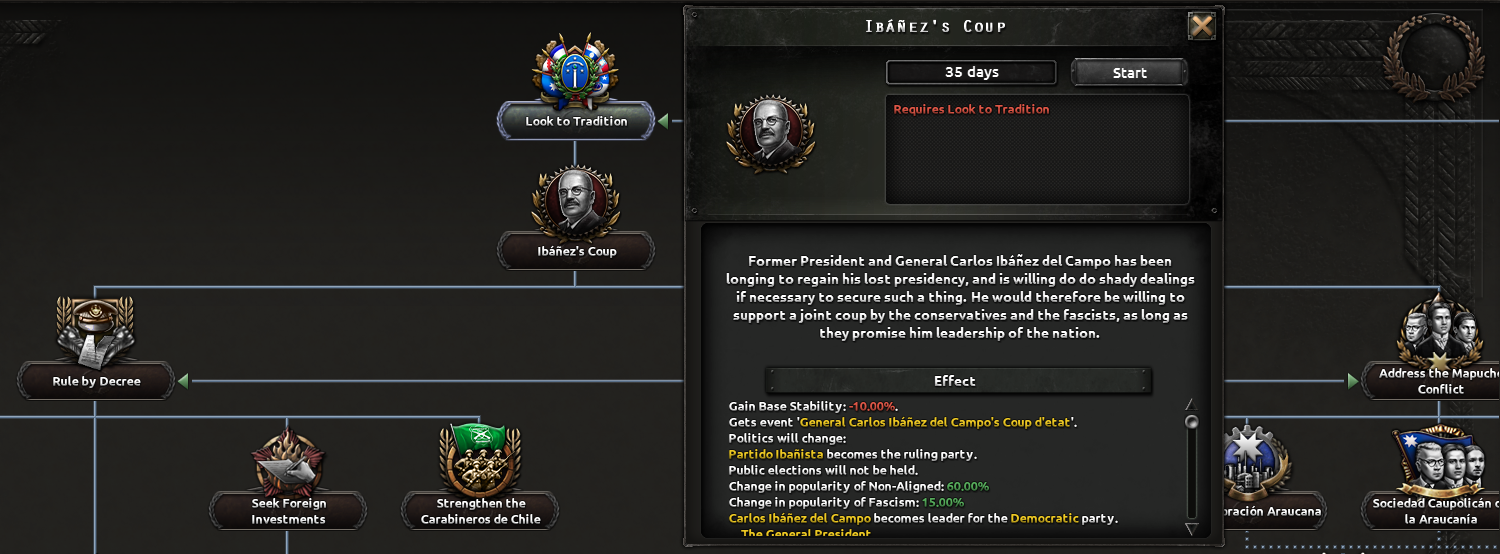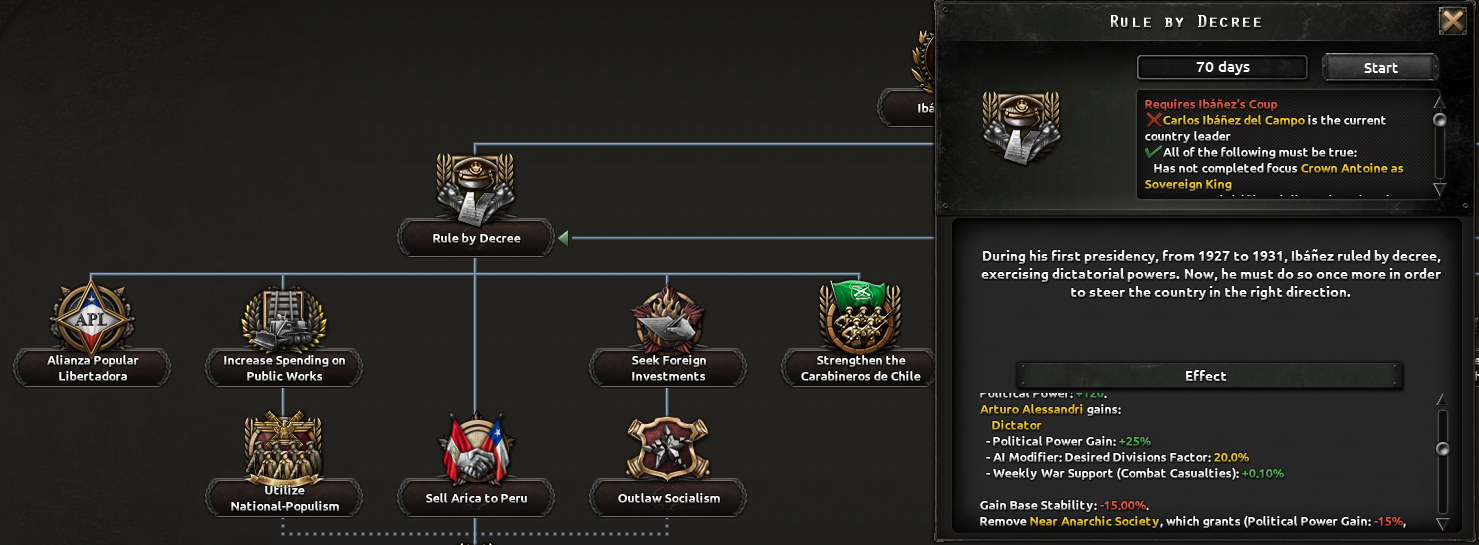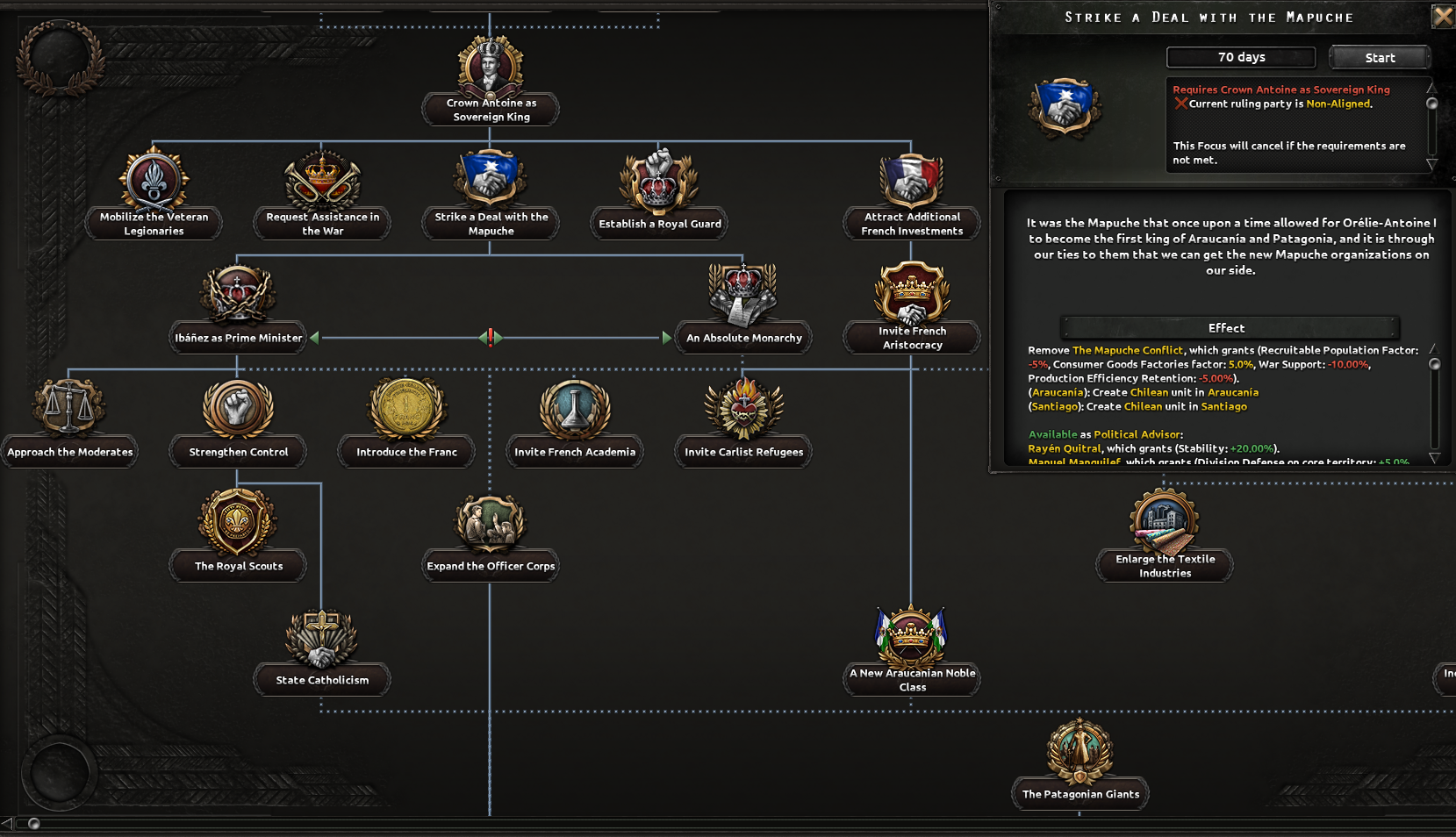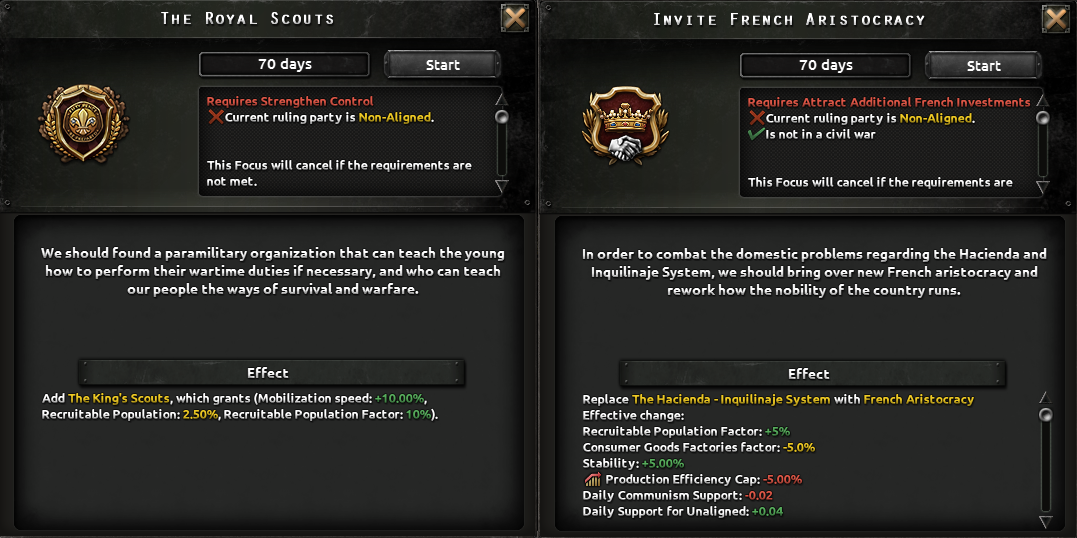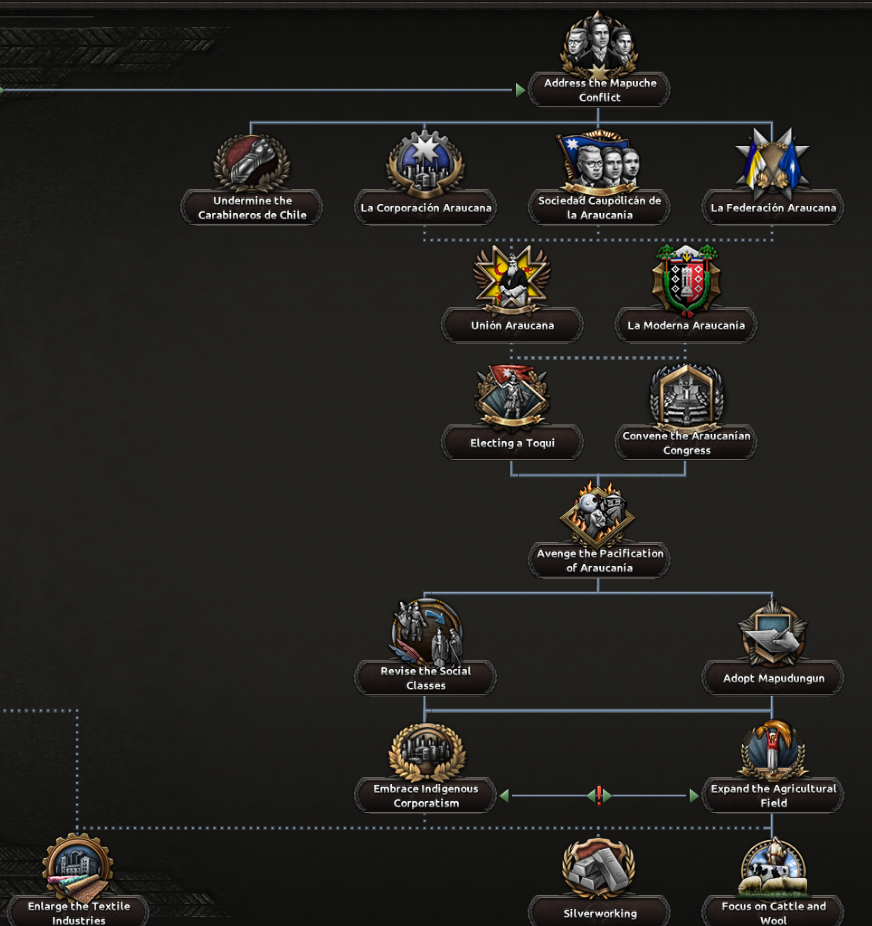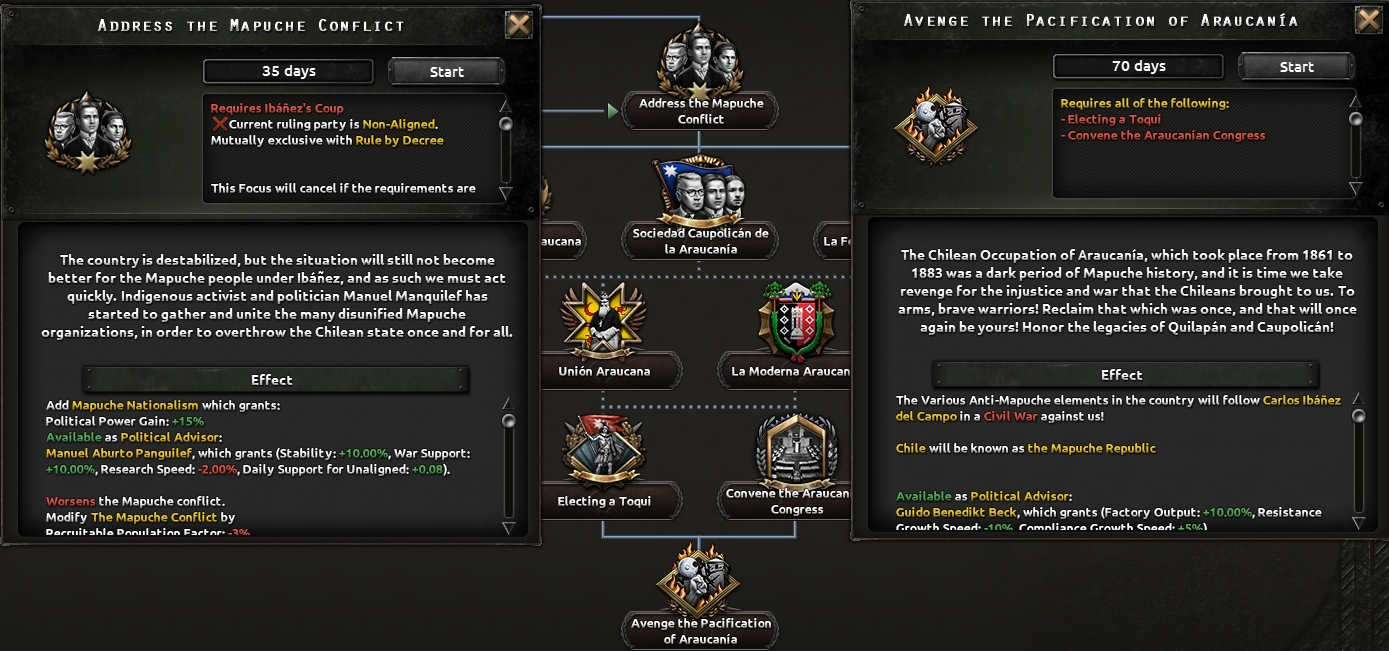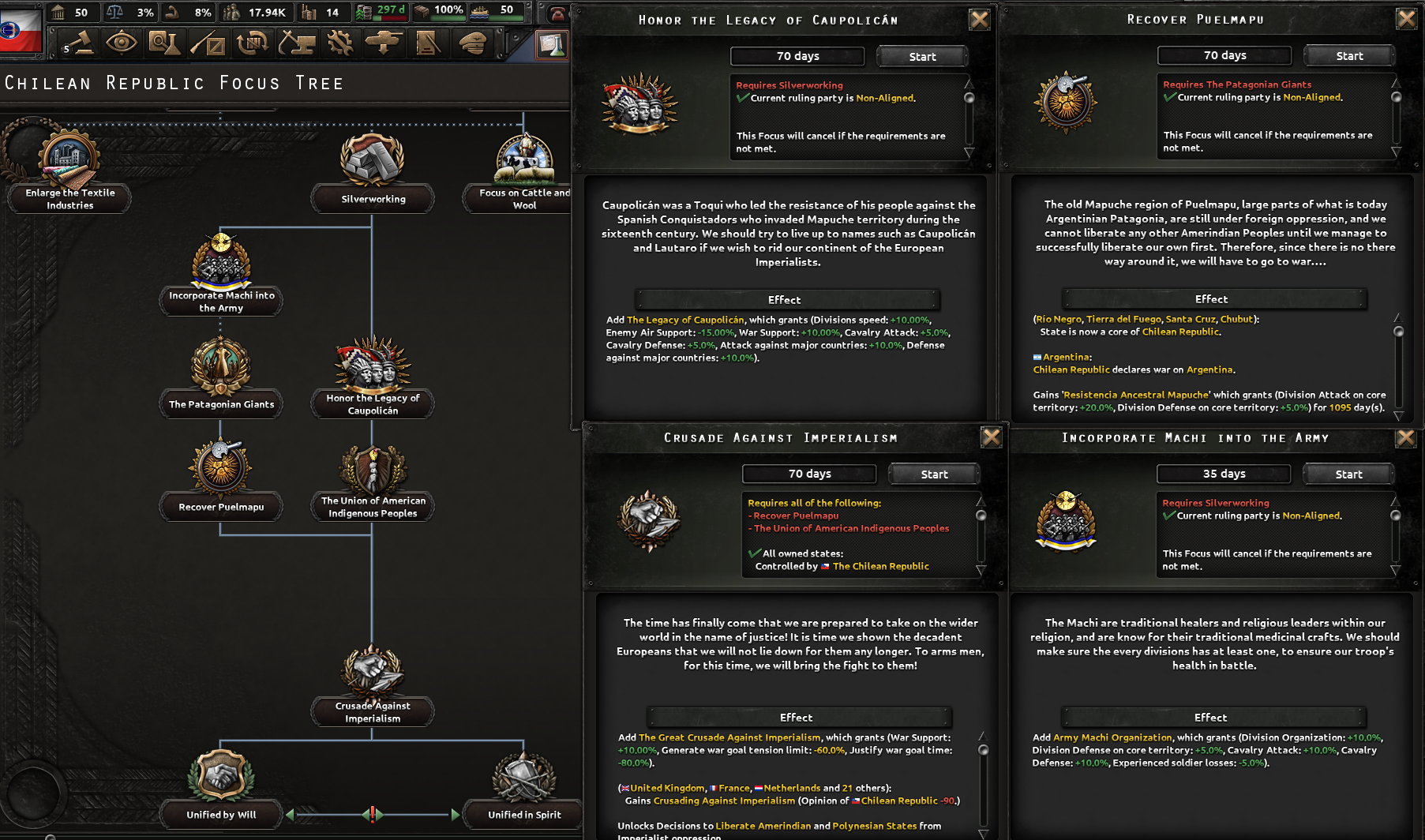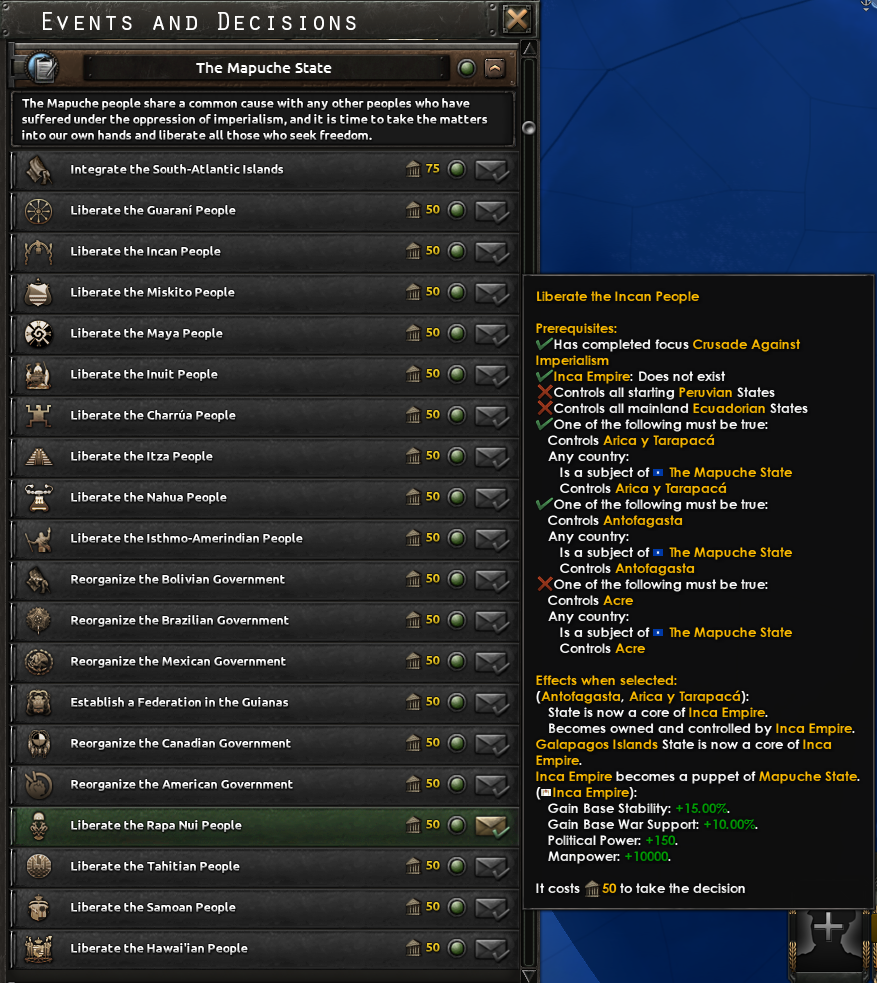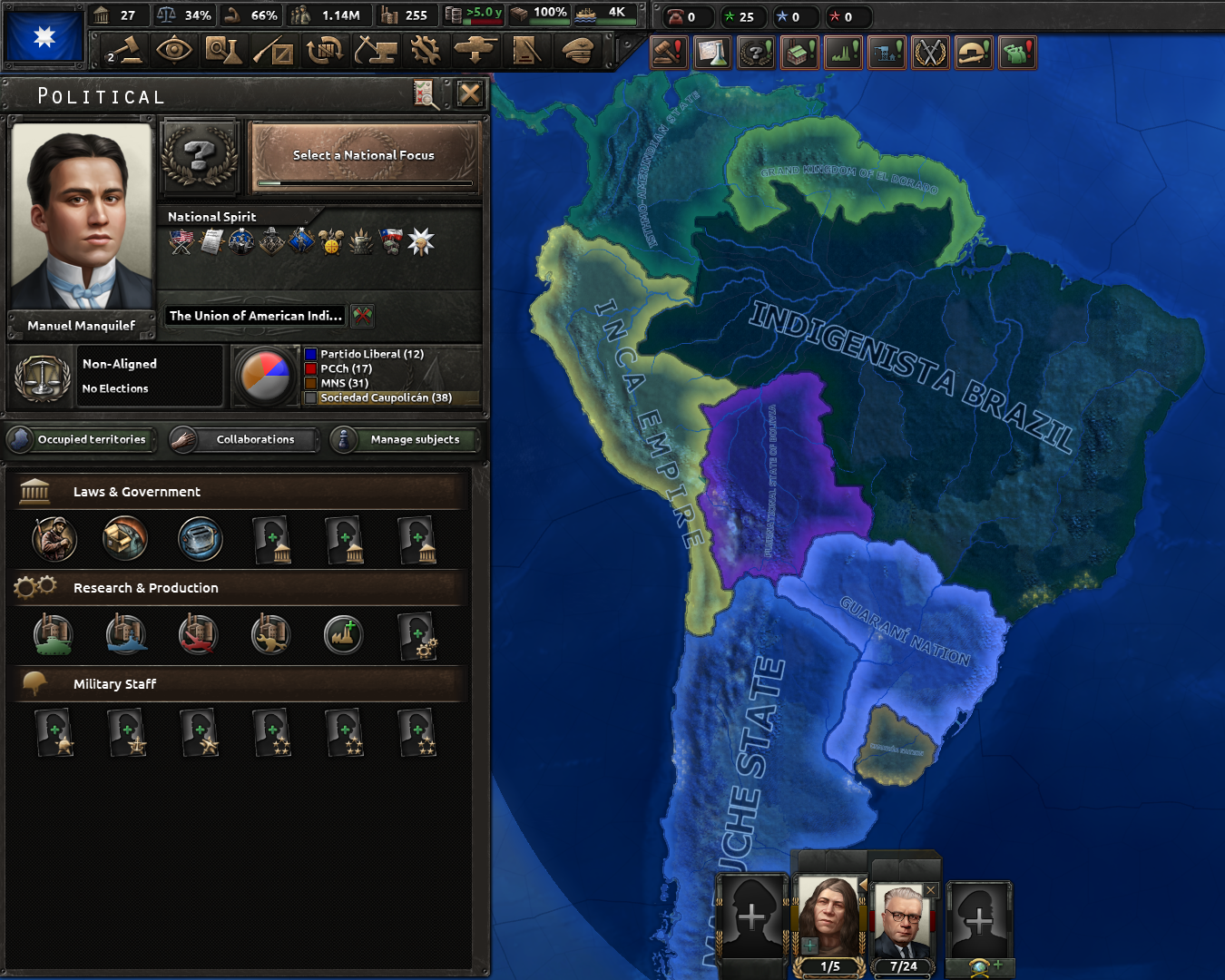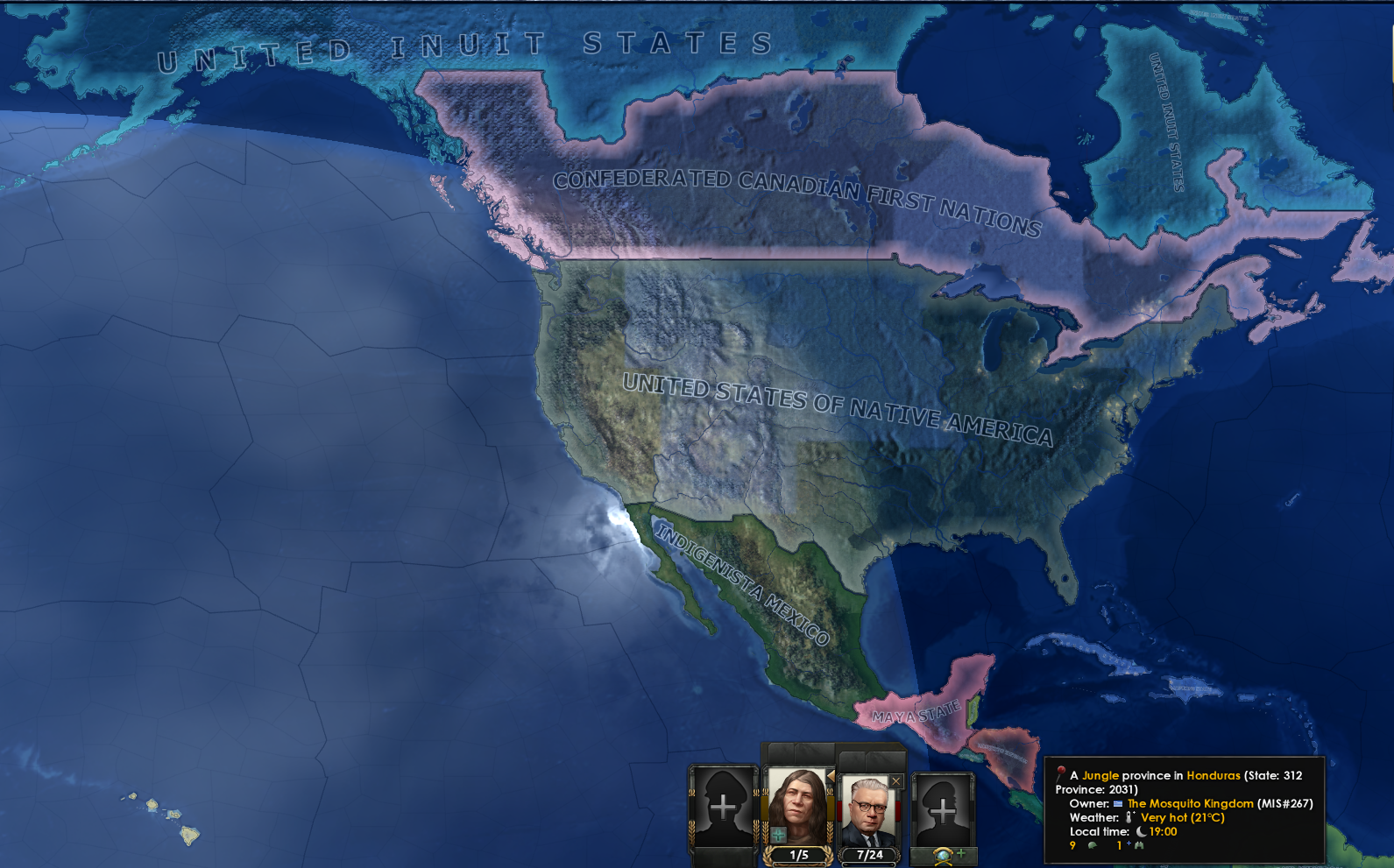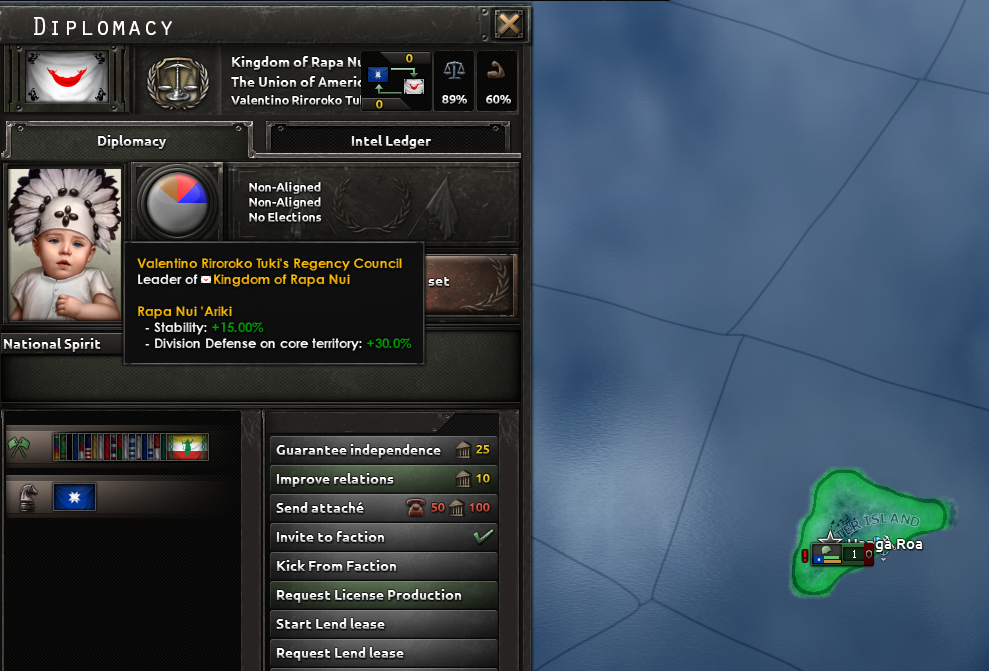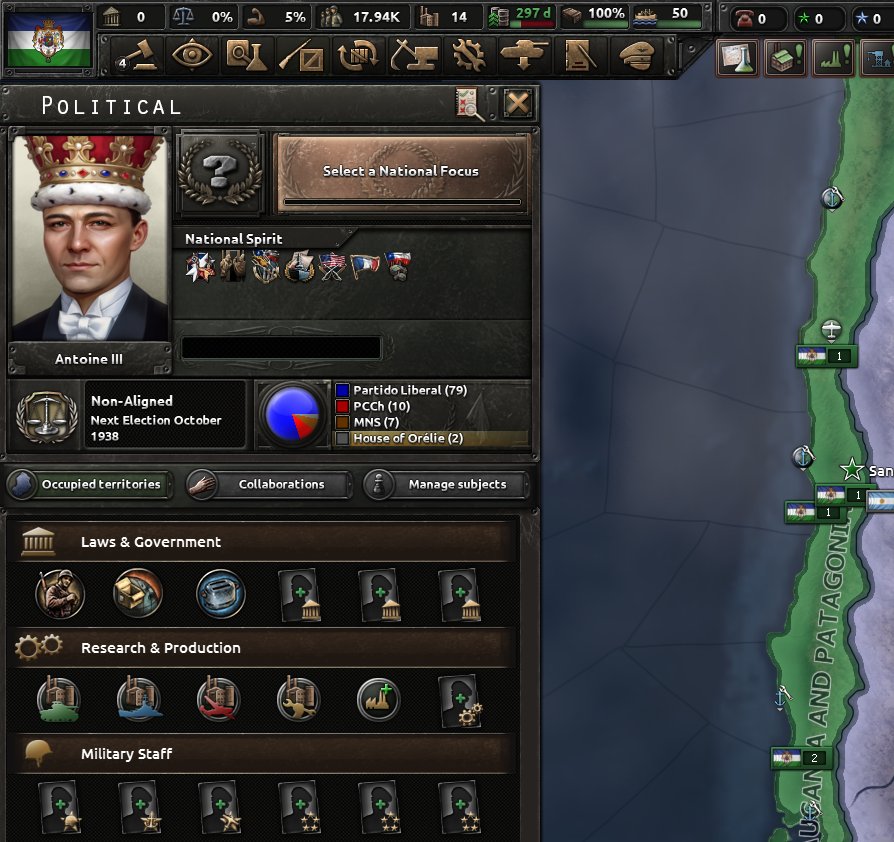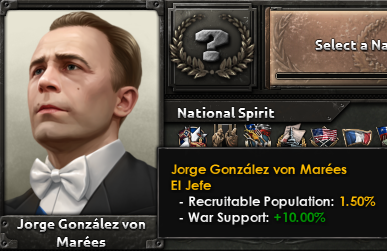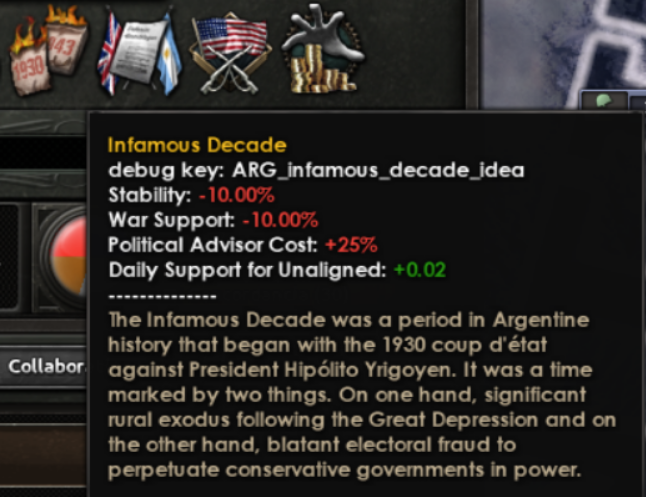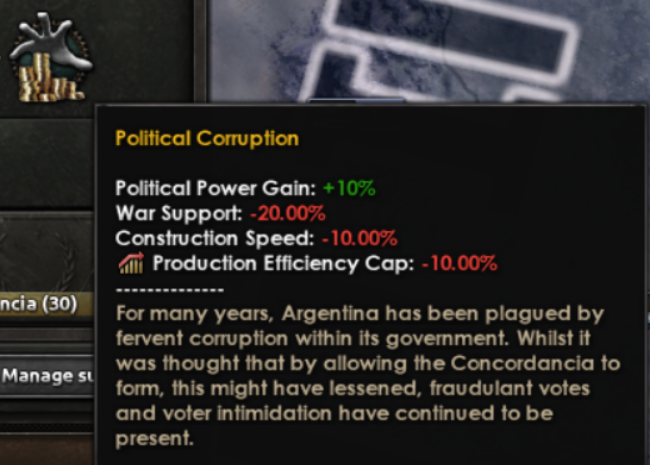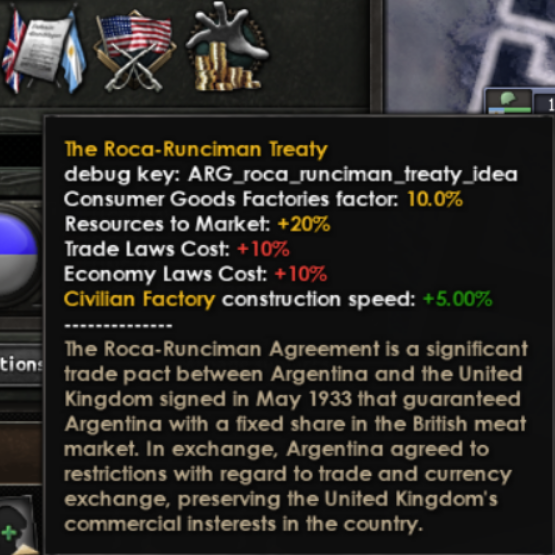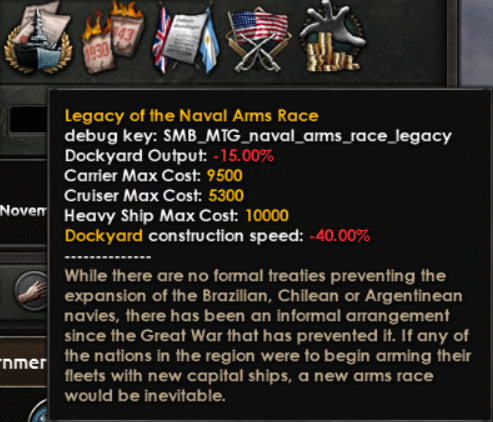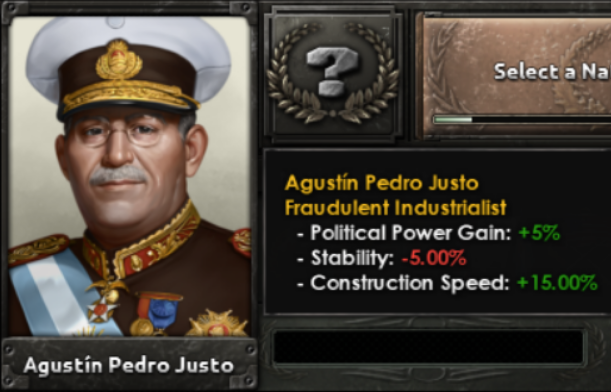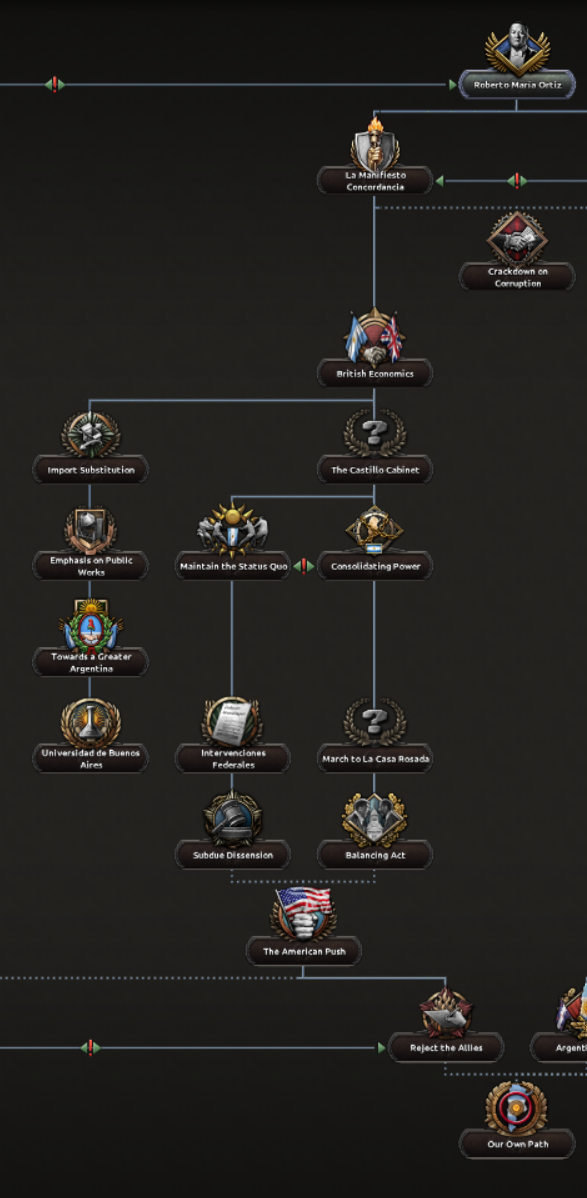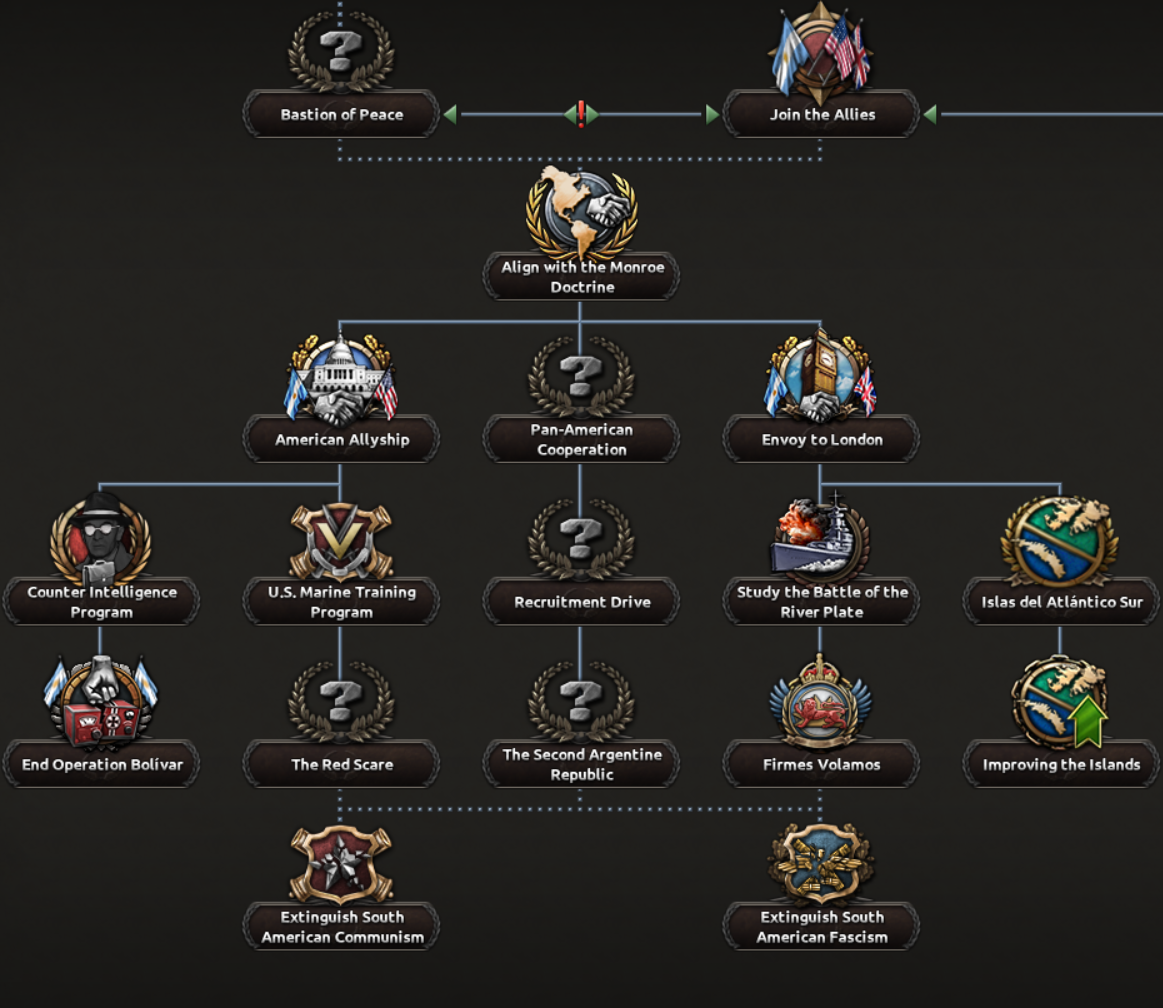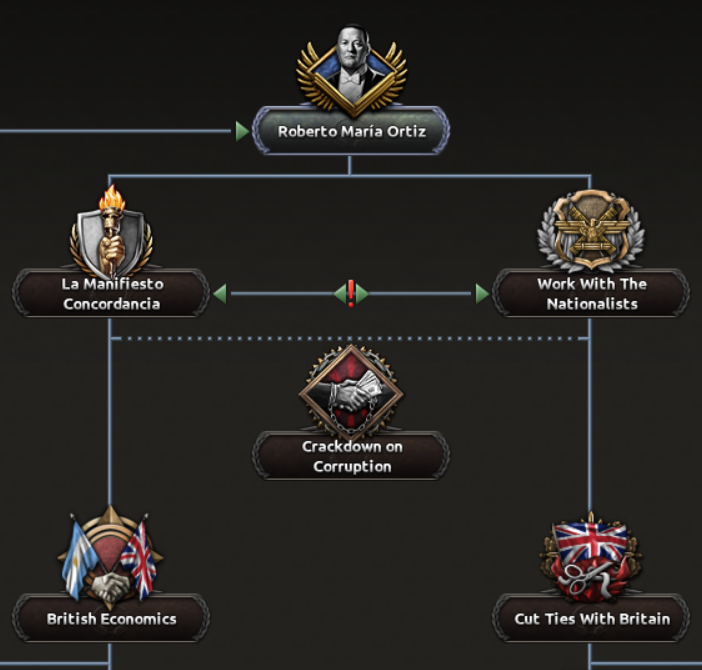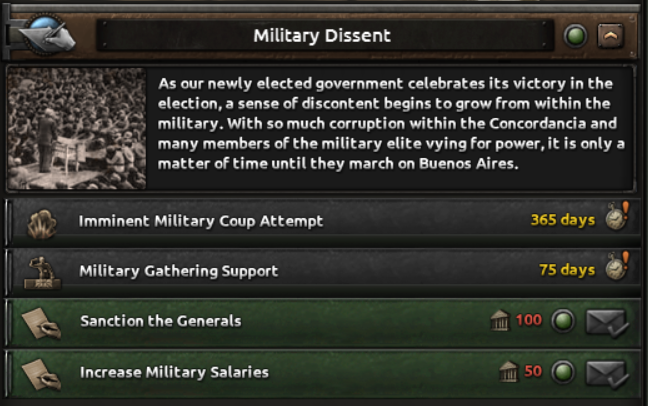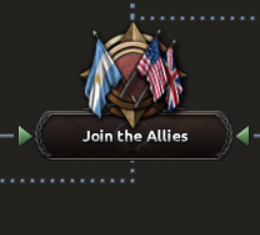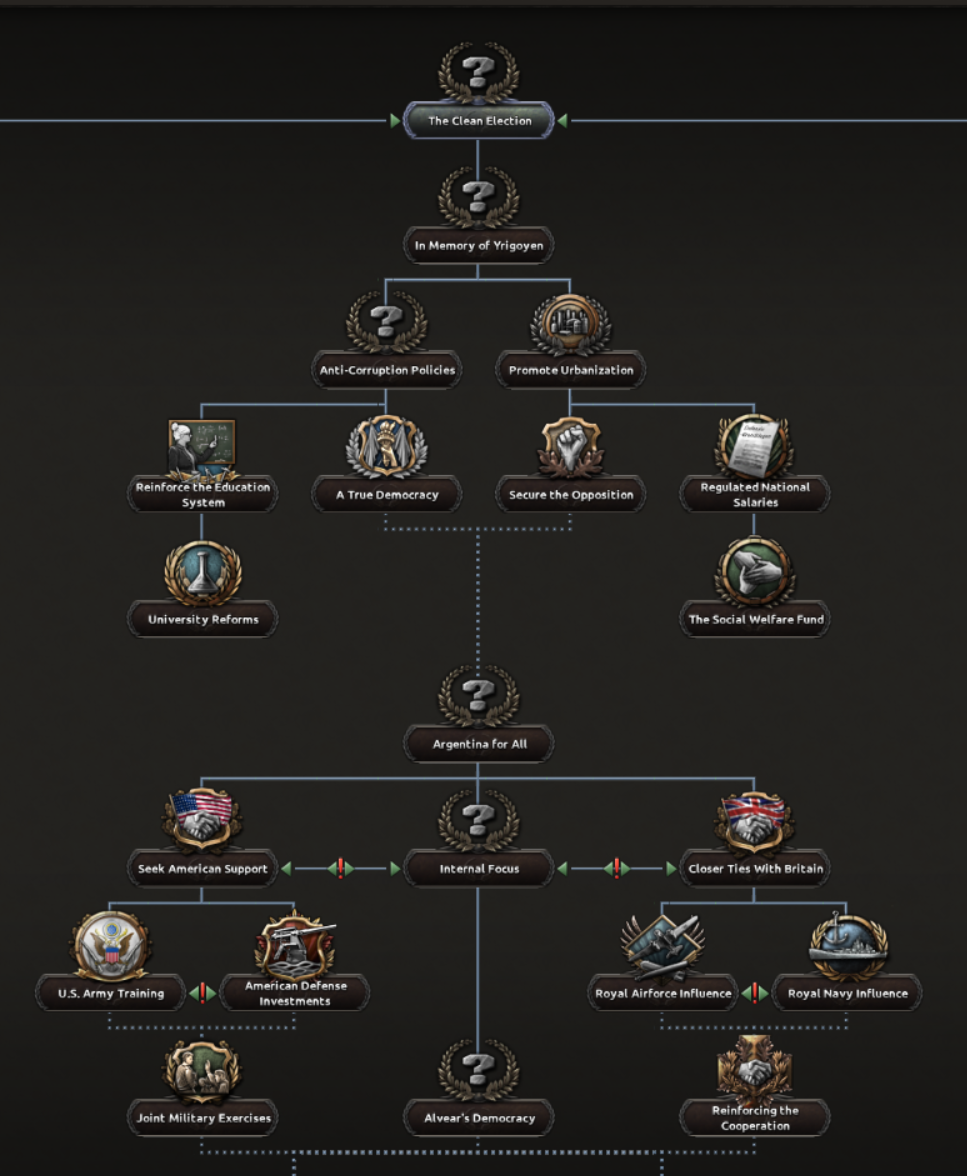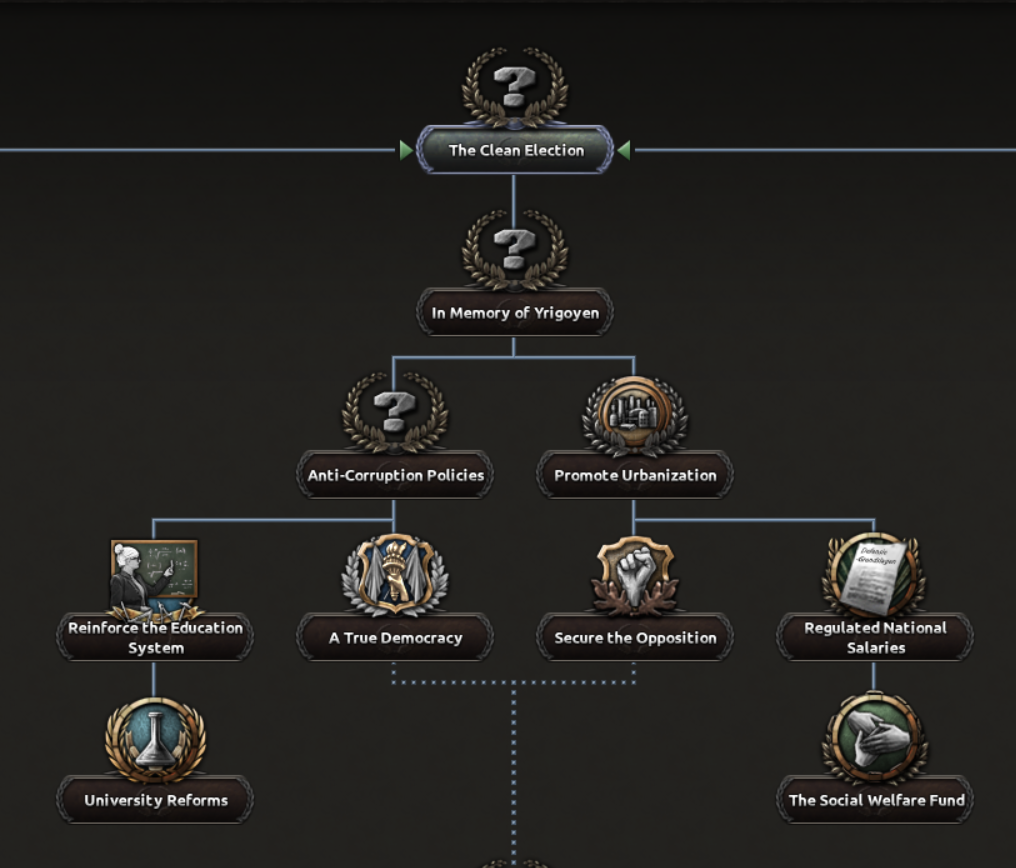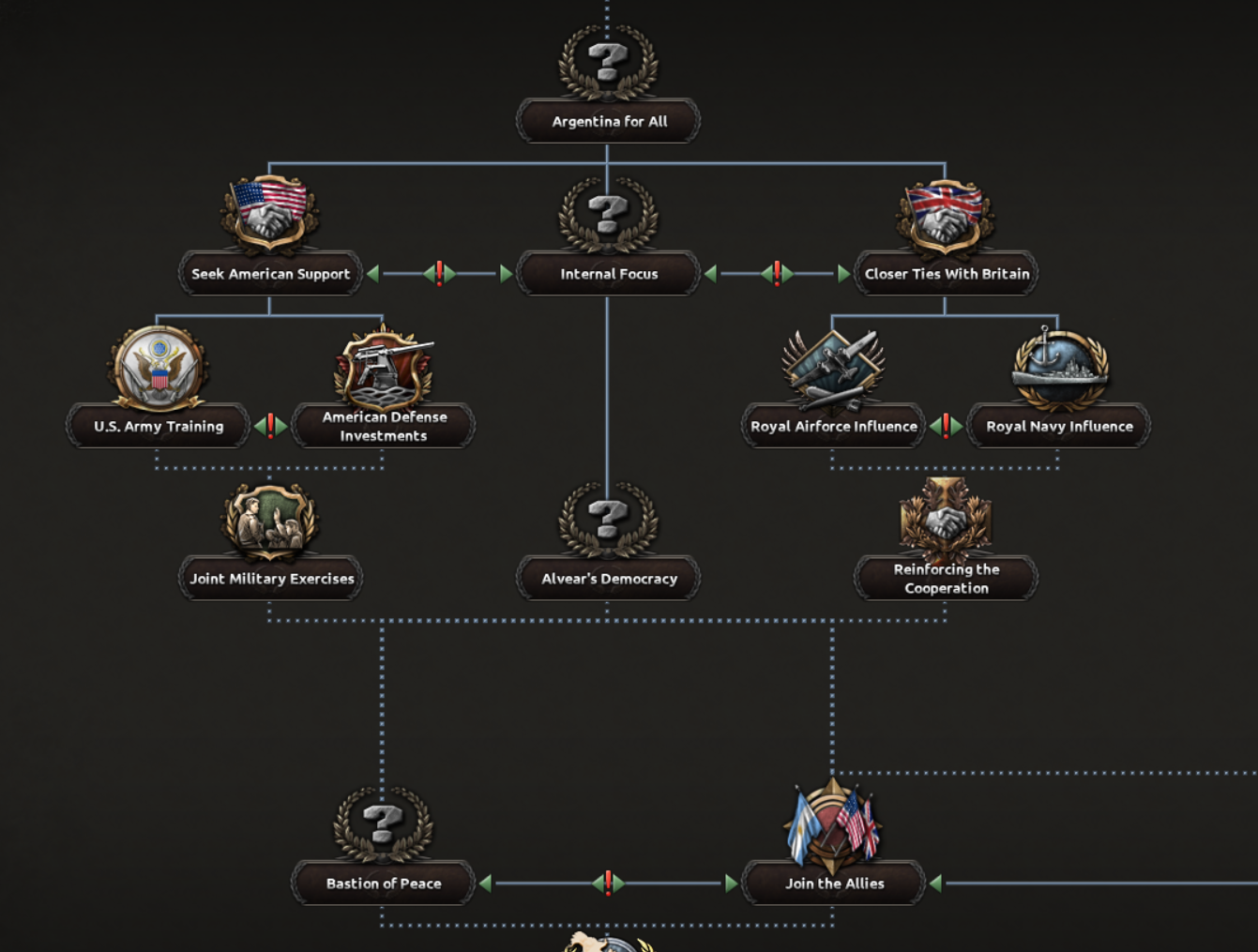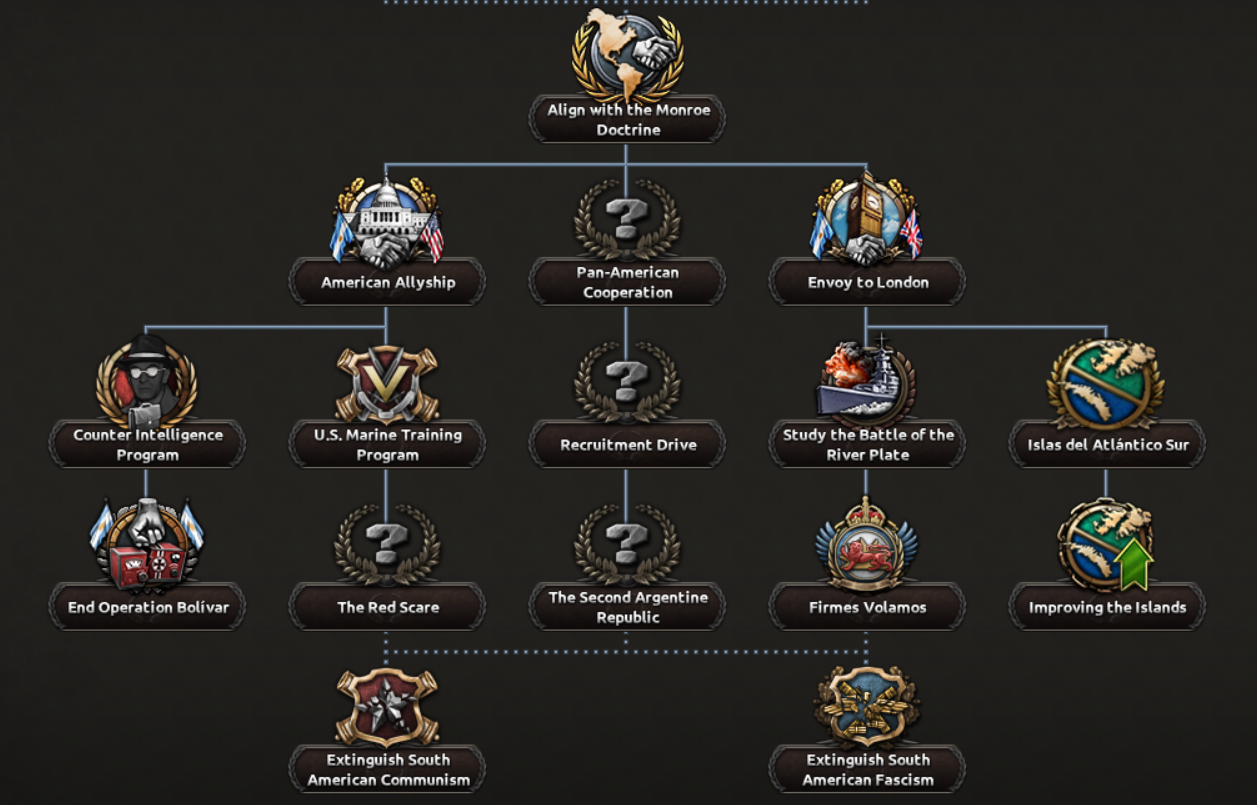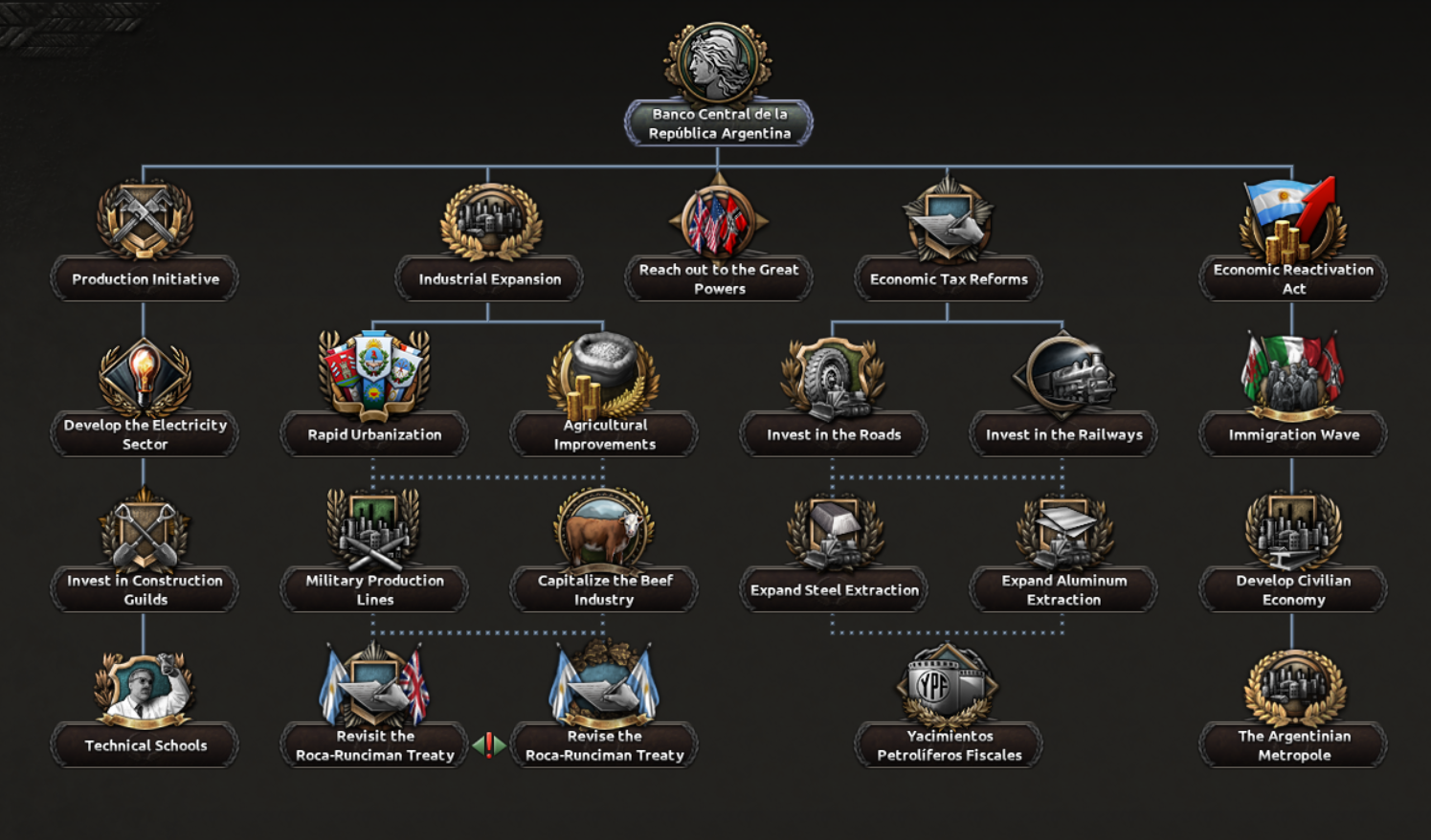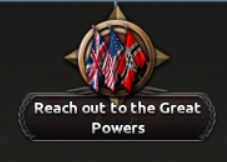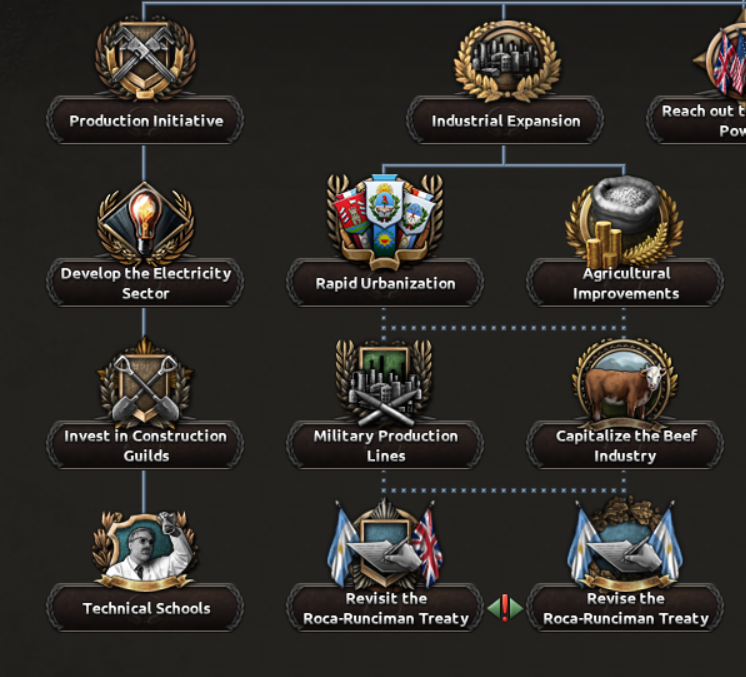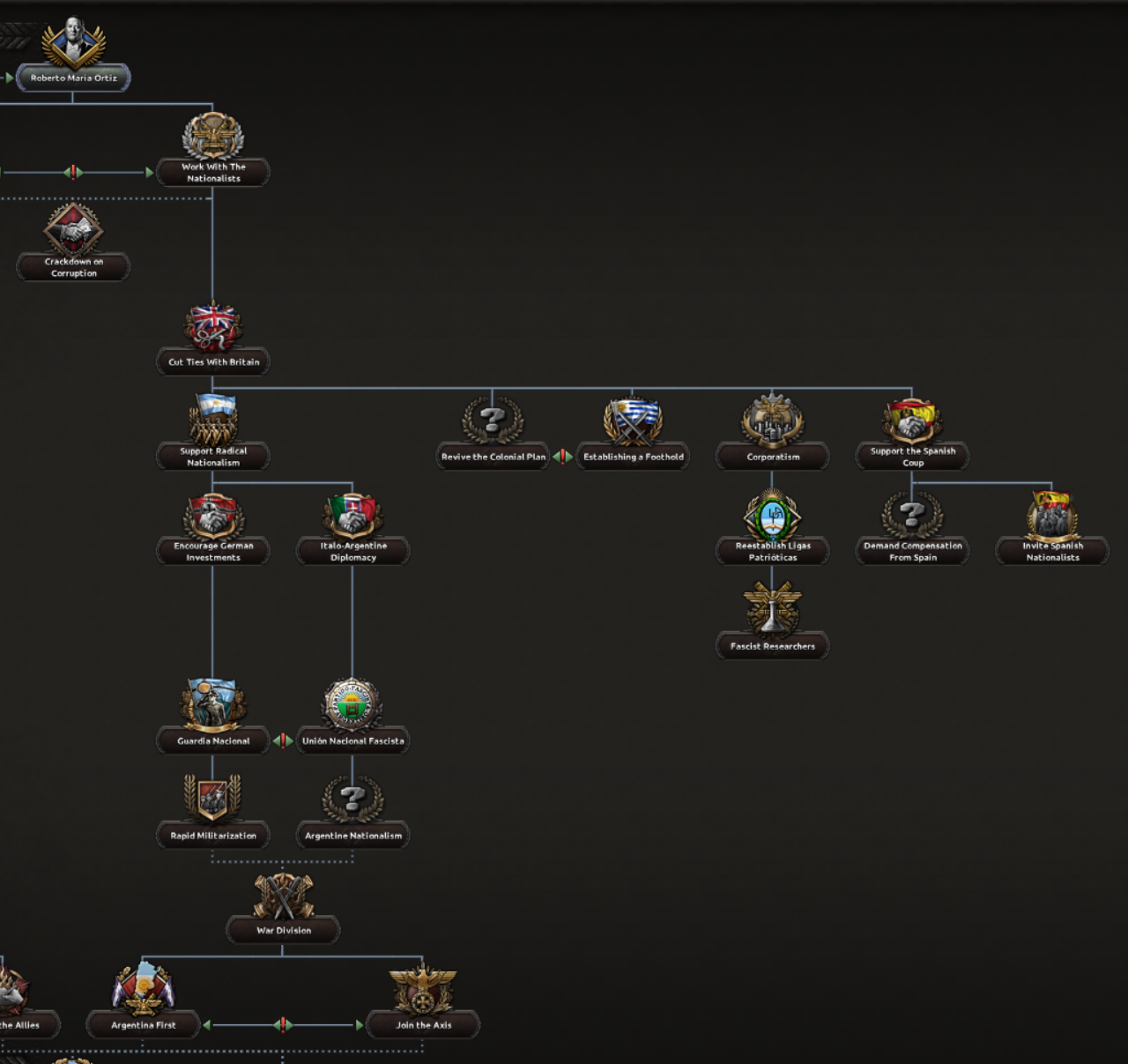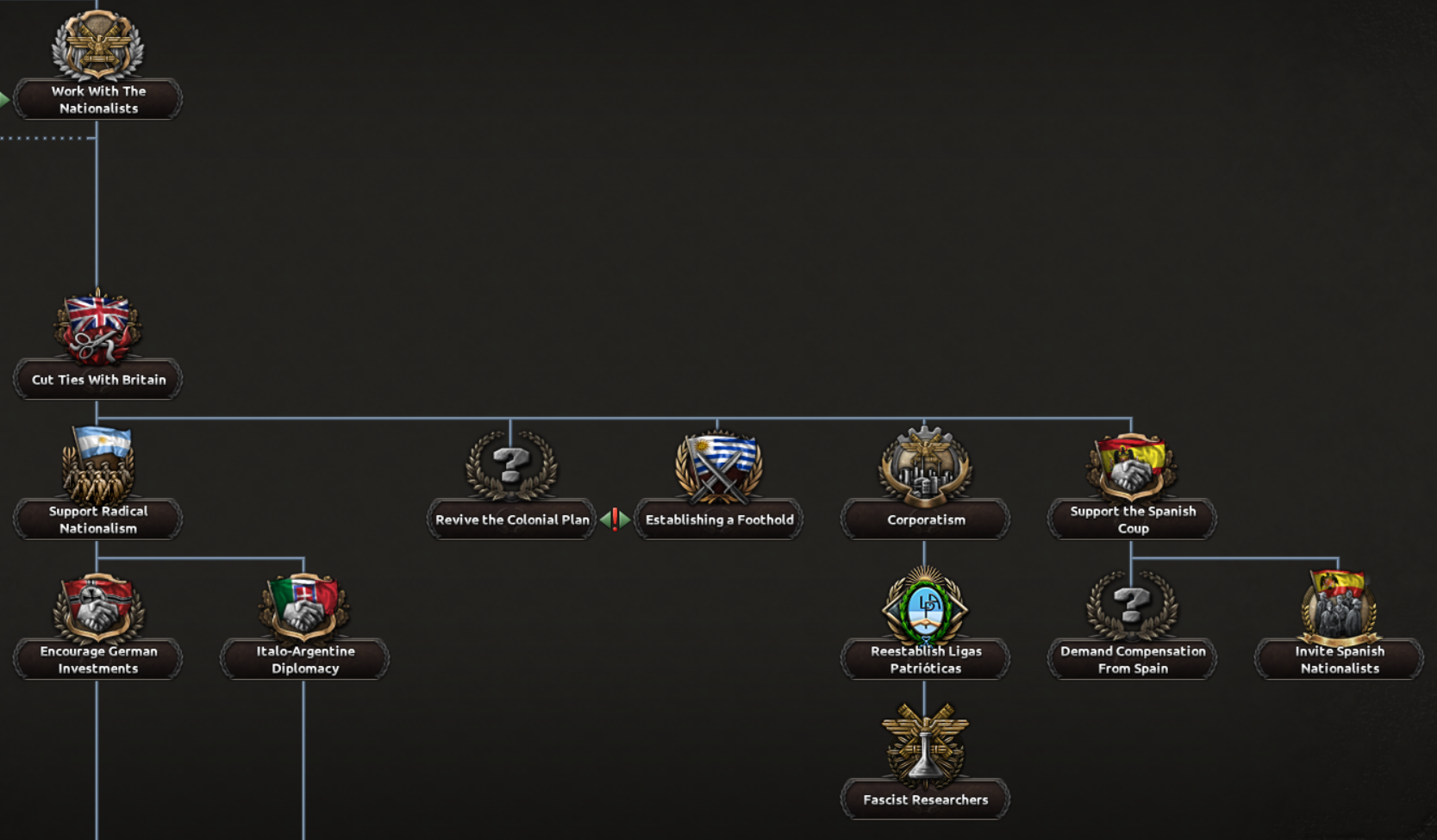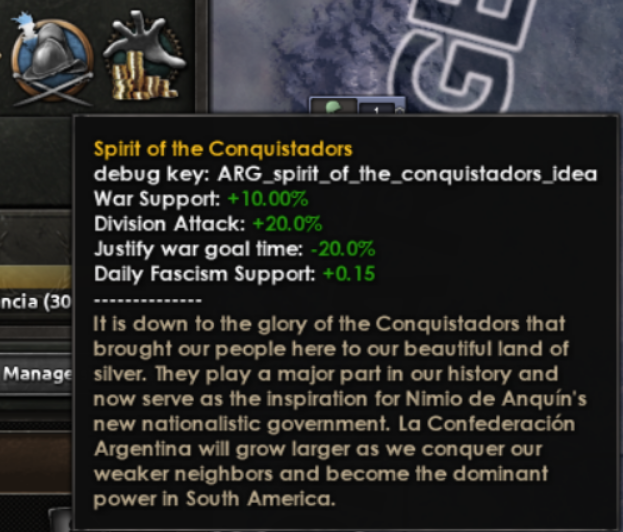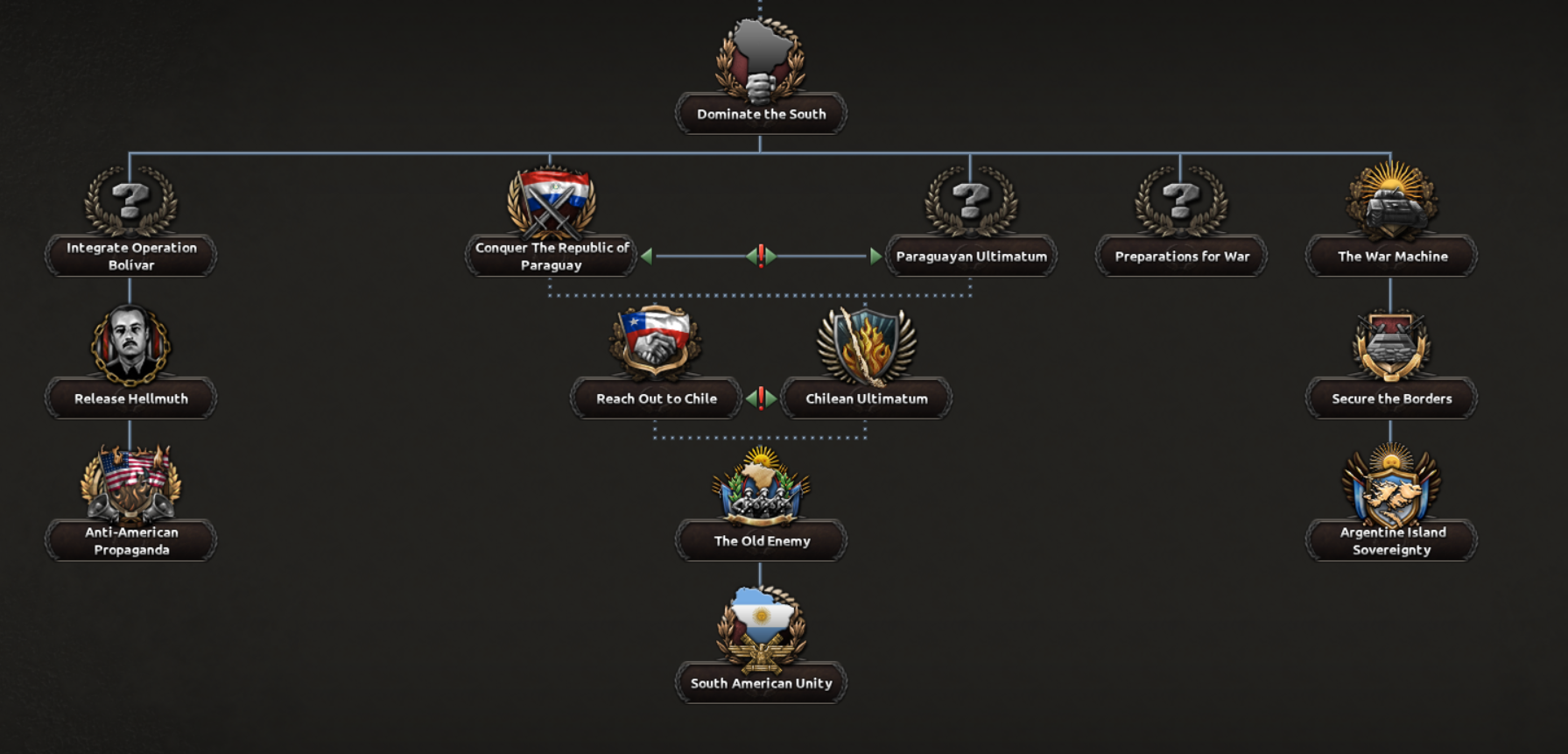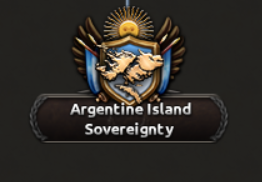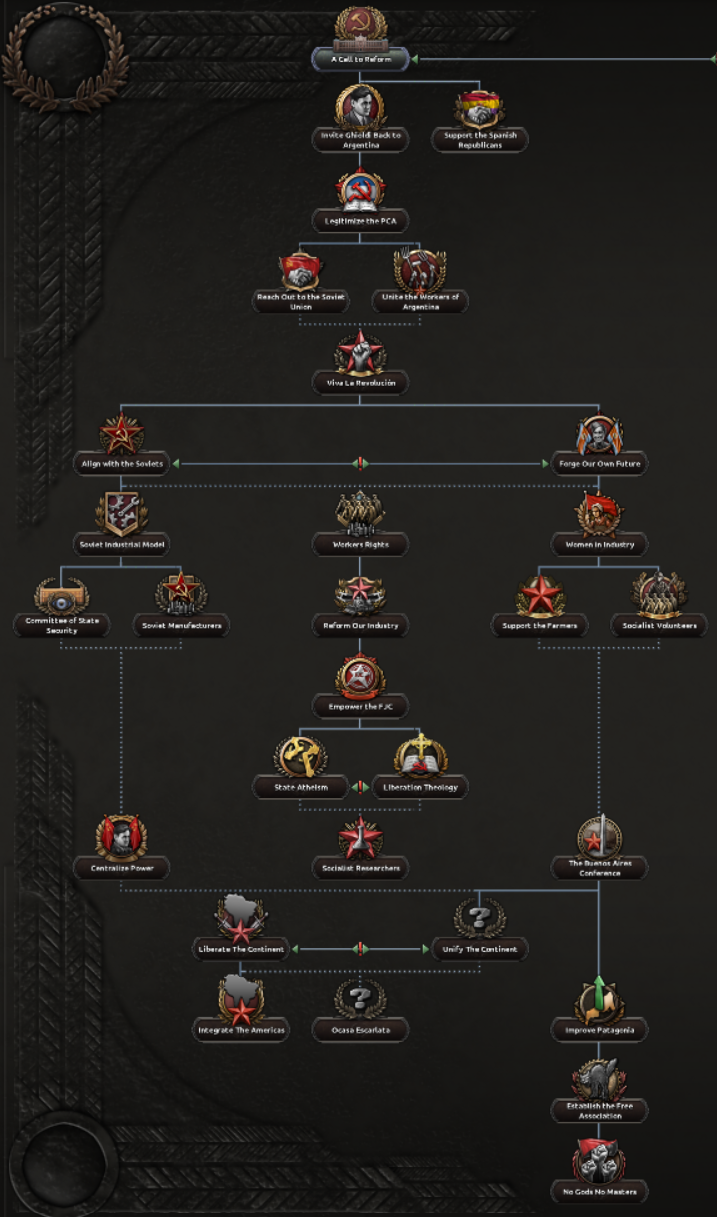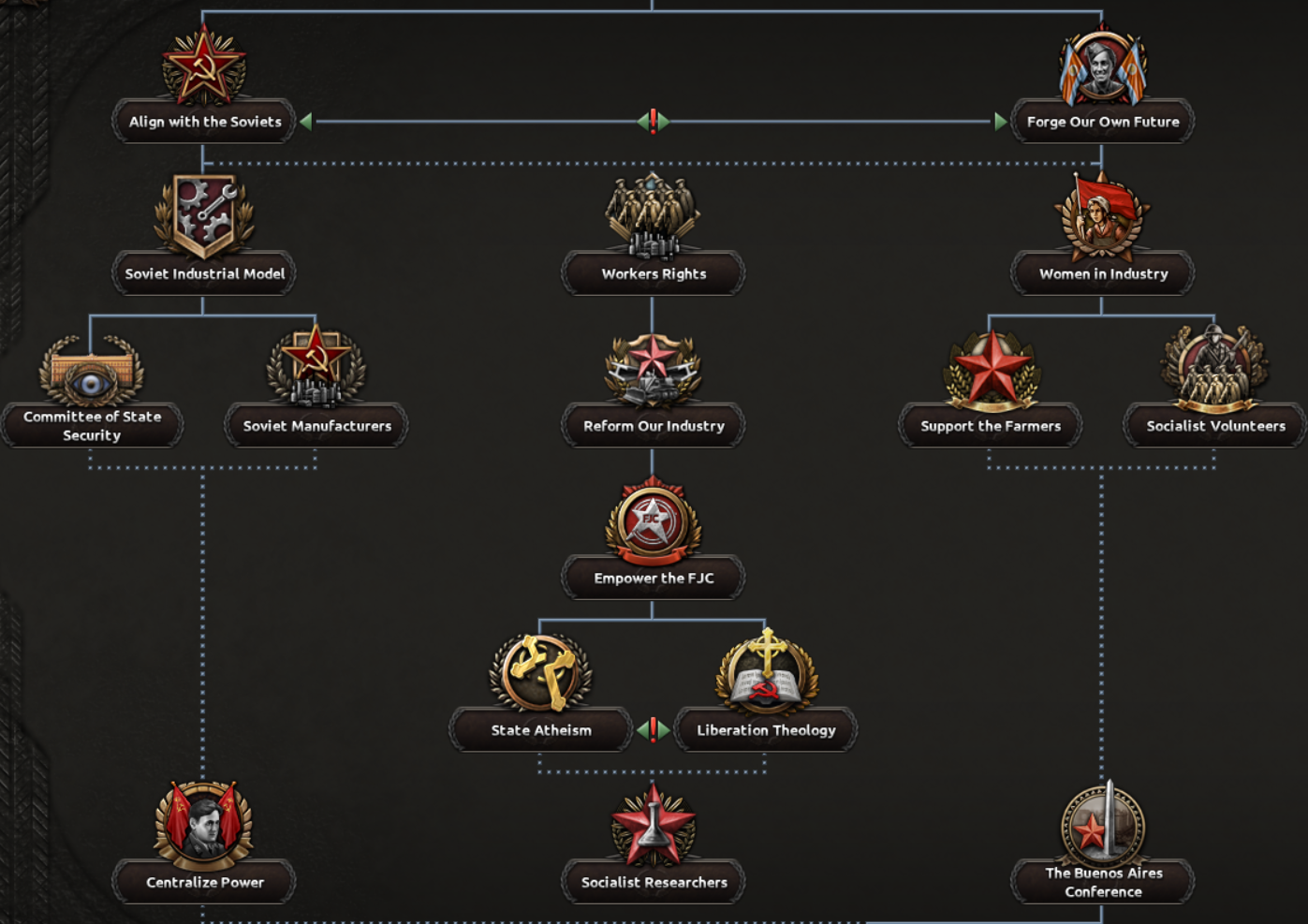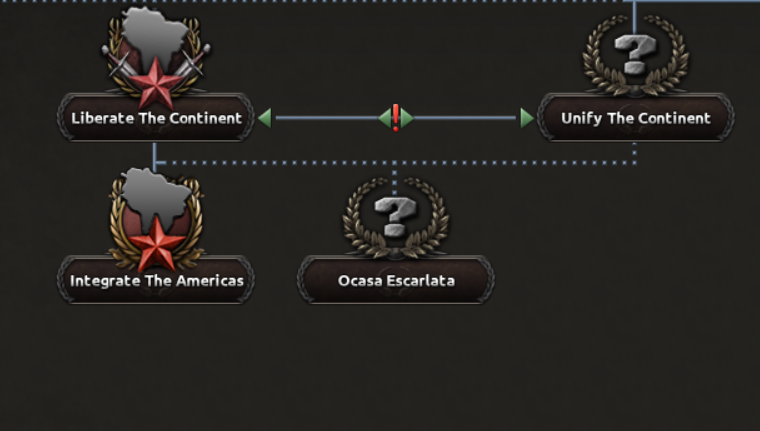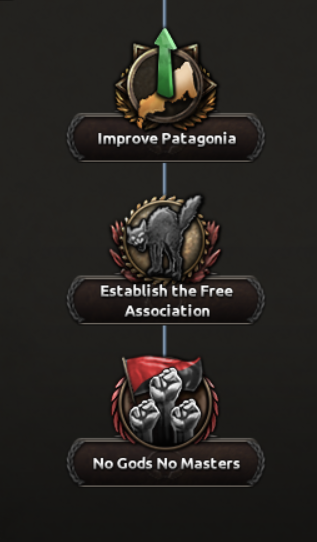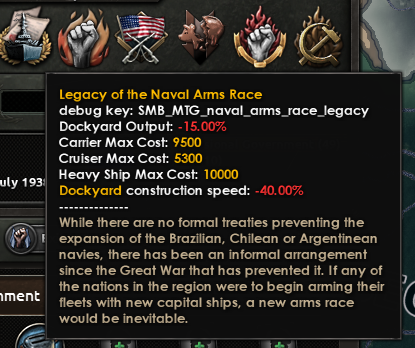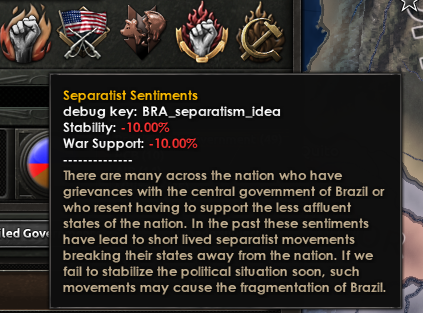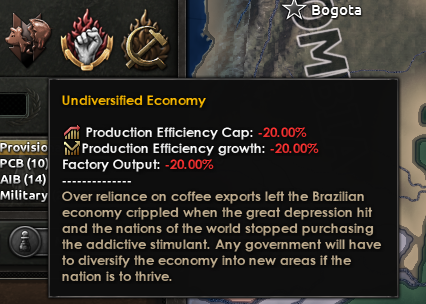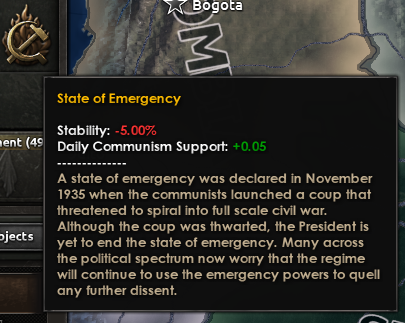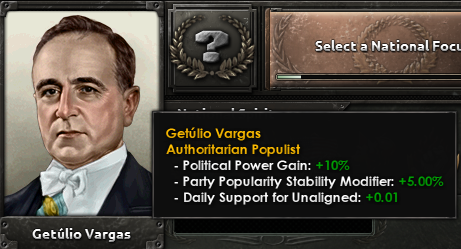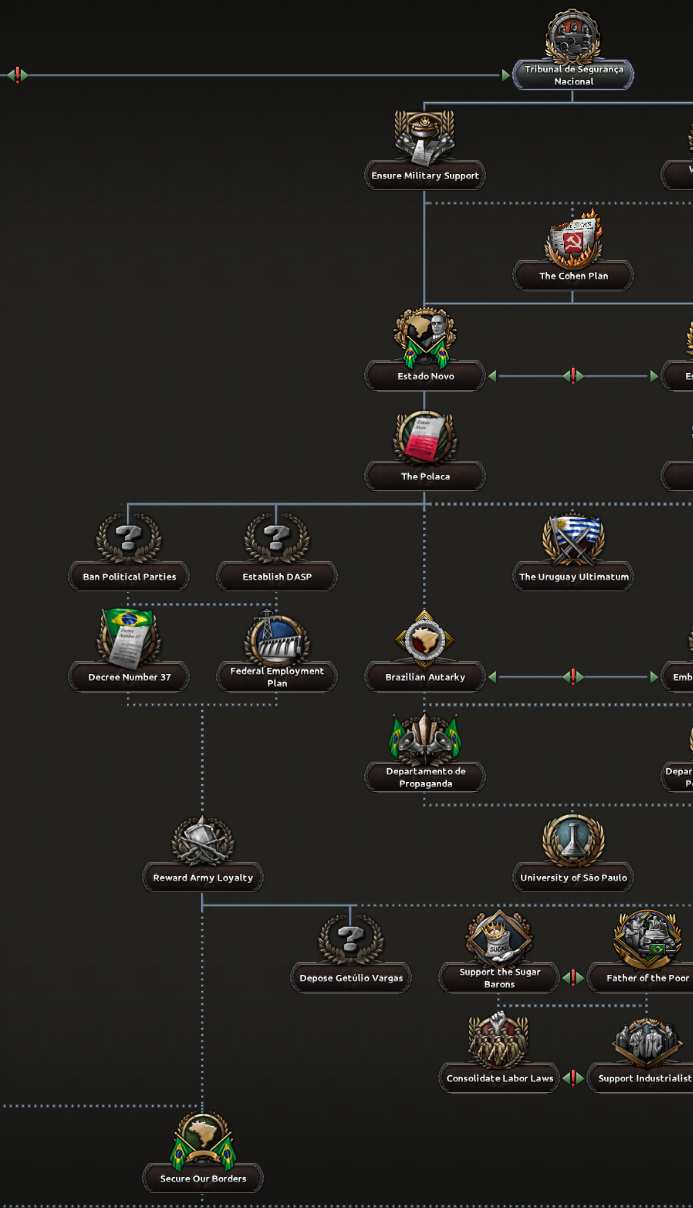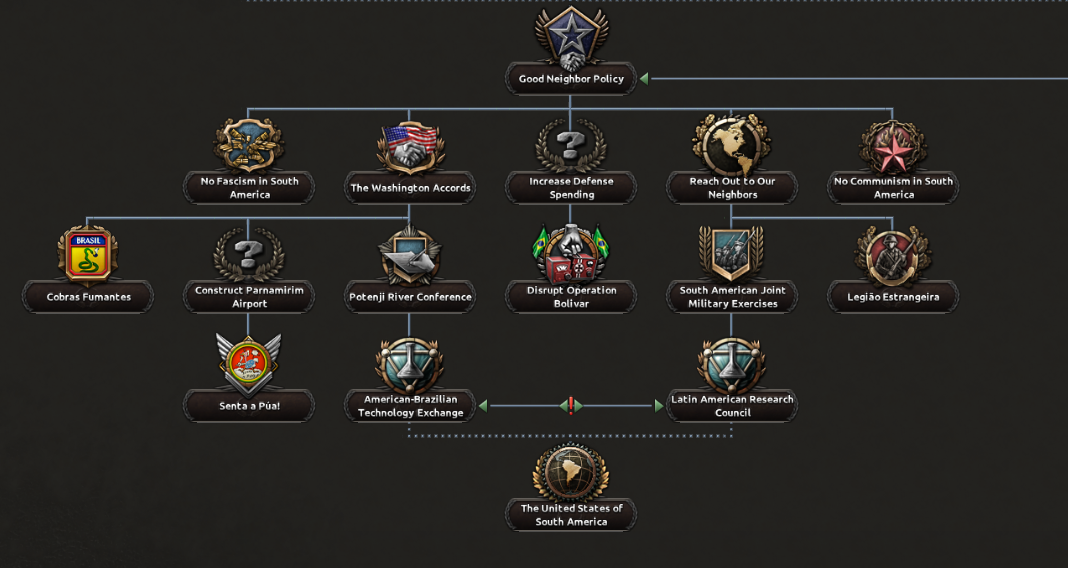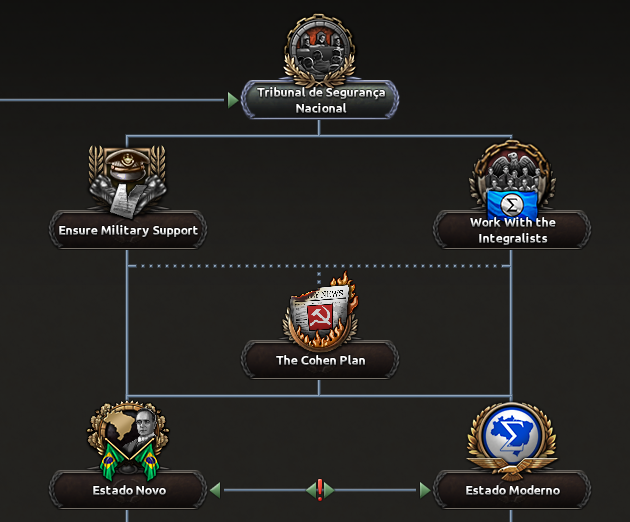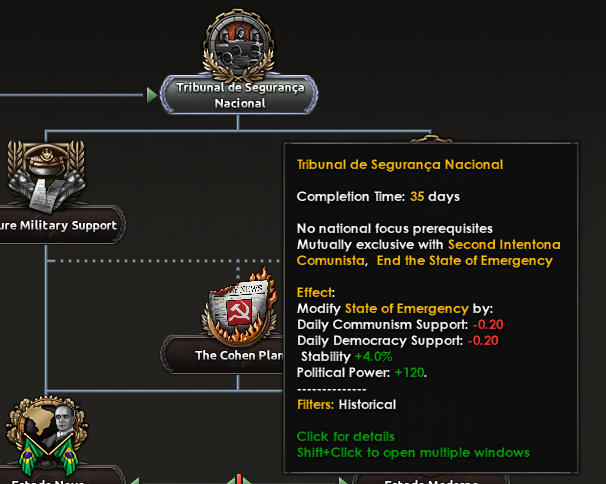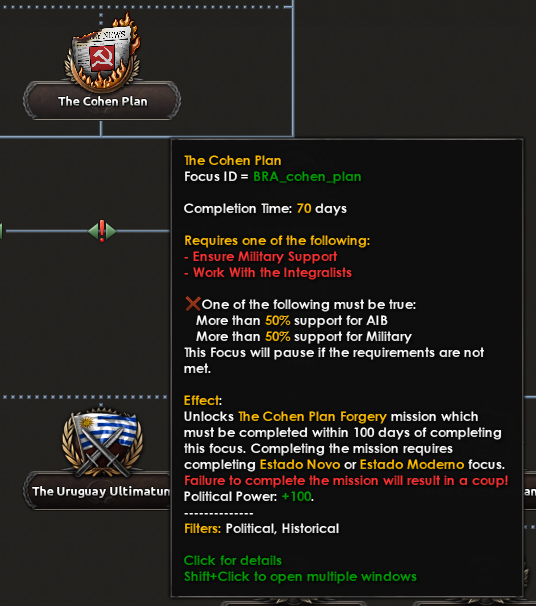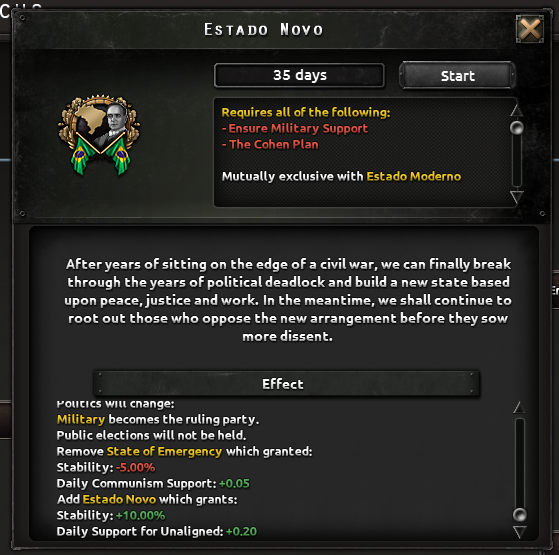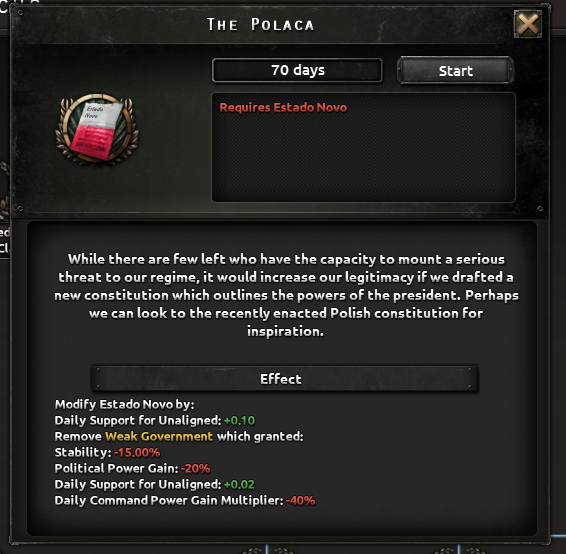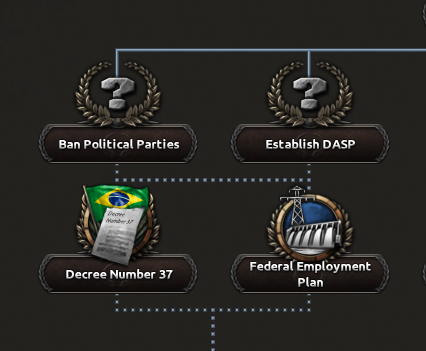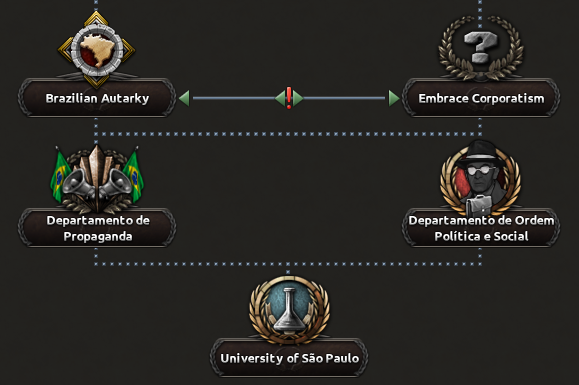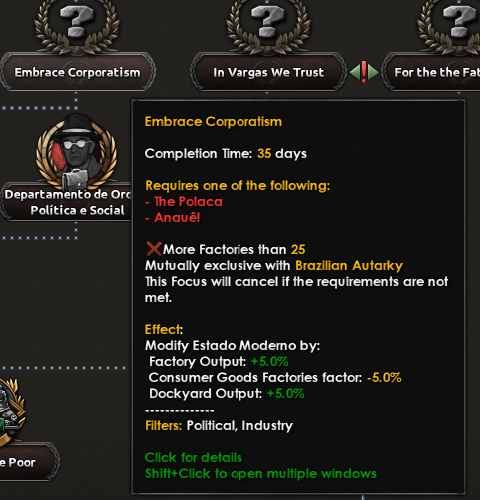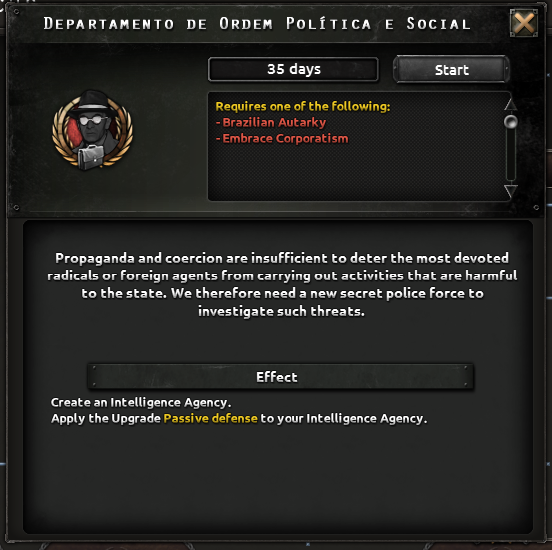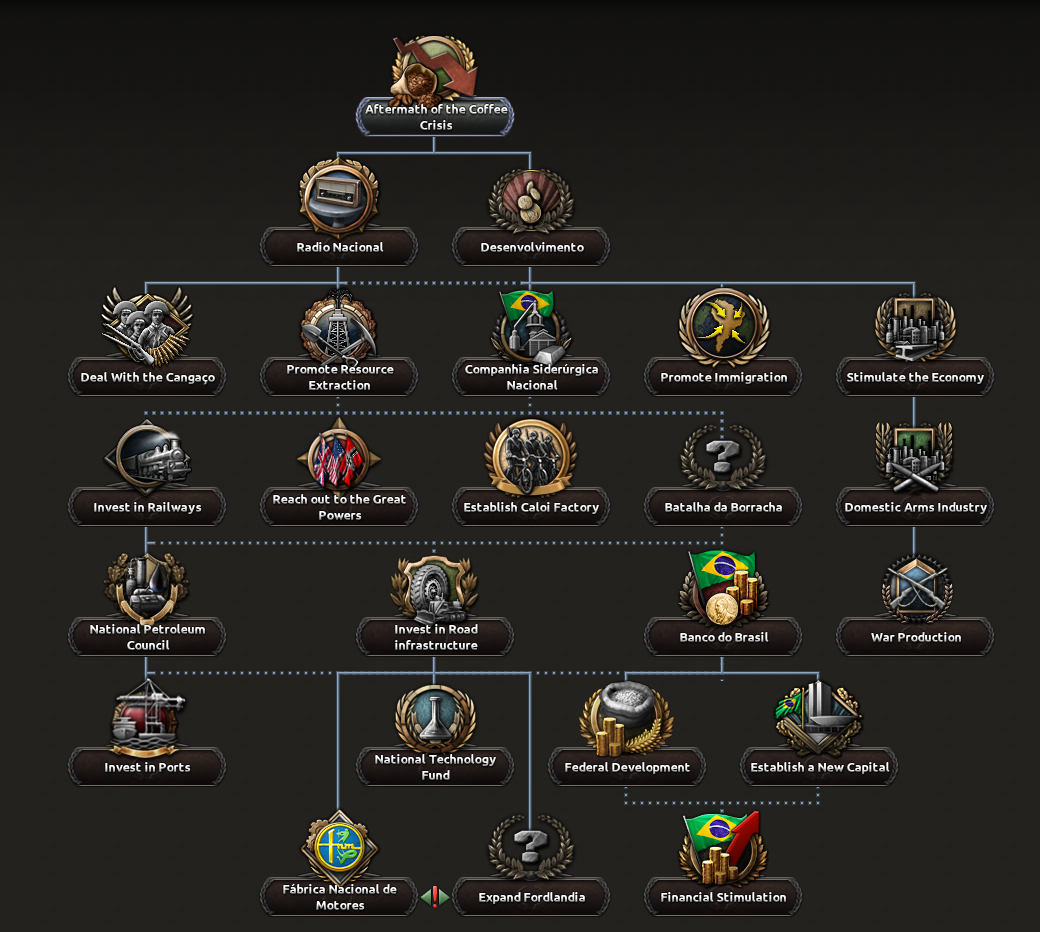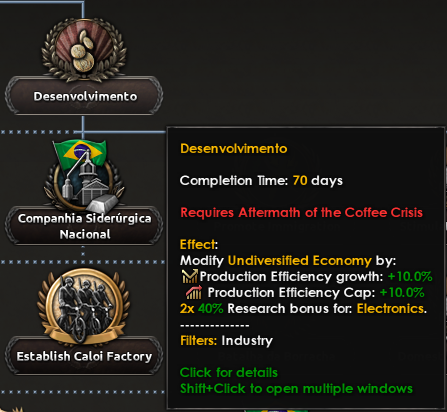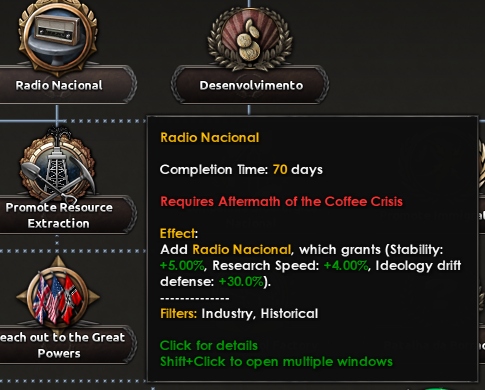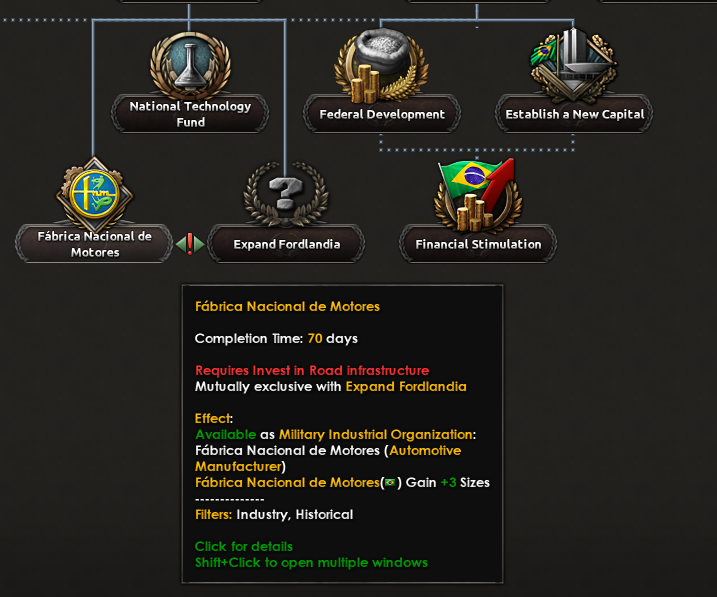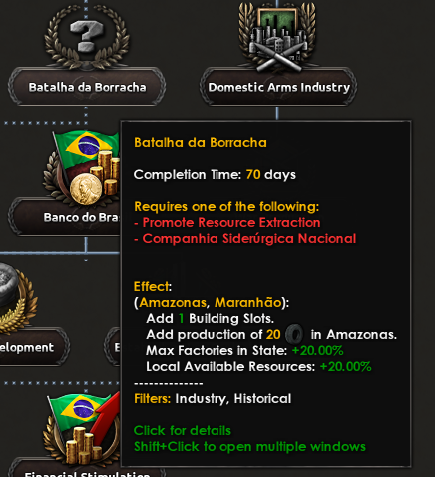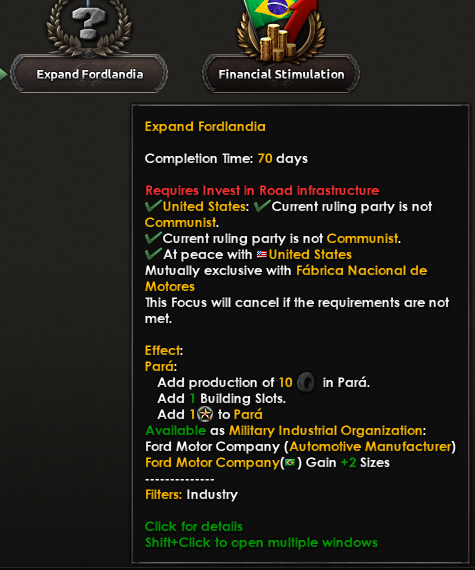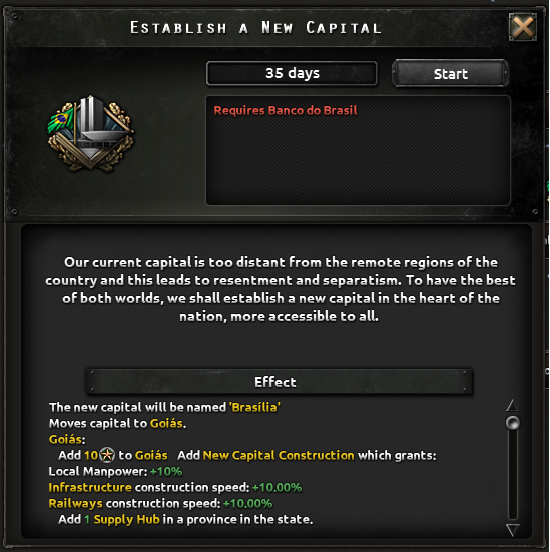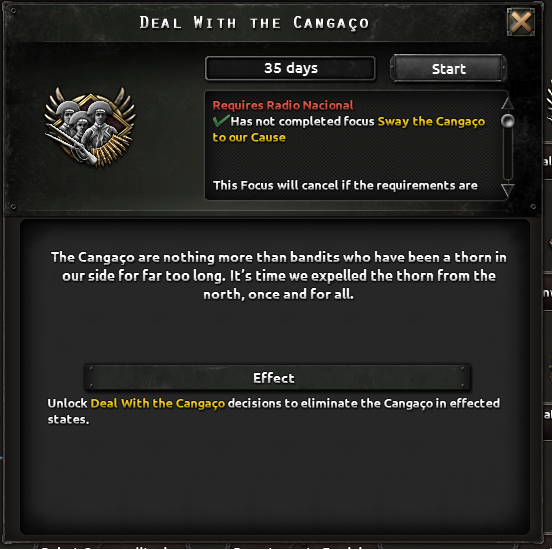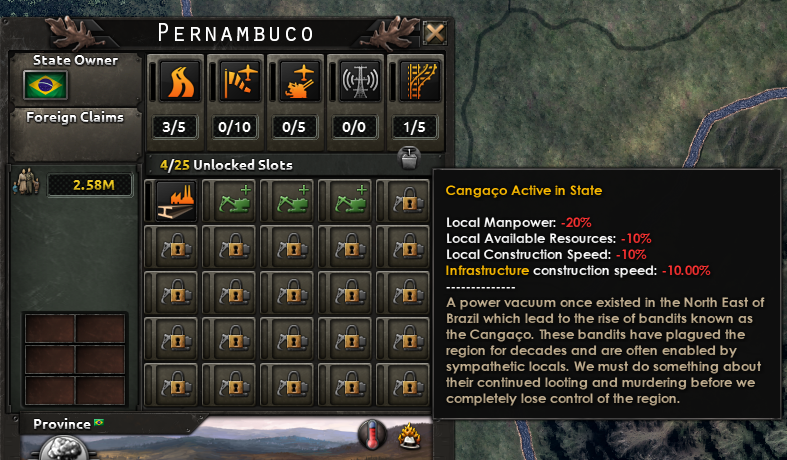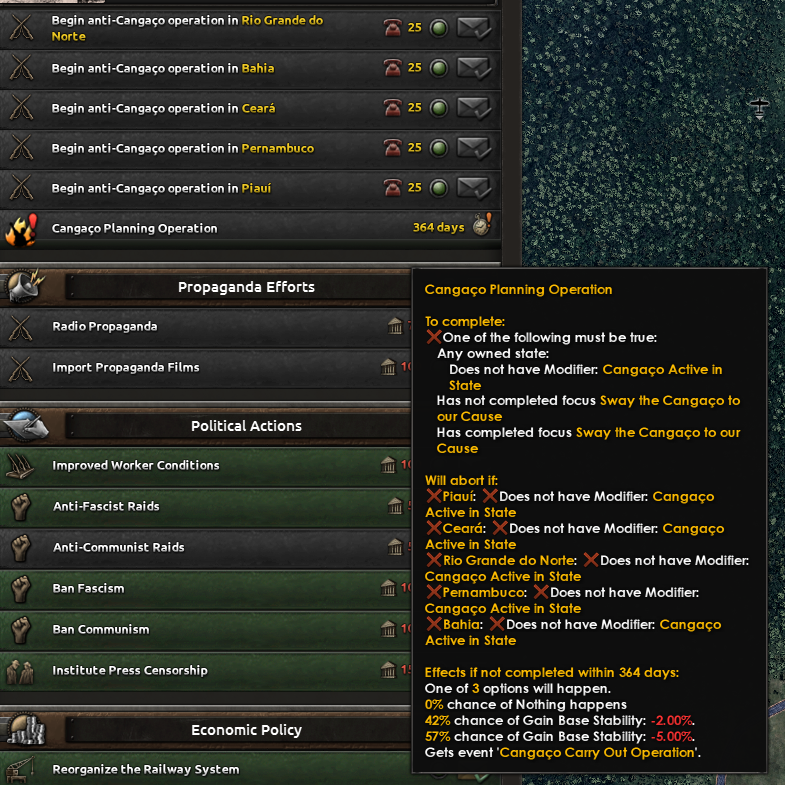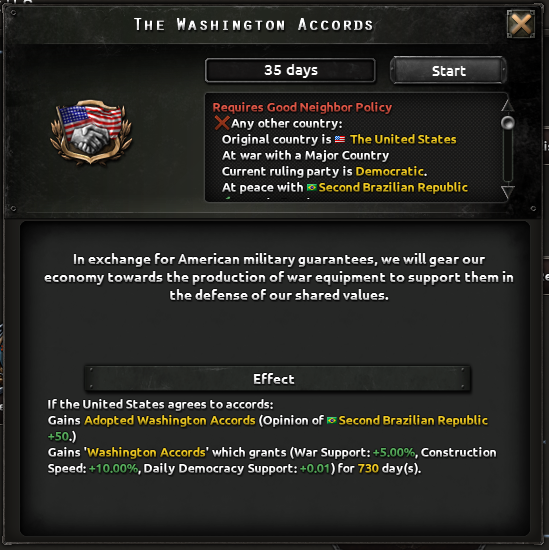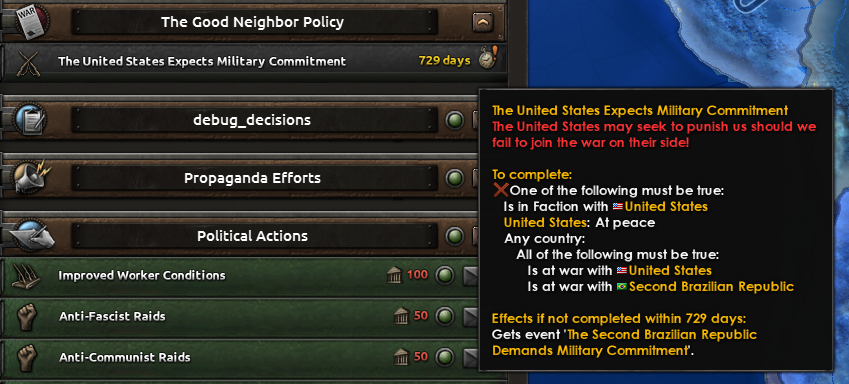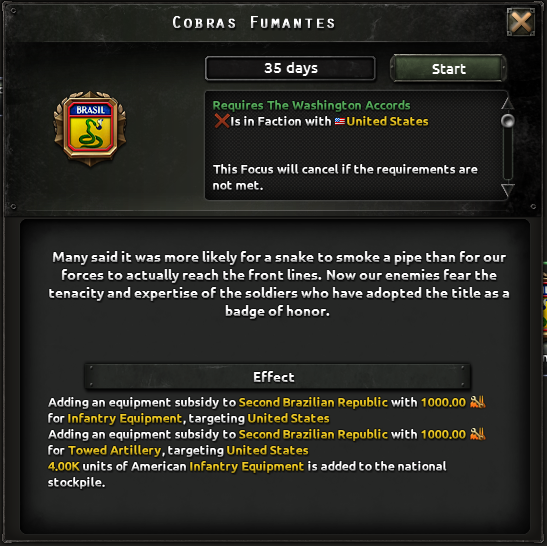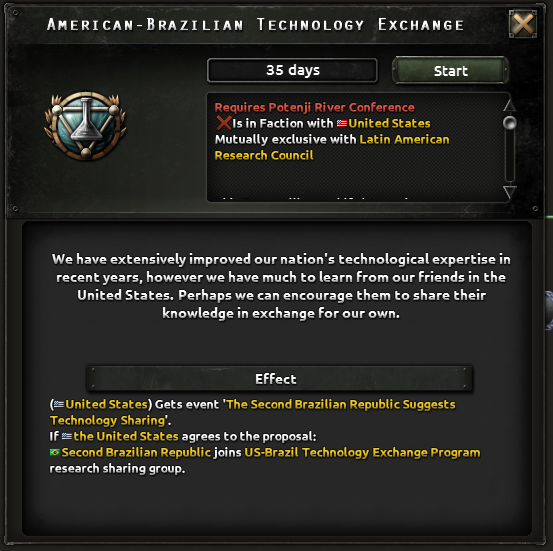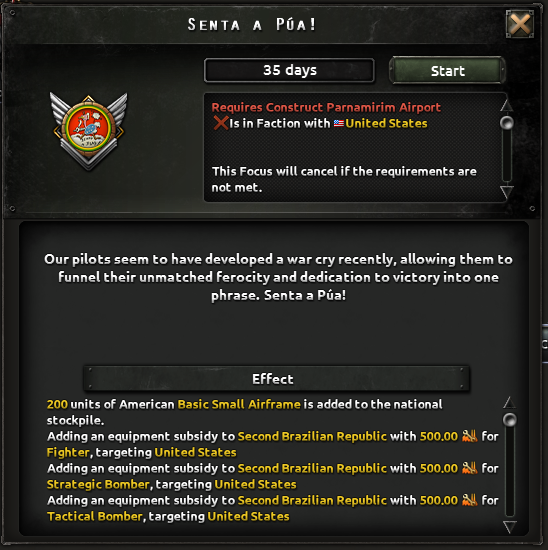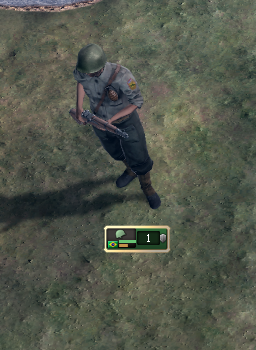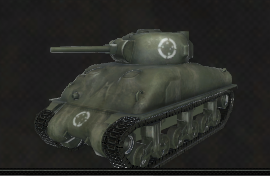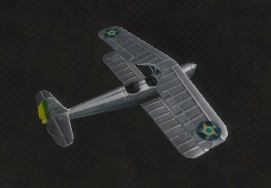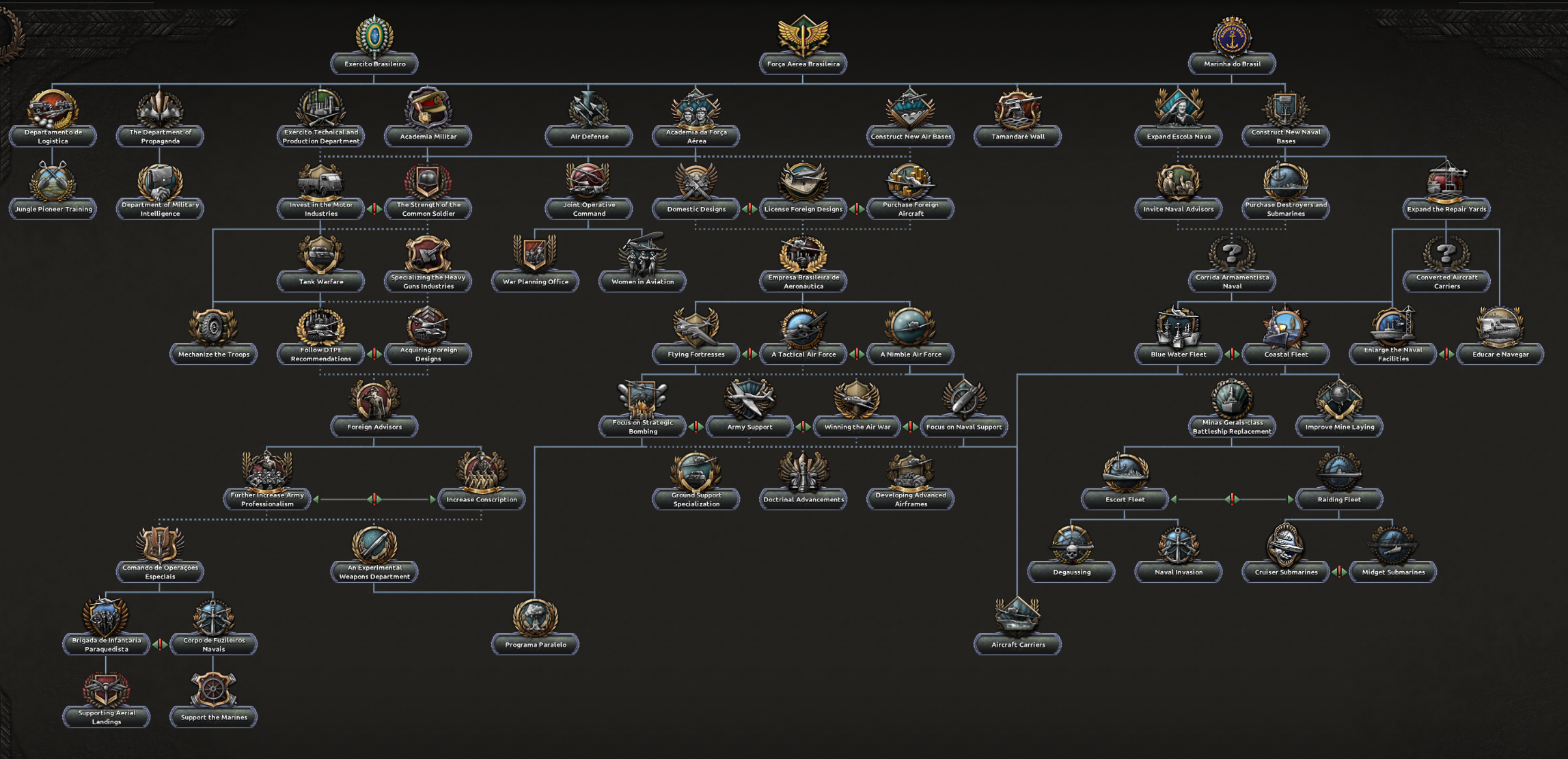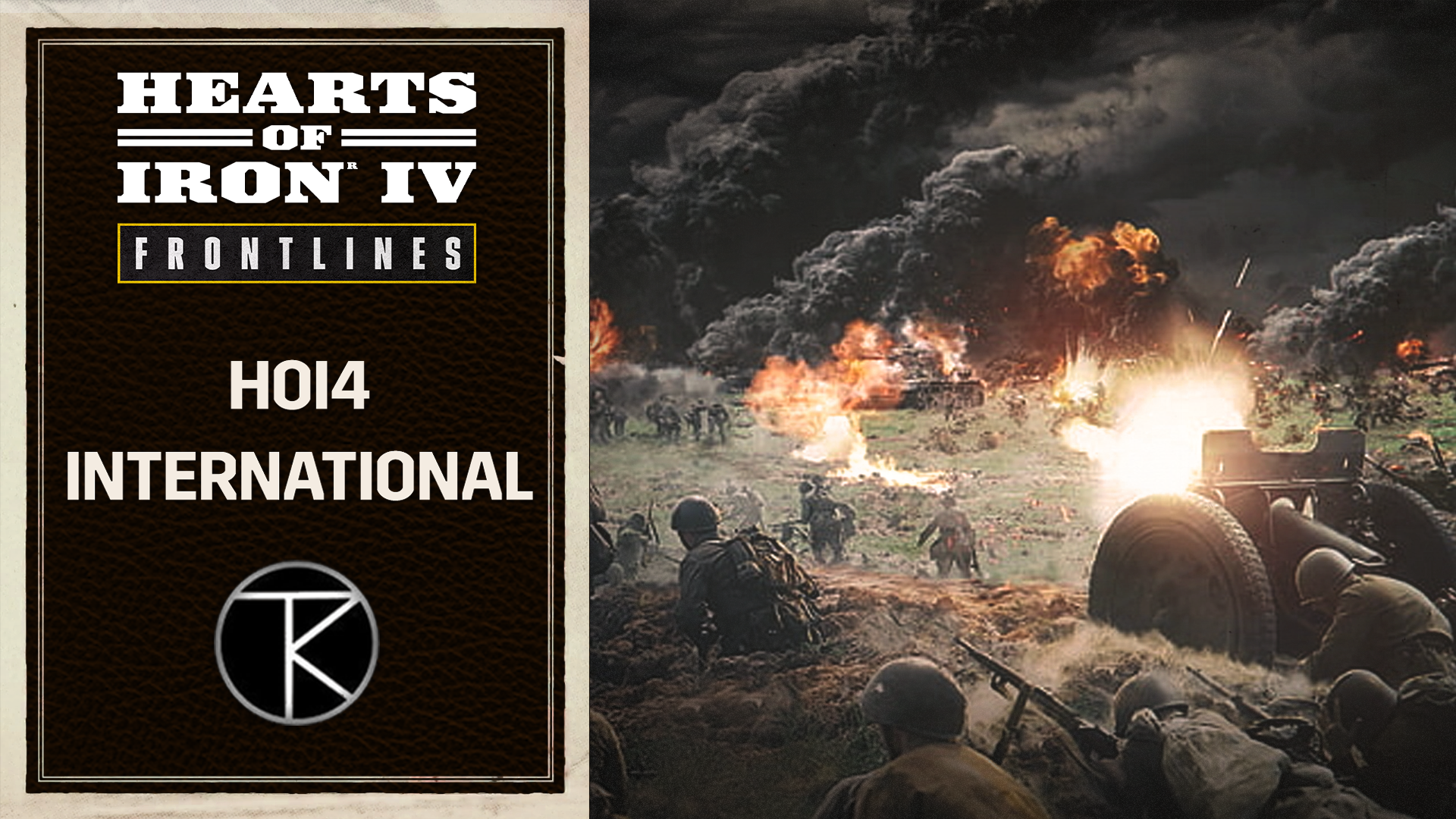
Feb 21, 2024
Hearts of Iron IV - PDX Chakerathe
Hello there! AveeBee here again to discuss alternate history Brazil this week. If you haven’t already, I highly recommend reading the historical dev diary where we also covered the industrial and military branches for Brazil as this week we will be just looking at the political branches. It’s worth keeping in mind that due to covering multiple branches this week, I’m going to try and keep the overview to the highlights as there will simply be too much to cram into a single dev diary and I imagine most of you are still digesting last week's big bag of goodies!
To get started, here’s some less obscured views of the full Brazilian tree and the political branches


Last week we showed the historical/Vargas path and as you can see below, the Integralist branch is intertwined with that branch. The reason being, as Vargas attempted to increase his authority over the nation, he somewhat cozied up to the Integralists in order to sway them to back him. This can be seen in the manner Vargas adopted the rhetoric of contemporary fascists.
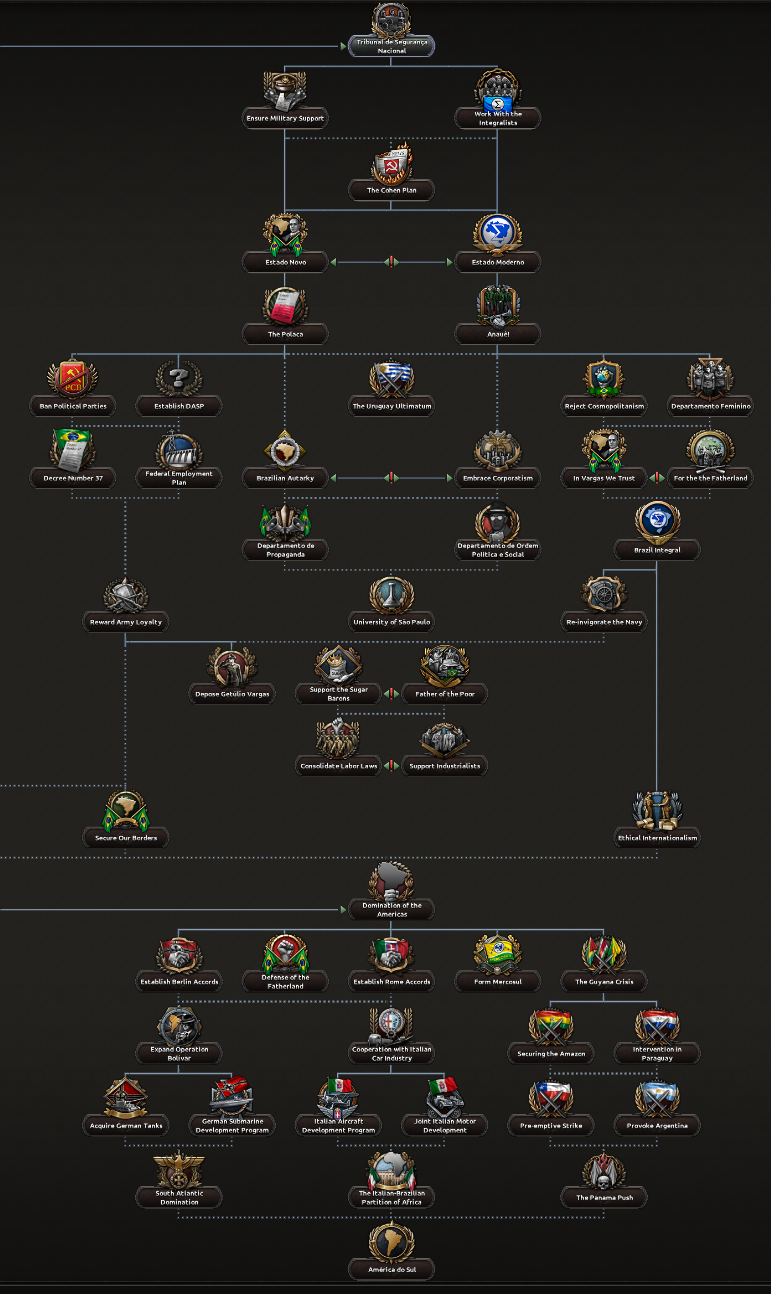
In this branch, the player has the option to Work with the Integralists which unlocks decisions to boost fascist support across the country.
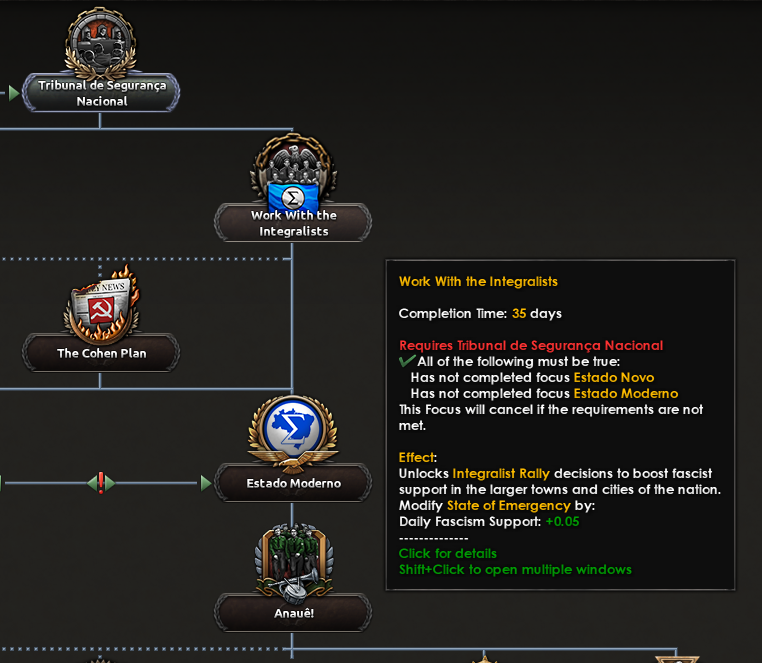
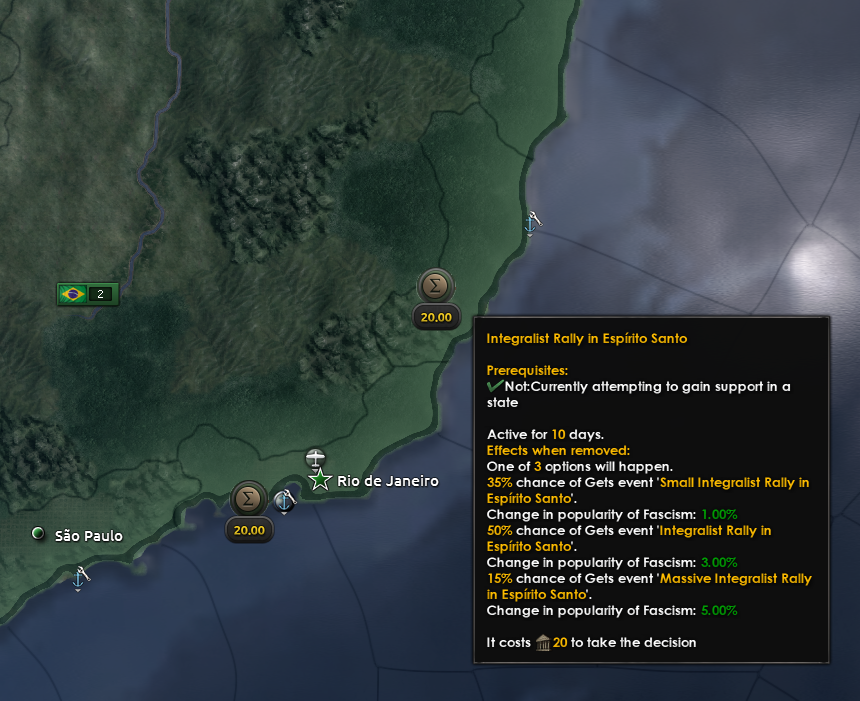
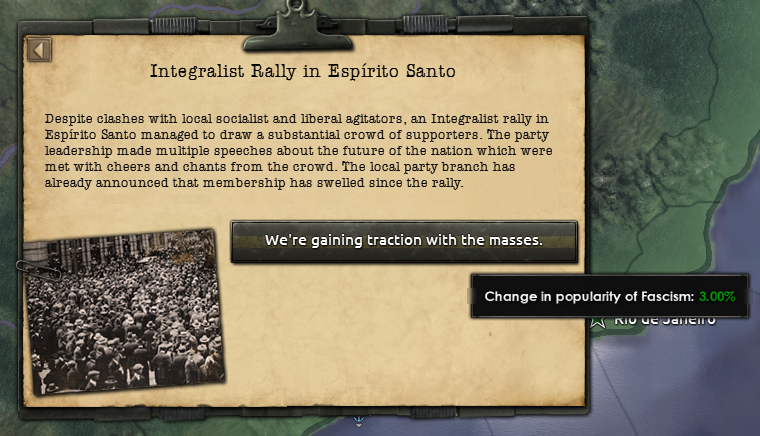
Just as in the historical path, the goal at this point is to weaken support for democracy and to prepare for the forged Cohen Plan. With enough fascism support however, instead of taking the Estado Novo focus, the player can take Estado Moderno instead. This will realign Brazil to a fascist government with Vargas becoming leader of the Integralist party… for now.
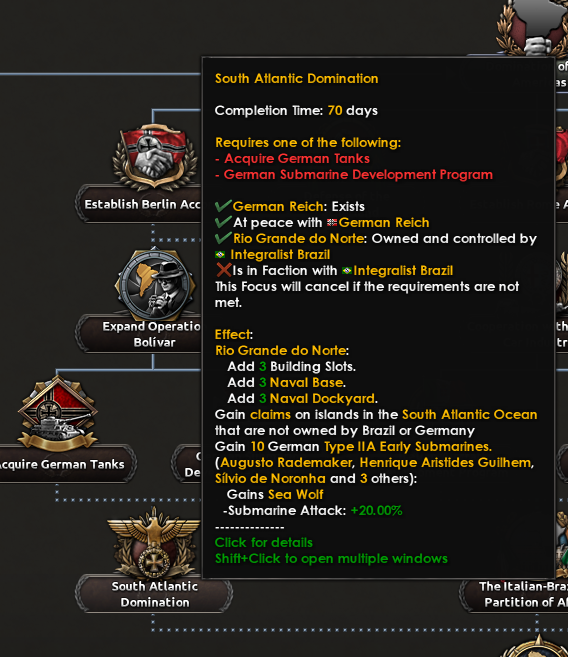
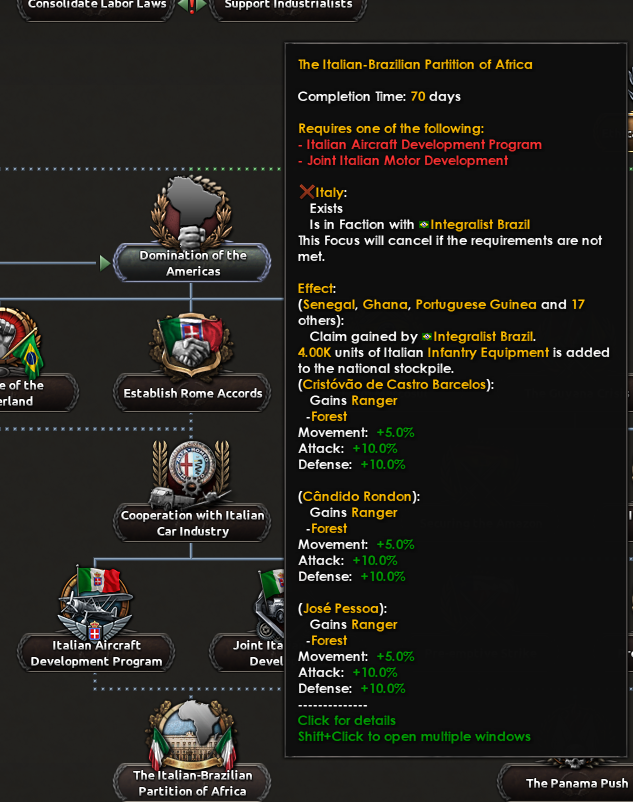
With the Integralists in power, the need to to hold on to it becomes pressing. As such, the next logical step for the movement is to expand the greenshirted paramilitary groups across the nation and begin bringing Integralist advisors into government. In the states that we have already conducted an Integralist rally, militia divisions can be recruited.
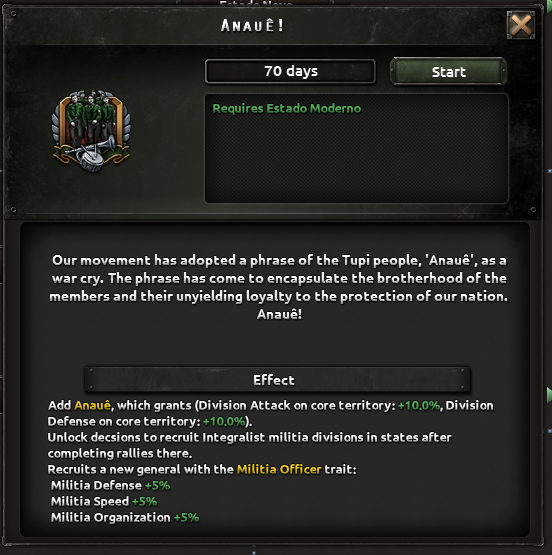
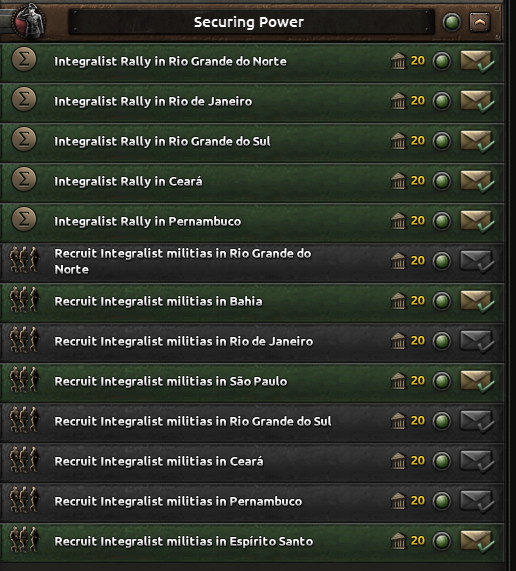
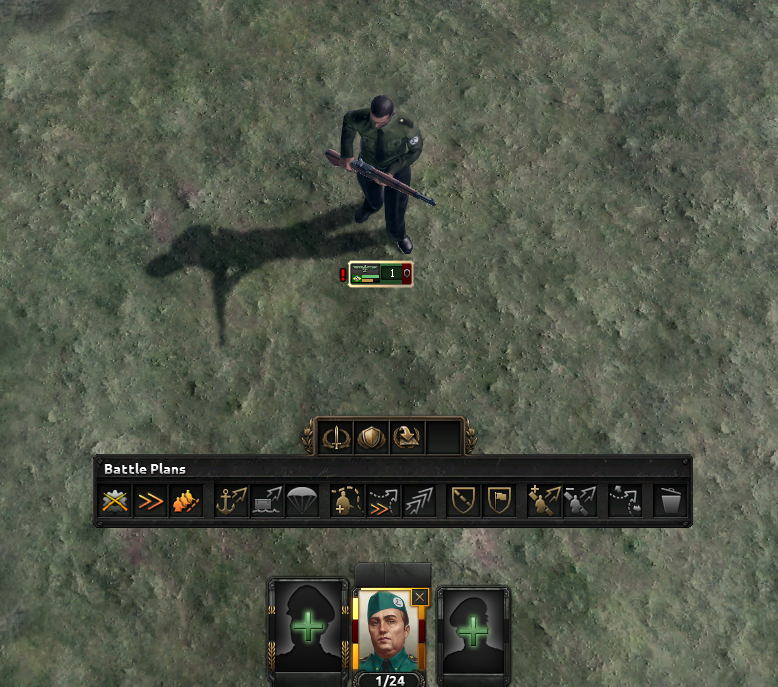
(The Eagle Division Icon is a placeholder)

Following this, there are a number of focuses to choose from to reconfigure the nation along Integralist lines. But the most important of these decisions is the choice between who should lead the party.
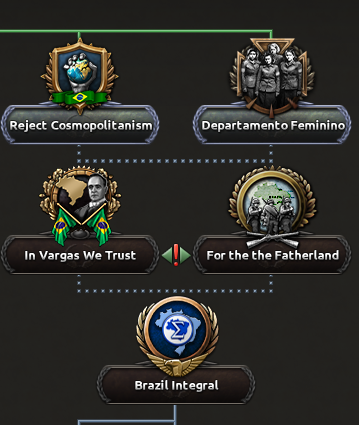
If the player chooses In Vargas We Trust, Vargas will gain a new trait and secure himself as the face of the movement. Meanwhile, if For the Fatherland is taken instead, the previously mentioned Plínio Salgado will finally take his place as leader of Brazil.
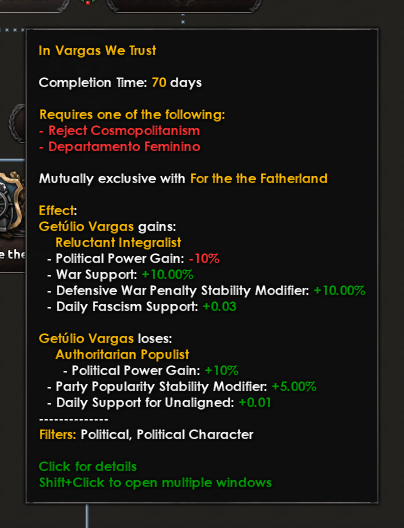
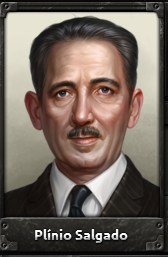
Once the nation has been fully indoctrinated into the Integralist way of thinking, Brazil can begin to look at its neighbors and how to interact with them. This brings us to the Domination of South America sub-branch which will also be available to alt-history/fascist aligned Vargas and the Monarchist path.
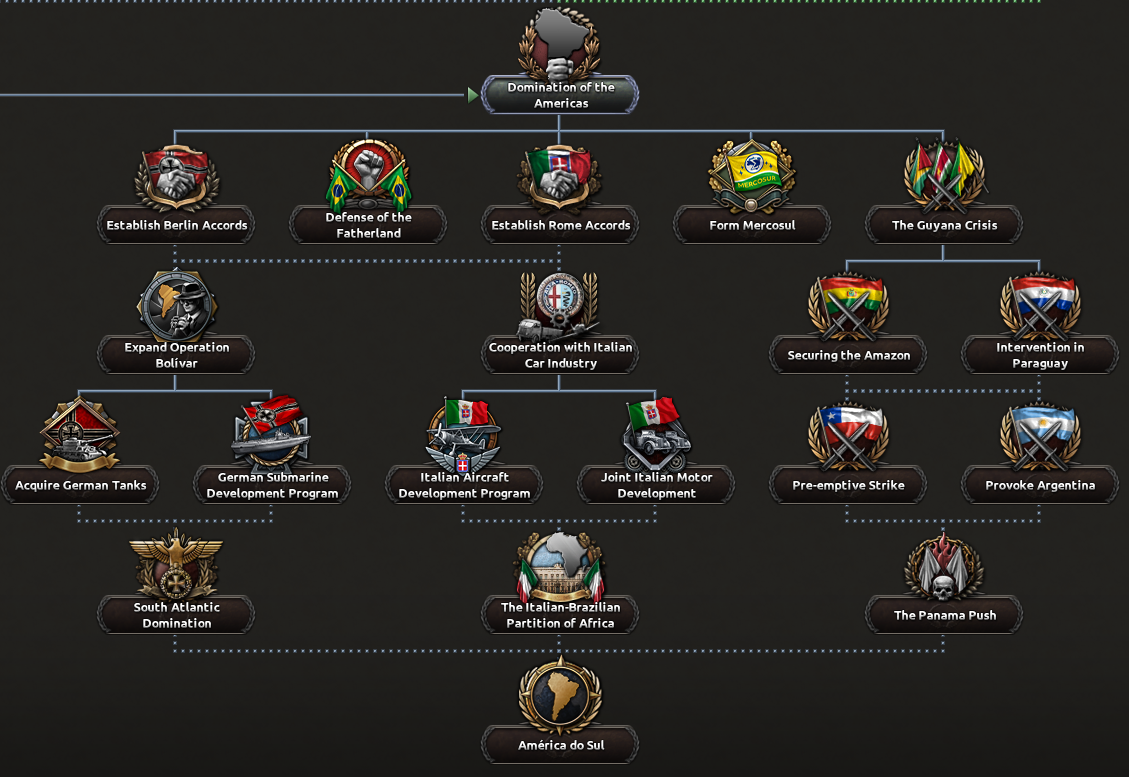
This branch can be broken down into three components, alignment with Germany, alignment with Italy, and territorial expansion. By collaborating with Germany, Brazil will gain access to improved espionage abilities via operation Bolivar and the ability to purchase/develop Panzers and U-Boats. This will culminate in the final push by Germany and Brazil to dominate the South Atlantic Ocean, giving Brazil claims to a number of islands in the region.

Collaborating with Italy on the other hand, based on the historical connections between the two nations, will allow Brazil to procure/develop its air and motorized forces to better dominate the continent. This sub-branch culminates in a joint partitioning of Africa, which when taken in conjunction with some of the monarchist focuses for dominating Portugal, can lead to a sizable Brazilian overseas empire.

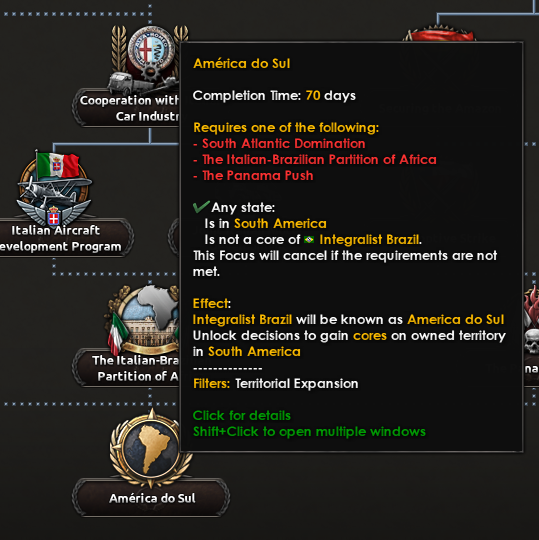
The territorial expansion section of this branch will of course give various wargoals and methods for conquest across the continent, up to and including the Panama canal. By this Brazil has more than likely gained the ire of the United States for a multitude of transgressions. As such, it better be prepared for an intercontinental war, and what better way to do that then to unify the continent under Brazilian leadership!
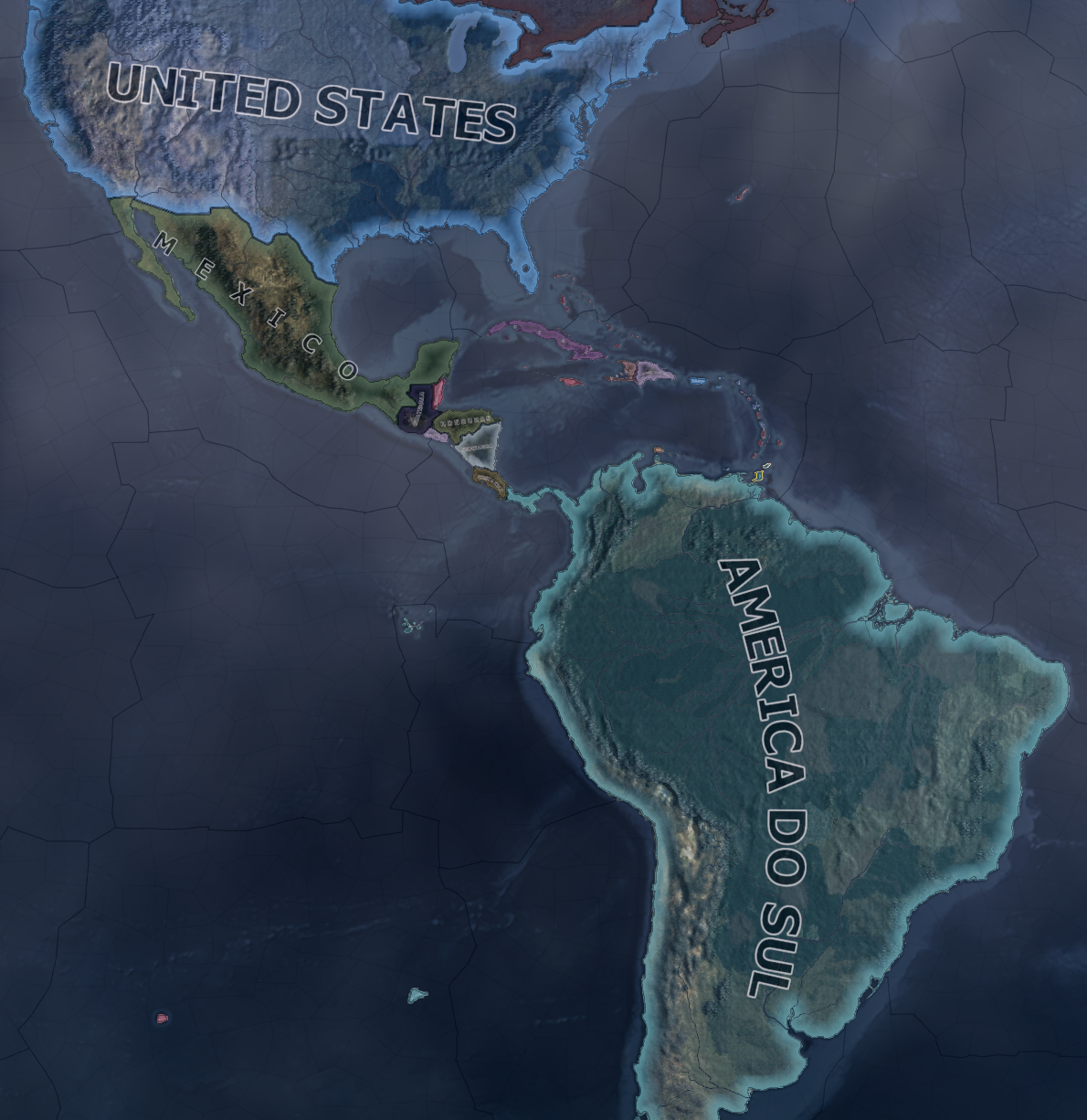
However, if Ethical Internationalism is a more appealing method of securing the continent, there’s also the option to Form Mercosul and work with Brazil’s neighbors to defend the continent.
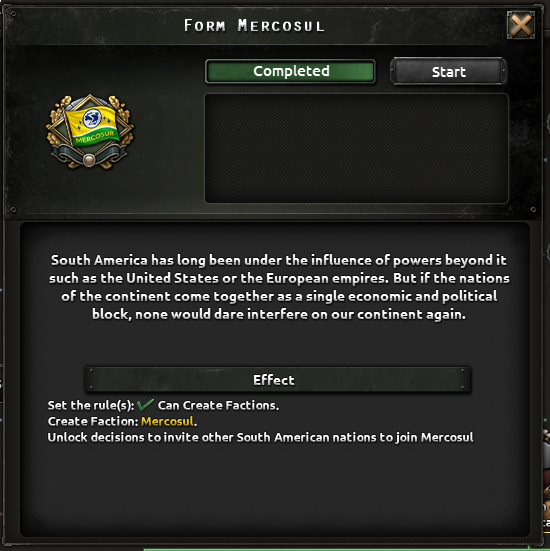

Following on from this, a new movement can be created from those who are disgruntled with the instability wrought by years of democracy and revolutions. Initially the movement will coalesce around the romanticization of Brazil’s Imperial history.
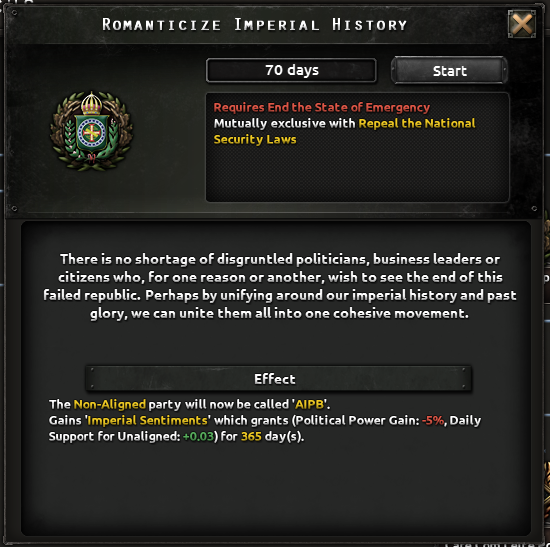
Once the movement begins to gain momentum, calls for a restoration of the monarchy will grow. However, the difficult choice of which claim to the throne should be embraced will have to be made.

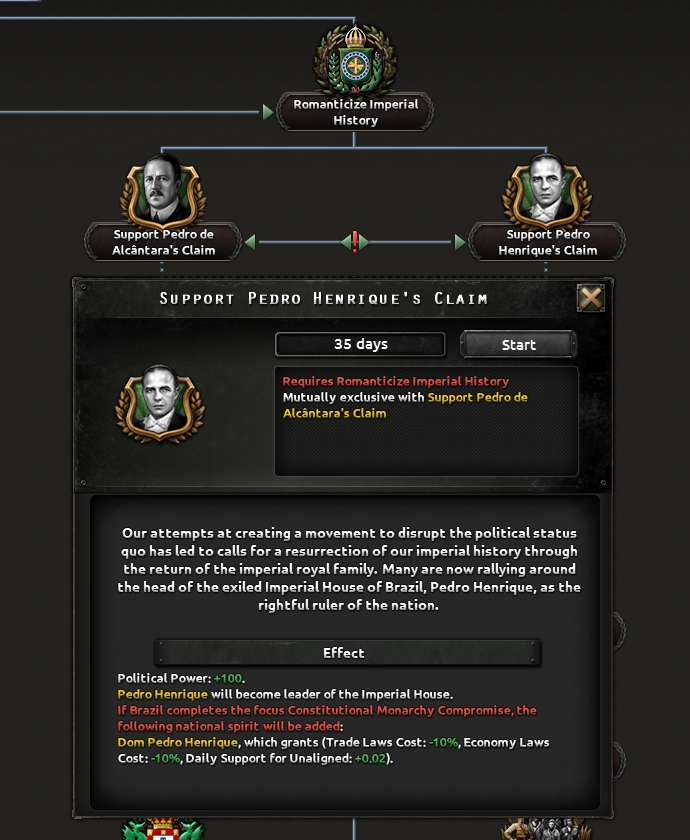
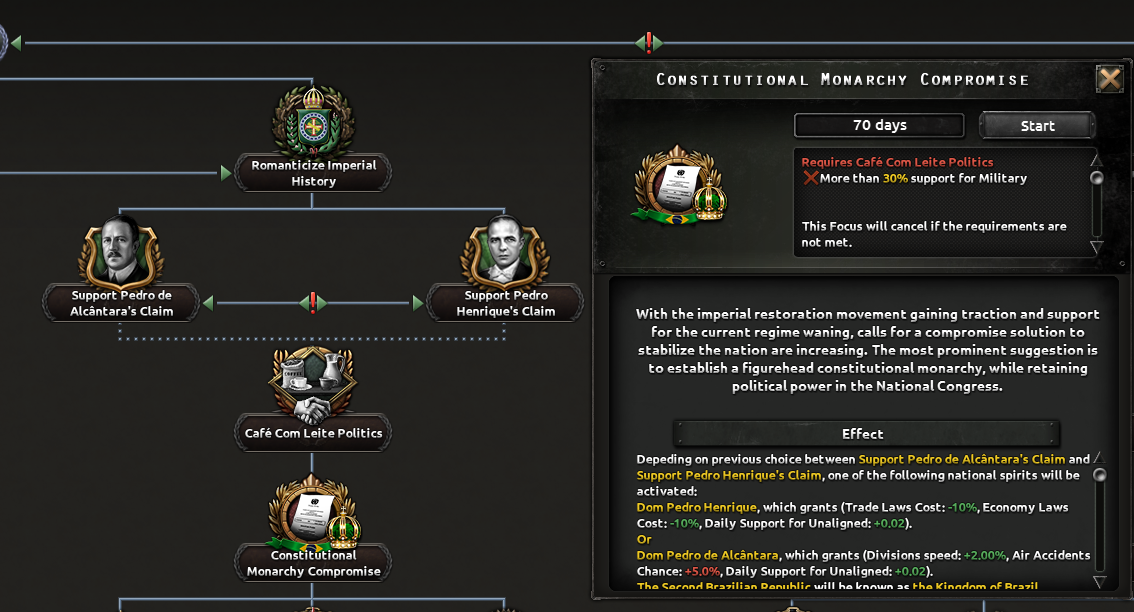
Once enough support has been gathered for the chosen leader of the royal house, an initial push towards restoration is the establishment of a constitutional monarchy. Don’t worry though, this is a stop-gap before the fun begins…
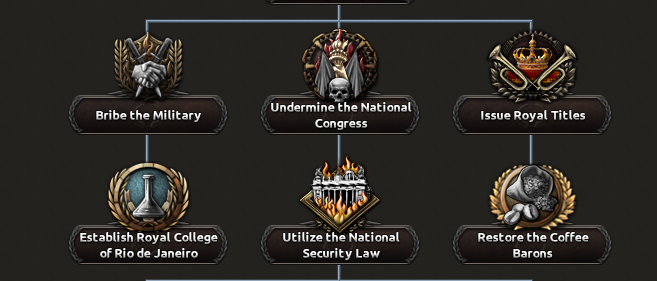
With increased influence in government, the newly crowned King can get to work undermining the democratic apparatus of the country before finally pulling a Vargas and using a national security law to suspend it completely. Once this is done, the Brazilian Empire can finally be restored.
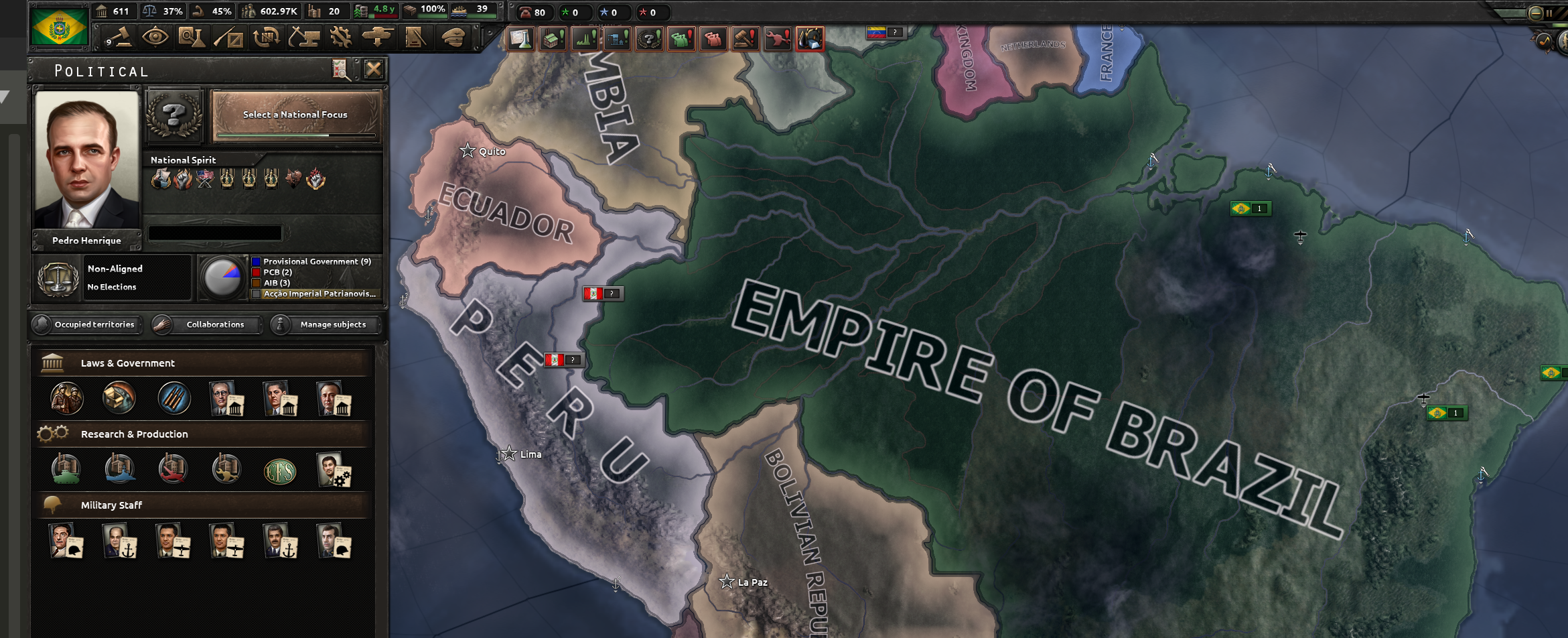
However, Brazil will still have a number of political issues to contend with such as a population that has been forced to become subjects largely against their will. While this can be overcome, alternative military recruitment methods, such as penal battalions, may be used to swell the Empire’s forces.
Through expansion of the Brazilian Empire, either through conquest or diplomacy, the population's initial reluctance to accept the new monarch can be overcome. And of course their are methods for unifying with Portugal to create a global Empire.
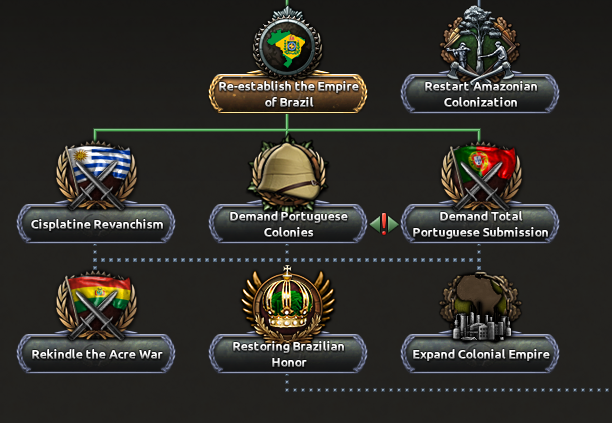
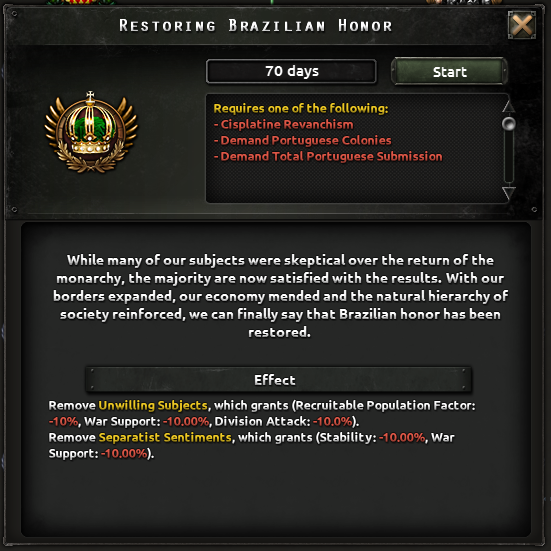
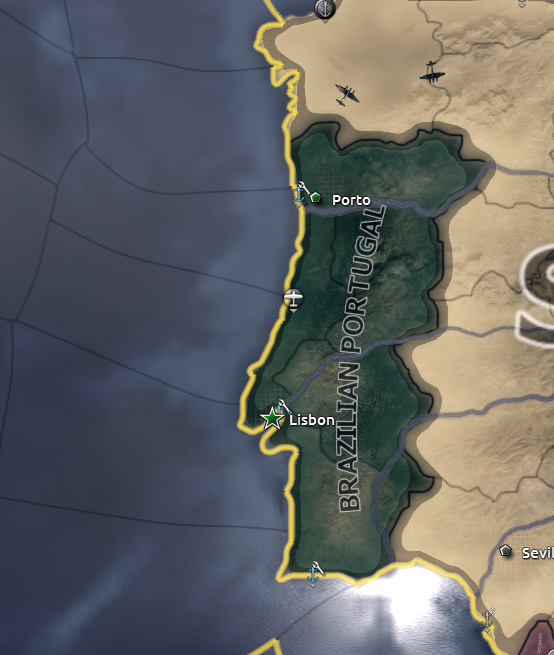
From this point in the tree, Monarchist Brazil has the decision to make between either collaborating with the Allies or pursuing more conquest via the Domination of the Americas sub-branch.

Before moving on to the next political branch, here’s a close up of one of our prospective monarch's Portrait;
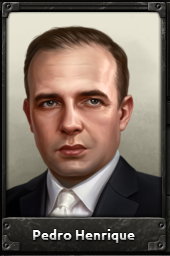
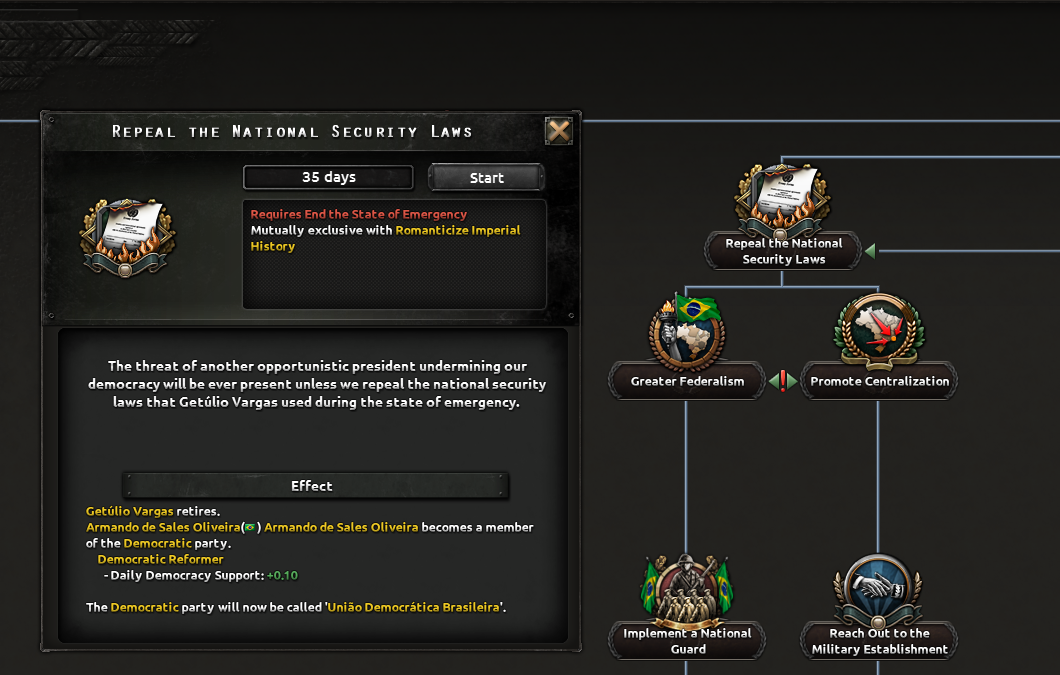
This results in Vargas being ousted from power and Armando de Sales Oliveira being ushered in as President.
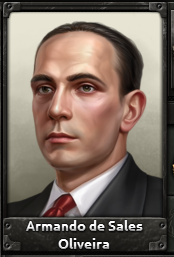
The primary concern for the new president will be preventing the military from attempting to overthrow the fragile government. As such, there are two methods for dealing with them. The first option is to promote federalism across the nation, embracing the distinct identities of the constituent states and allowing the creation of national guard. The government can also take a more social-democratic route, nationalizing the banks and meeting the promises of Article 138 of the constitution to support families.
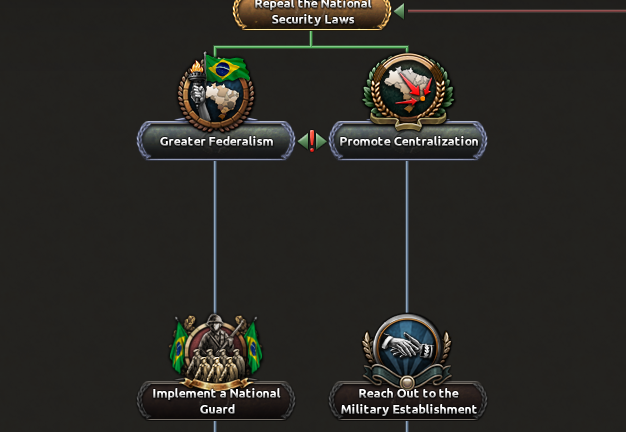
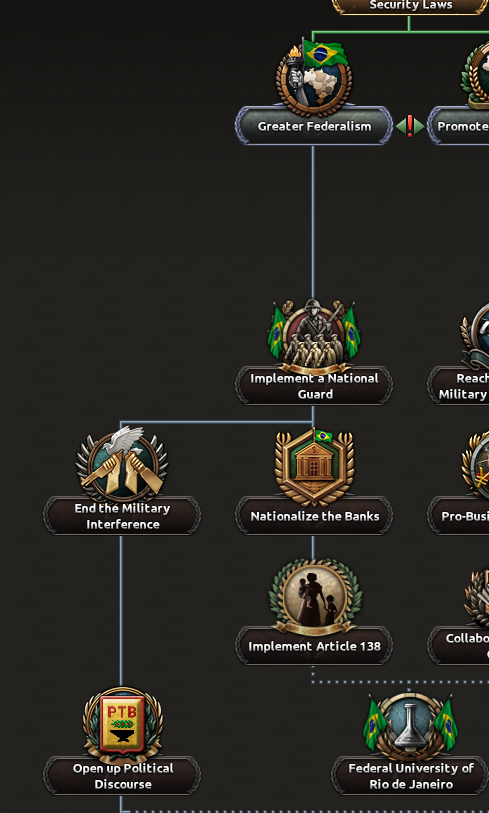
The second option for dealing with the military is to promote centralization, strengthen the national government and find a compromise with the armed forces. Such a compromise will consist of allowing military personnel to take a more prominent role in the government as well as enforcing a policy of strict anti-communism by banning the movement completely. This will also force the government to take a less interventionist economic policy and promote traditional values.
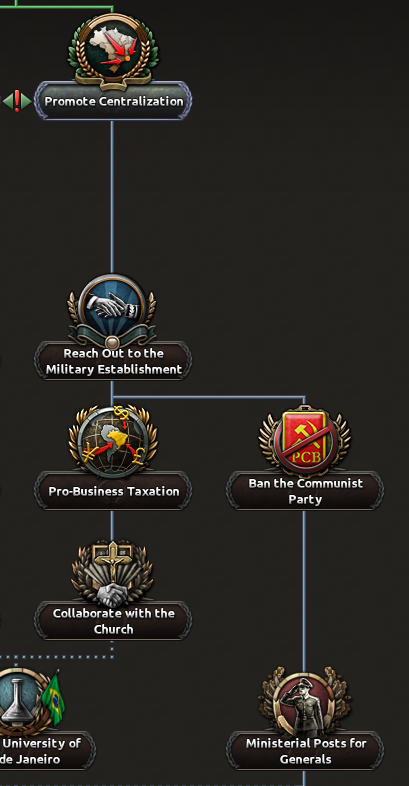
Collaborating with the military will allow Brazil to be better prepared militarily, but increasing federalism will lead to a more stable country in the long run.
Once the initial concern over government stability in the face of military pressure, attention will have to shift towards preparing the country for potential conflict as the world descends into war.
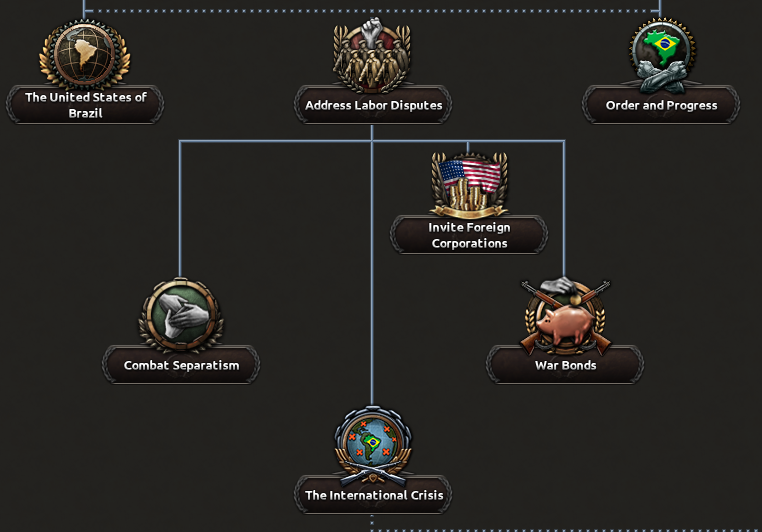
Inviting foreign corporations to Brazil will allow those playing with Arms Against Tyranny to gain MIO’s from a number of democratic governments.
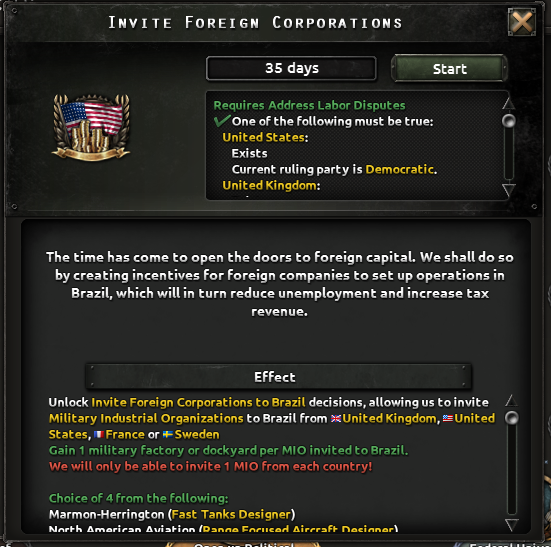
Meanwhile War Bonds will allow Brazil to cut the need for consumer goods and increase war support.

Finally, with enough war support, Brazil will be able to progress towards the Good Neighbor Policy via The International Crisis.
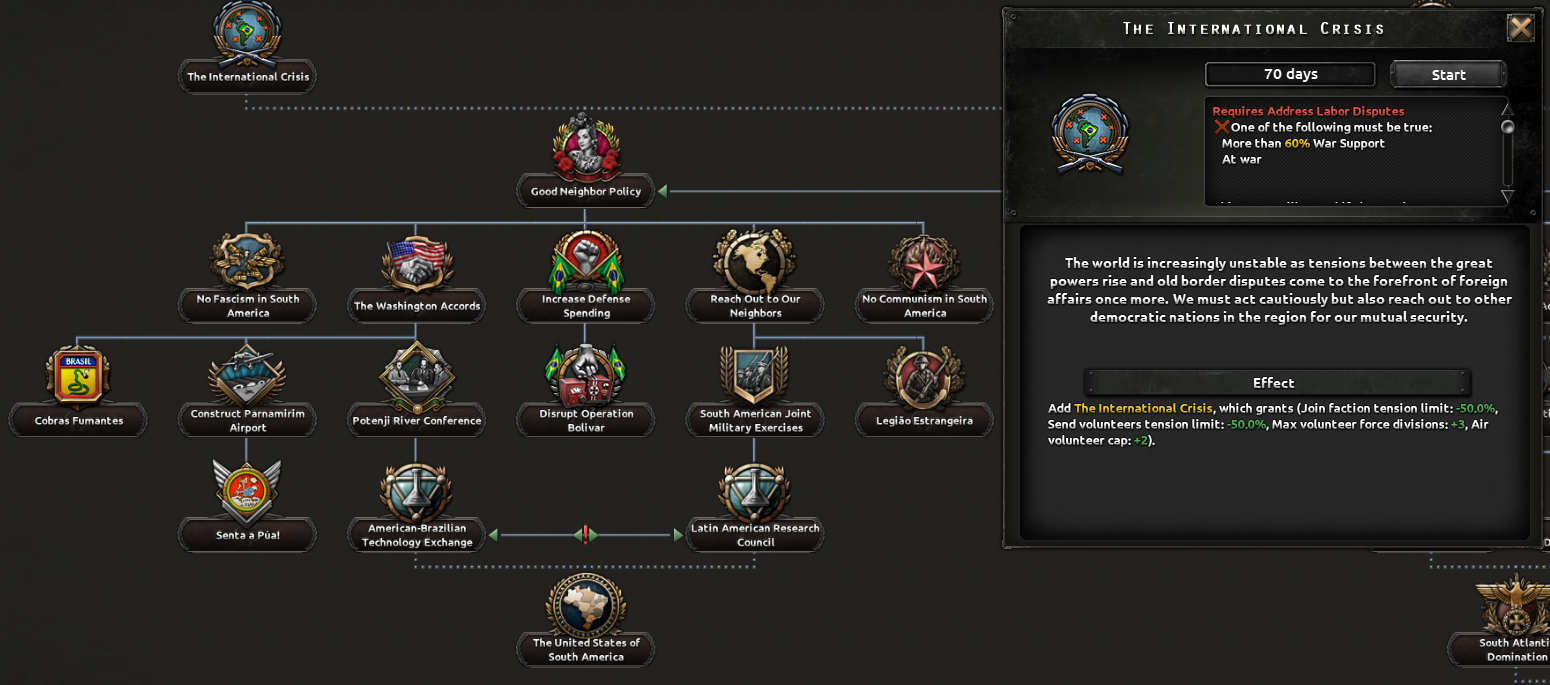
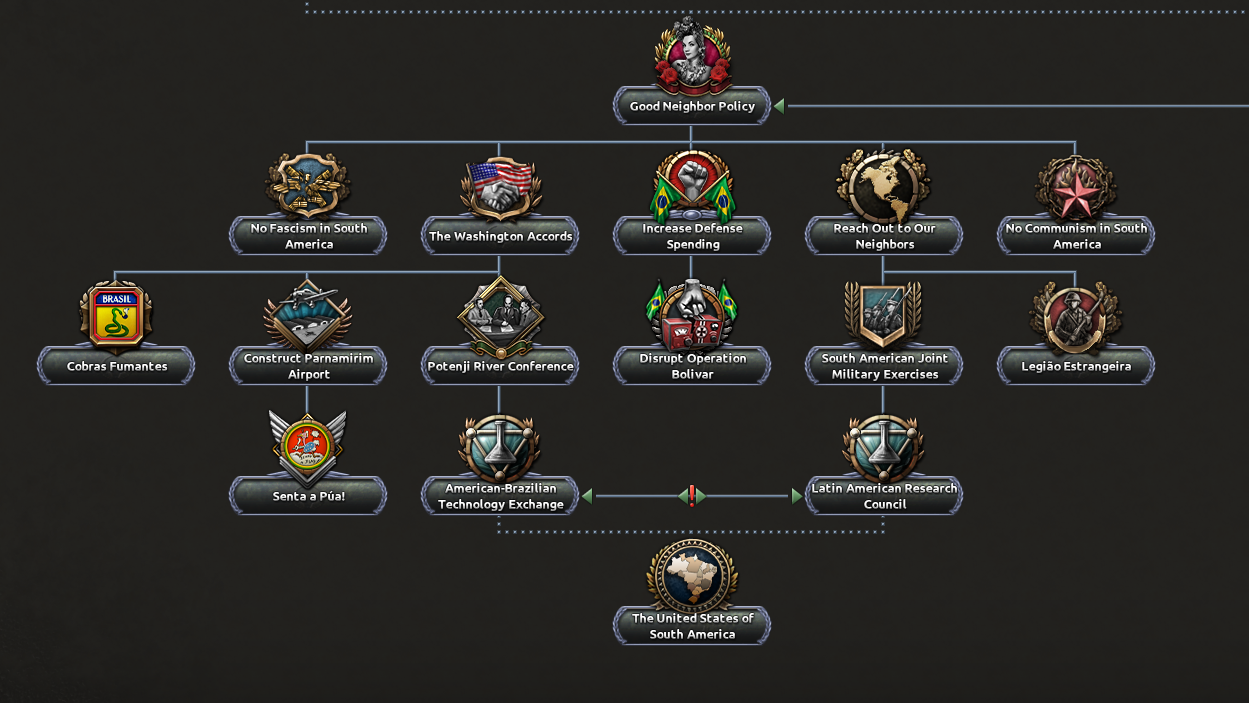
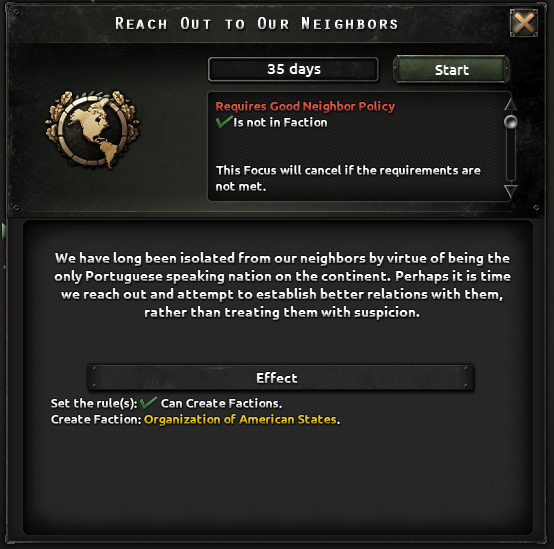
The culmination of this path results in the (somewhat) peaceful creation of a ‘United States of South America,’ which can be a pretty potent superpower in the late game.
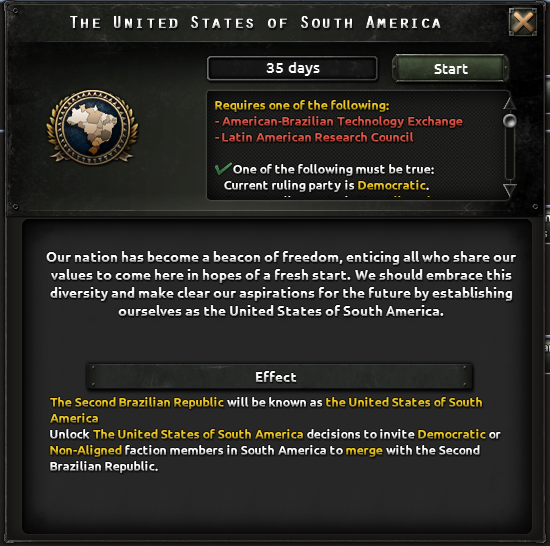
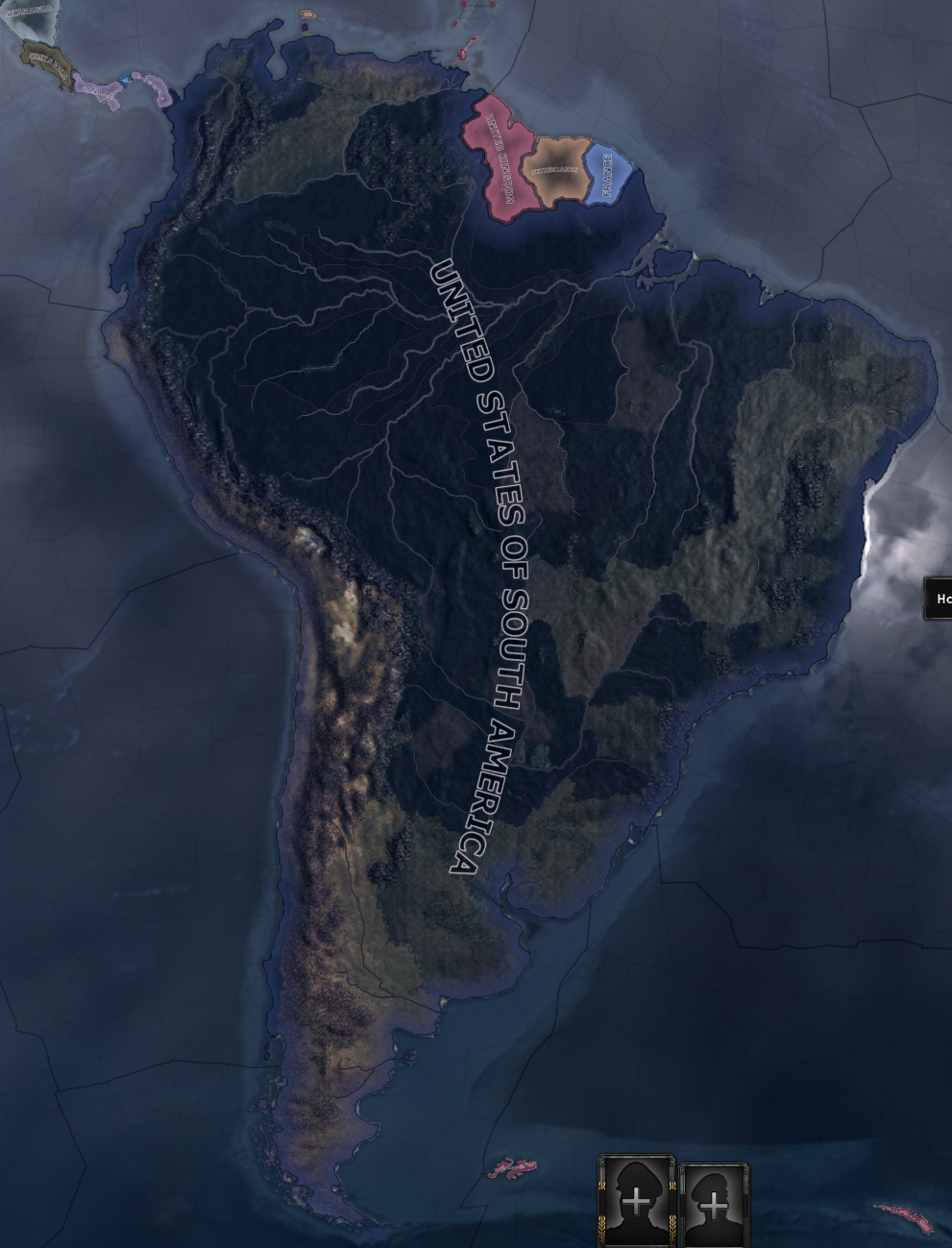
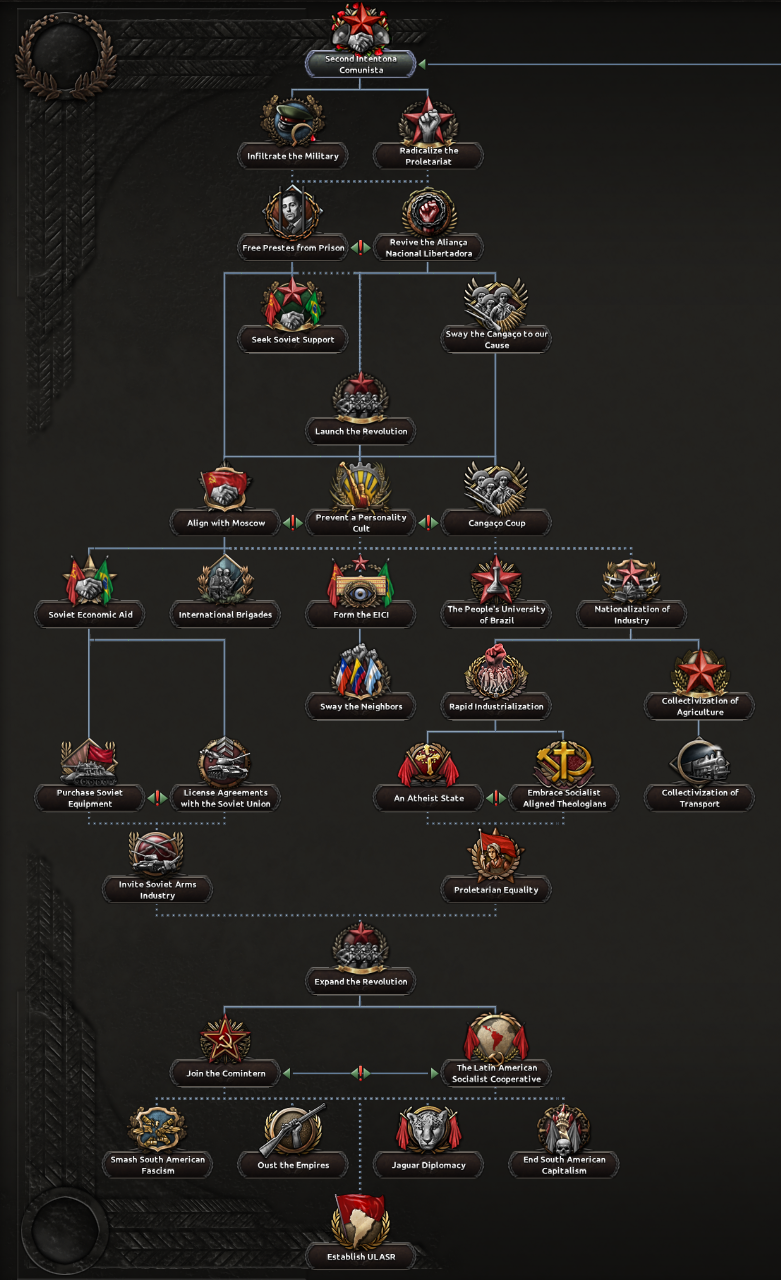
As mentioned in the historical dev diary, in 1935 the communists had taken part in an attempted overthrow of the Vargas government. As such, at game start the clock is ticking for the communists as Vargas and the military will be attempting to clamp down on communism, so any chance for a successful revolution will have to be taken as soon as possible.
The most likely result of increasing communist support will be a civil war. Therefore the communists need to make sure that they are better prepared than the government when it kicks off. This can be done by taking a number of optional focuses such as swaying the lower ranking personnel in the armed forces to the cause, reaching out to the Soviet Union for support or even persuading the Cangaço to take the side of the proletariat.
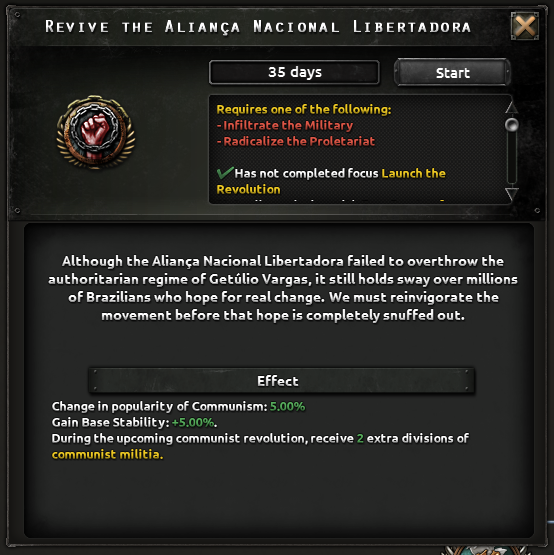
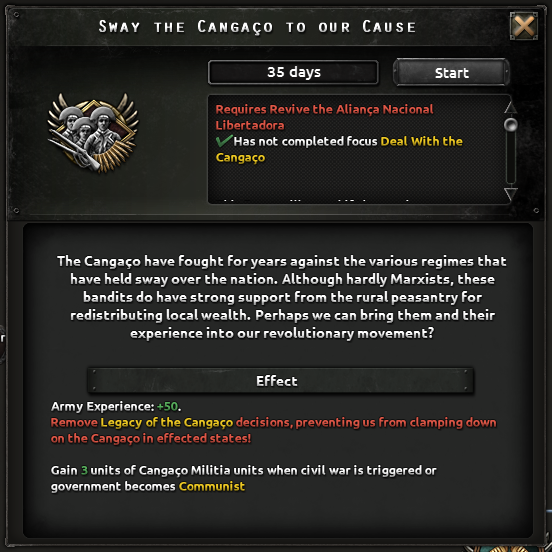
Gaining Soviet support for the revolution will however depend on releasing Luís Carlos Prestes and Olga Prestes from prison first. The pair were arrested following the 1935 attempted revolution as ‘ringleaders’ of the movement. Olga was believed to be an operative of Soviet intelligence due to undergoing military training at an academy in the Soviet Union.
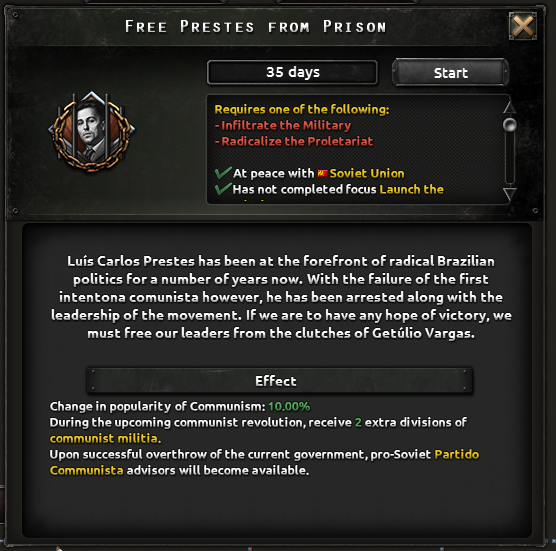
Once enough support has been gained, the second revolution can begin.
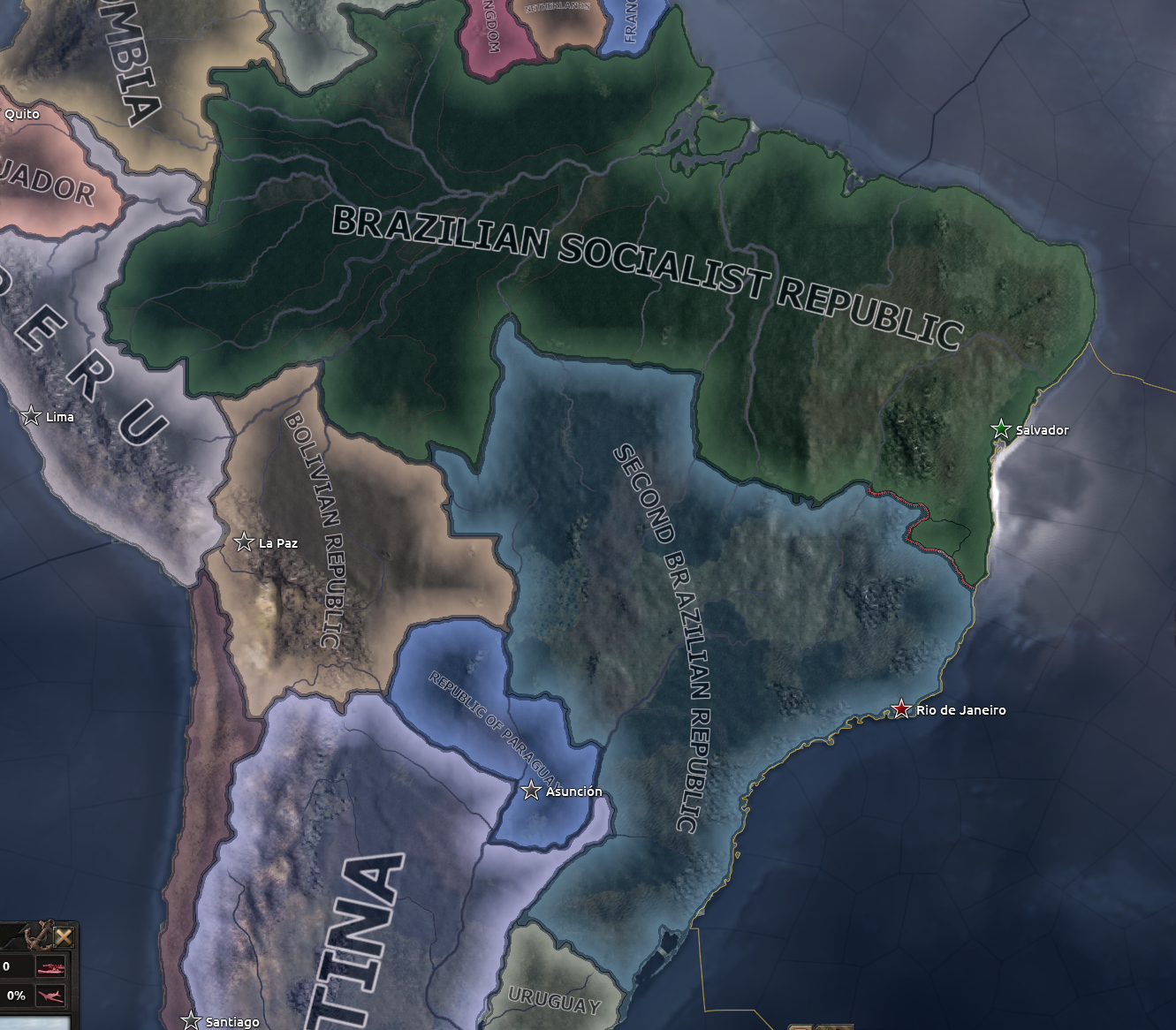
Once the civil war is won, the next choice will be over who should govern the Brazilian Socialist Republic. Depending on the choices made earlier, there will be three potential options. First up is Prestes, allowing Brazil to become aligned with the Soviet Union. Next is the ANL council, which will allow Brazil to maintain its own path to communism. Finally, we have the wild card option of having the Cangaco trigger a coup and taking Brazil down an anarcho-communist path.
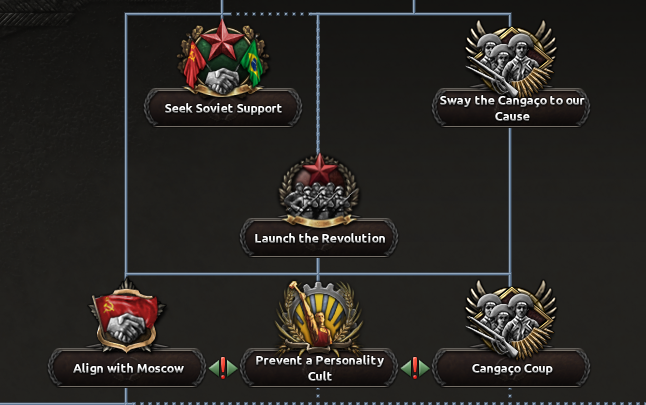
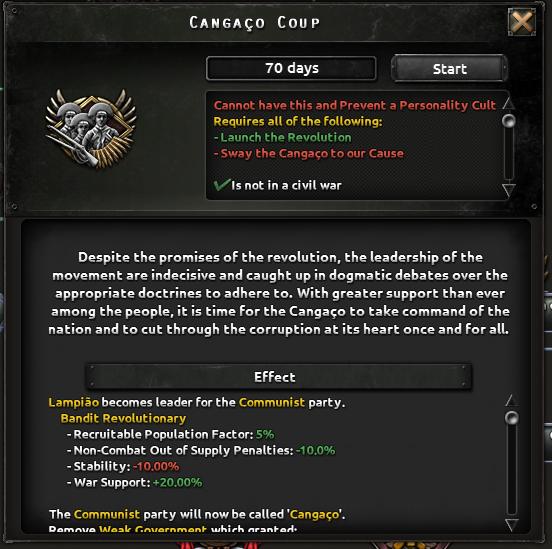


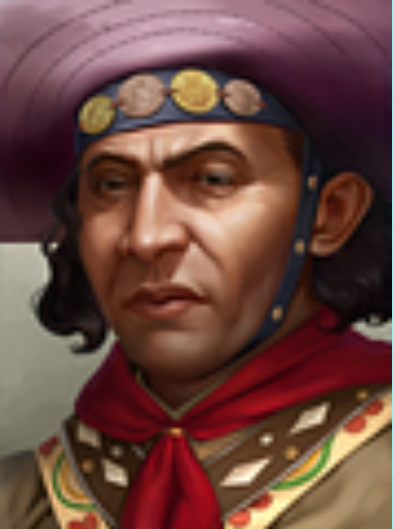
After a leader is chosen, the difficult task of rebuilding and modernizing the nation will begin. There are of course a number of ways to carry out the task.
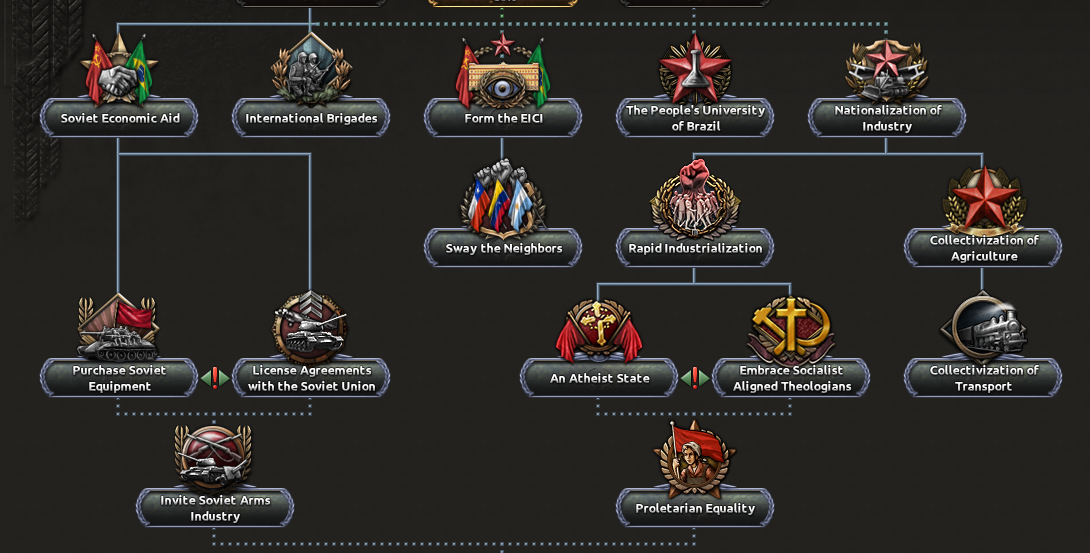
Now we come to the foreign policy aspect of the communist branch which begins with Expand the Revolution.
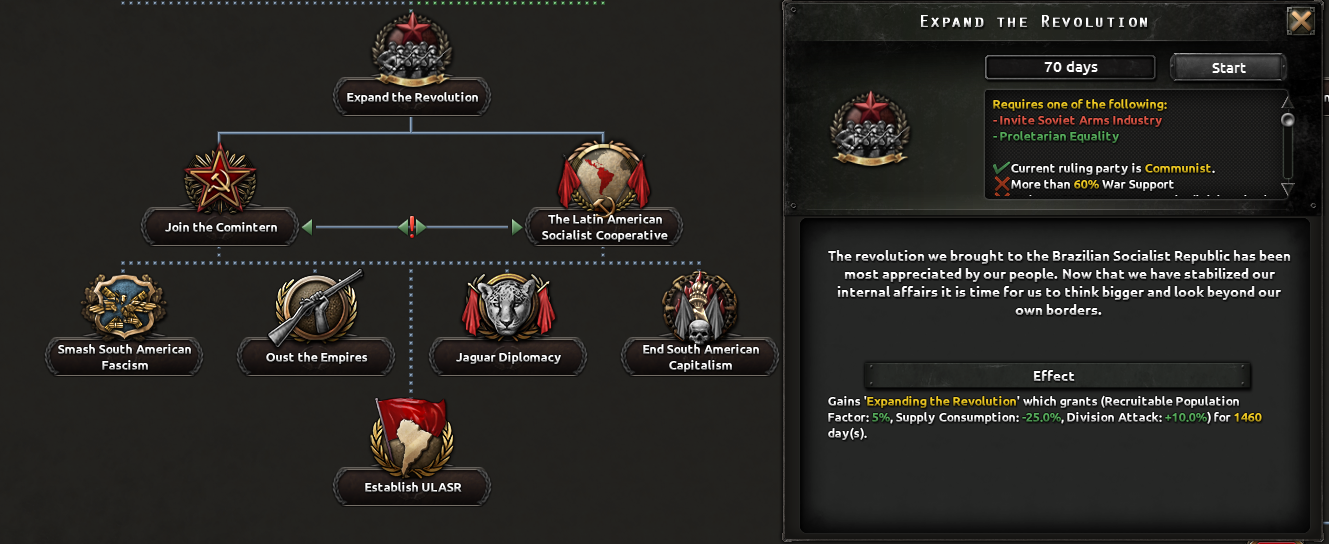
After this, Brazil can either form its own communist faction in South America or join the Comintern. Regardless of the path chosen, Brazil will have the opportunity to expand its influence through both espionage and military aggression. However, the USA and the other great powers may not sit by idly while Brazil paints the continent red. In order to placate them however, they can take inspiration from China and dabble in some Jaguar Diplomacy.
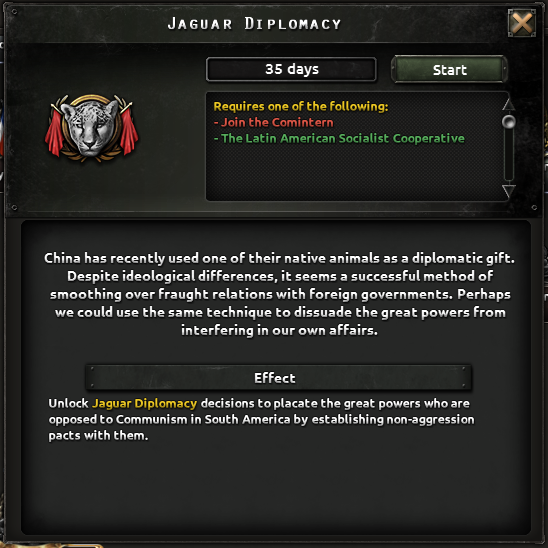
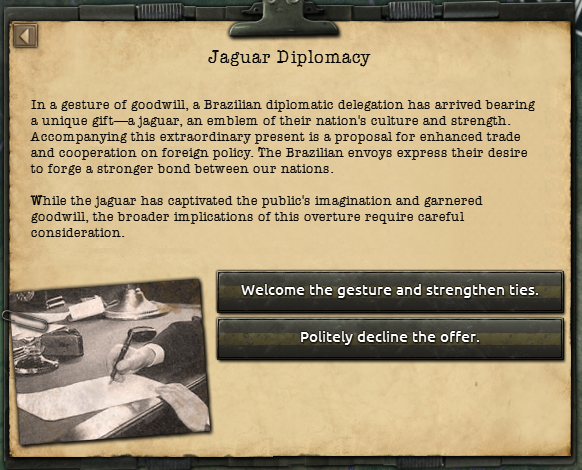
With South America falling under the sway of Brazilian communism, a new world power can be forged to challenge the old powers.
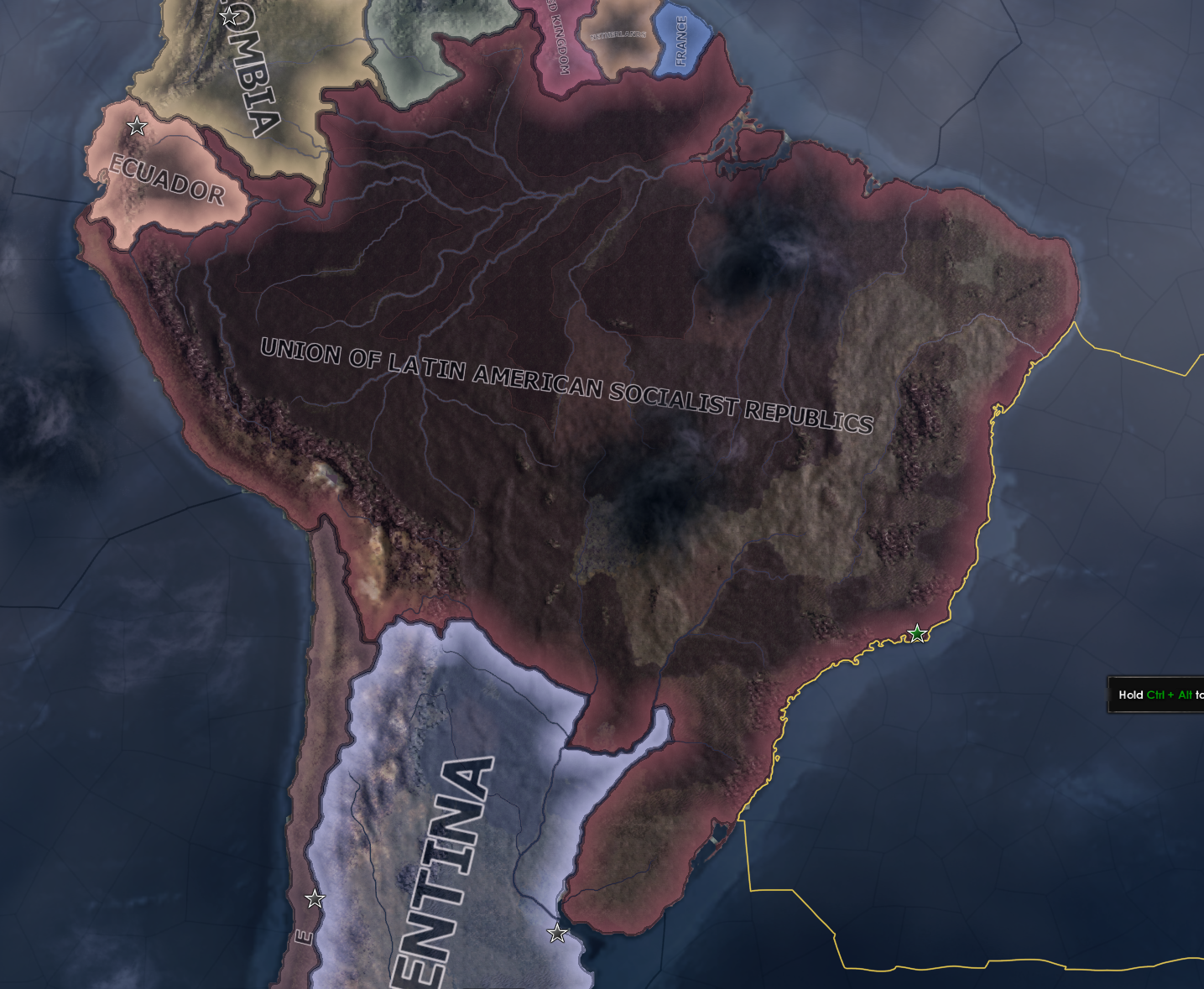
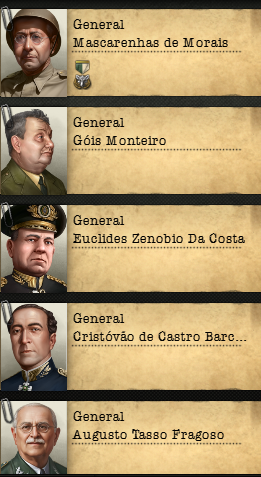
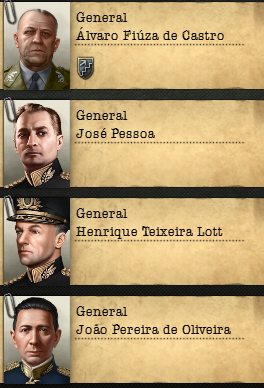
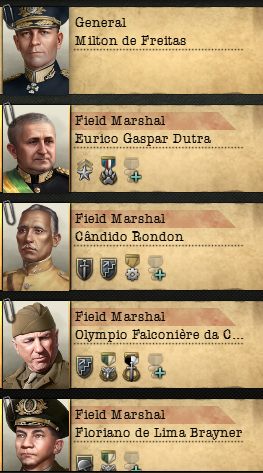
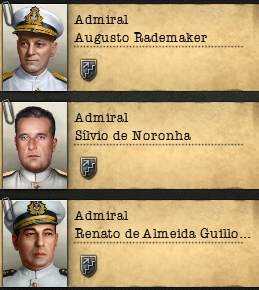
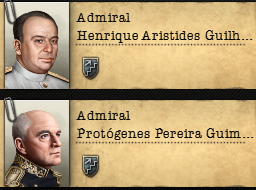
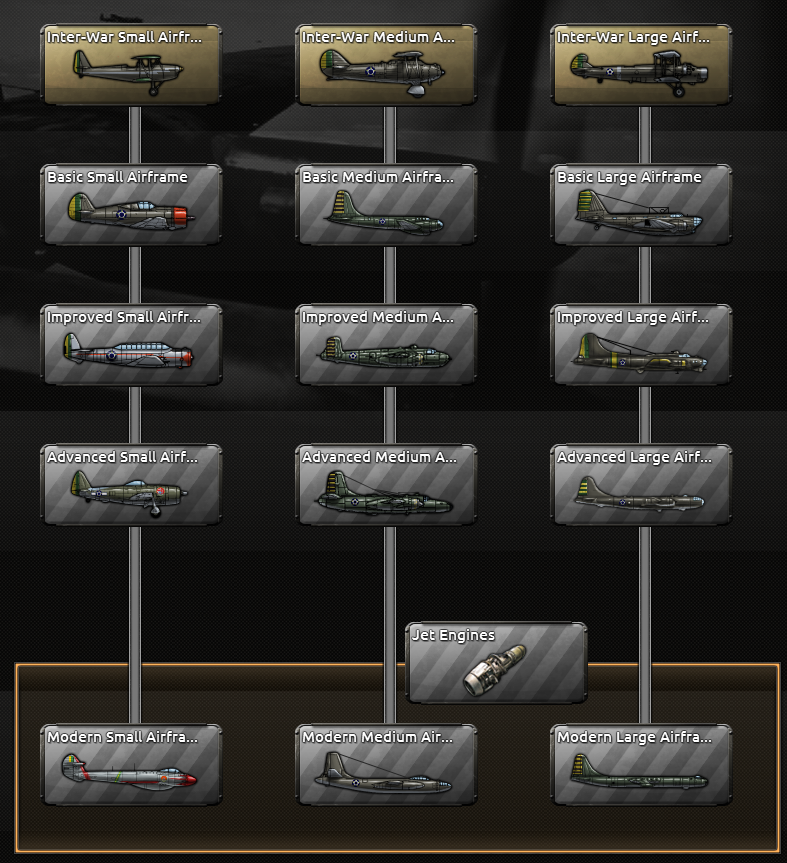
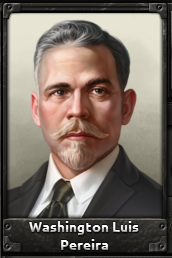
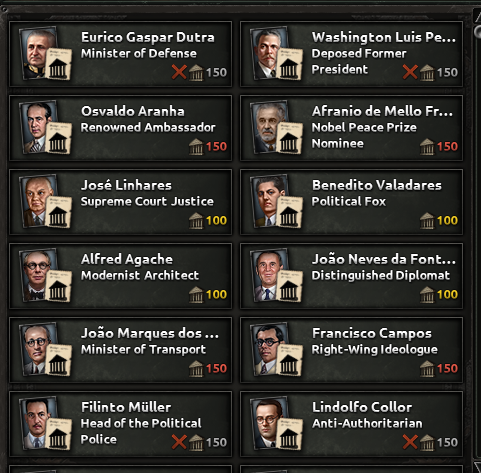
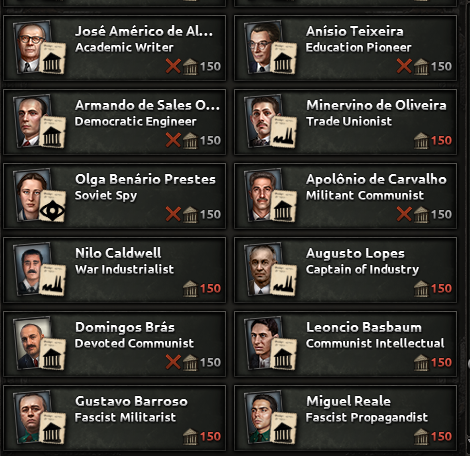

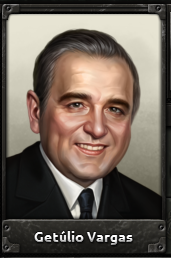
See you then!

Make sure to check out Trial of Allegiance here
https://store.steampowered.com/app/2695150/Hearts_of_Iron_IV_Trial_of_Allegiance/
To get started, here’s some less obscured views of the full Brazilian tree and the political branches


Integralist Path
First up, we’re going to look at the Integralist branch which constitutes the fascist path for Brazil. A little bit of context, the Integralist movement was established in the early 1930s by Plínio Salgado and in many ways mirrored the tendencies and aesthetics of Italian fascism with a distinctly Brazilian twist. In place of blackshirts, the Integralists formed greenshirted paramilitary groups which marched in opposition to liberalism and communism. Much of their doctrine consisted of an enforcement of typically traditional Christian values and a shared cultural/nationalist identity which glorified Brazil.Last week we showed the historical/Vargas path and as you can see below, the Integralist branch is intertwined with that branch. The reason being, as Vargas attempted to increase his authority over the nation, he somewhat cozied up to the Integralists in order to sway them to back him. This can be seen in the manner Vargas adopted the rhetoric of contemporary fascists.

In this branch, the player has the option to Work with the Integralists which unlocks decisions to boost fascist support across the country.



Just as in the historical path, the goal at this point is to weaken support for democracy and to prepare for the forged Cohen Plan. With enough fascism support however, instead of taking the Estado Novo focus, the player can take Estado Moderno instead. This will realign Brazil to a fascist government with Vargas becoming leader of the Integralist party… for now.


With the Integralists in power, the need to to hold on to it becomes pressing. As such, the next logical step for the movement is to expand the greenshirted paramilitary groups across the nation and begin bringing Integralist advisors into government. In the states that we have already conducted an Integralist rally, militia divisions can be recruited.



(The Eagle Division Icon is a placeholder)

Following this, there are a number of focuses to choose from to reconfigure the nation along Integralist lines. But the most important of these decisions is the choice between who should lead the party.

If the player chooses In Vargas We Trust, Vargas will gain a new trait and secure himself as the face of the movement. Meanwhile, if For the Fatherland is taken instead, the previously mentioned Plínio Salgado will finally take his place as leader of Brazil.


Once the nation has been fully indoctrinated into the Integralist way of thinking, Brazil can begin to look at its neighbors and how to interact with them. This brings us to the Domination of South America sub-branch which will also be available to alt-history/fascist aligned Vargas and the Monarchist path.
Domination of South America

This branch can be broken down into three components, alignment with Germany, alignment with Italy, and territorial expansion. By collaborating with Germany, Brazil will gain access to improved espionage abilities via operation Bolivar and the ability to purchase/develop Panzers and U-Boats. This will culminate in the final push by Germany and Brazil to dominate the South Atlantic Ocean, giving Brazil claims to a number of islands in the region.

Collaborating with Italy on the other hand, based on the historical connections between the two nations, will allow Brazil to procure/develop its air and motorized forces to better dominate the continent. This sub-branch culminates in a joint partitioning of Africa, which when taken in conjunction with some of the monarchist focuses for dominating Portugal, can lead to a sizable Brazilian overseas empire.


The territorial expansion section of this branch will of course give various wargoals and methods for conquest across the continent, up to and including the Panama canal. By this Brazil has more than likely gained the ire of the United States for a multitude of transgressions. As such, it better be prepared for an intercontinental war, and what better way to do that then to unify the continent under Brazilian leadership!

However, if Ethical Internationalism is a more appealing method of securing the continent, there’s also the option to Form Mercosul and work with Brazil’s neighbors to defend the continent.

Monarchist Path
Next up, let's take a look at the monarchist path for Brazil. The starting focus for this path is shared with the democratic path and consists of rallying the opposition to Vargas to end the state of emergency he instituted. Without this, Vargas has no justification for securing more power for himself and his support will begin to crumble. 
Following on from this, a new movement can be created from those who are disgruntled with the instability wrought by years of democracy and revolutions. Initially the movement will coalesce around the romanticization of Brazil’s Imperial history.

Once the movement begins to gain momentum, calls for a restoration of the monarchy will grow. However, the difficult choice of which claim to the throne should be embraced will have to be made.



Once enough support has been gathered for the chosen leader of the royal house, an initial push towards restoration is the establishment of a constitutional monarchy. Don’t worry though, this is a stop-gap before the fun begins…

With increased influence in government, the newly crowned King can get to work undermining the democratic apparatus of the country before finally pulling a Vargas and using a national security law to suspend it completely. Once this is done, the Brazilian Empire can finally be restored.

However, Brazil will still have a number of political issues to contend with such as a population that has been forced to become subjects largely against their will. While this can be overcome, alternative military recruitment methods, such as penal battalions, may be used to swell the Empire’s forces.
Through expansion of the Brazilian Empire, either through conquest or diplomacy, the population's initial reluctance to accept the new monarch can be overcome. And of course their are methods for unifying with Portugal to create a global Empire.



From this point in the tree, Monarchist Brazil has the decision to make between either collaborating with the Allies or pursuing more conquest via the Domination of the Americas sub-branch.

Before moving on to the next political branch, here’s a close up of one of our prospective monarch's Portrait;

Democratic Path
The democratic path, as mentioned earlier, shares the same starting point with the monarchist path which requires ending the state of emergency. However, instead of wallowing in nostalgia, the democratic path requires altering the constitution to prevent another such erosion of democracy. 
This results in Vargas being ousted from power and Armando de Sales Oliveira being ushered in as President.

The primary concern for the new president will be preventing the military from attempting to overthrow the fragile government. As such, there are two methods for dealing with them. The first option is to promote federalism across the nation, embracing the distinct identities of the constituent states and allowing the creation of national guard. The government can also take a more social-democratic route, nationalizing the banks and meeting the promises of Article 138 of the constitution to support families.


The second option for dealing with the military is to promote centralization, strengthen the national government and find a compromise with the armed forces. Such a compromise will consist of allowing military personnel to take a more prominent role in the government as well as enforcing a policy of strict anti-communism by banning the movement completely. This will also force the government to take a less interventionist economic policy and promote traditional values.

Collaborating with the military will allow Brazil to be better prepared militarily, but increasing federalism will lead to a more stable country in the long run.
Once the initial concern over government stability in the face of military pressure, attention will have to shift towards preparing the country for potential conflict as the world descends into war.

Inviting foreign corporations to Brazil will allow those playing with Arms Against Tyranny to gain MIO’s from a number of democratic governments.

Meanwhile War Bonds will allow Brazil to cut the need for consumer goods and increase war support.

Finally, with enough war support, Brazil will be able to progress towards the Good Neighbor Policy via The International Crisis.

Good Neighbour Path
So, we touched on the Good Neighbor sub-branch in the historical dev diary but I didn’t expand on the alt-history aspects of it. You can of course do the historical thing of working with the United States and joining the war against the Axis powers. But There is also the potential to oust the fascists and communists from South America unilaterally as well as creating a faction based around the Organization of American States.

The culmination of this path results in the (somewhat) peaceful creation of a ‘United States of South America,’ which can be a pretty potent superpower in the late game.


Communist Path
The final path we’re going to look at today is the communist path. As you can see below, this path is completely isolated from the others and does not have access to the Good Neighbor or Domination of South America sub-branches. 
As mentioned in the historical dev diary, in 1935 the communists had taken part in an attempted overthrow of the Vargas government. As such, at game start the clock is ticking for the communists as Vargas and the military will be attempting to clamp down on communism, so any chance for a successful revolution will have to be taken as soon as possible.
The most likely result of increasing communist support will be a civil war. Therefore the communists need to make sure that they are better prepared than the government when it kicks off. This can be done by taking a number of optional focuses such as swaying the lower ranking personnel in the armed forces to the cause, reaching out to the Soviet Union for support or even persuading the Cangaço to take the side of the proletariat.


Gaining Soviet support for the revolution will however depend on releasing Luís Carlos Prestes and Olga Prestes from prison first. The pair were arrested following the 1935 attempted revolution as ‘ringleaders’ of the movement. Olga was believed to be an operative of Soviet intelligence due to undergoing military training at an academy in the Soviet Union.

Once enough support has been gained, the second revolution can begin.

Once the civil war is won, the next choice will be over who should govern the Brazilian Socialist Republic. Depending on the choices made earlier, there will be three potential options. First up is Prestes, allowing Brazil to become aligned with the Soviet Union. Next is the ANL council, which will allow Brazil to maintain its own path to communism. Finally, we have the wild card option of having the Cangaco trigger a coup and taking Brazil down an anarcho-communist path.





After a leader is chosen, the difficult task of rebuilding and modernizing the nation will begin. There are of course a number of ways to carry out the task.

Now we come to the foreign policy aspect of the communist branch which begins with Expand the Revolution.

After this, Brazil can either form its own communist faction in South America or join the Comintern. Regardless of the path chosen, Brazil will have the opportunity to expand its influence through both espionage and military aggression. However, the USA and the other great powers may not sit by idly while Brazil paints the continent red. In order to placate them however, they can take inspiration from China and dabble in some Jaguar Diplomacy.


With South America falling under the sway of Brazilian communism, a new world power can be forged to challenge the old powers.

Art
Before wrapping up this week's dev diary, I want to share some of the awesome portraits and tech icons we’ve got hooked-in since the last Brazil diary, enjoy!










Conclusion
That’s it for this week, I hope you enjoyed this dive into alt-history Brazil. Next week we’ll be taking a broader look at art and achievements. See you then!

Make sure to check out Trial of Allegiance here
https://store.steampowered.com/app/2695150/Hearts_of_Iron_IV_Trial_of_Allegiance/





